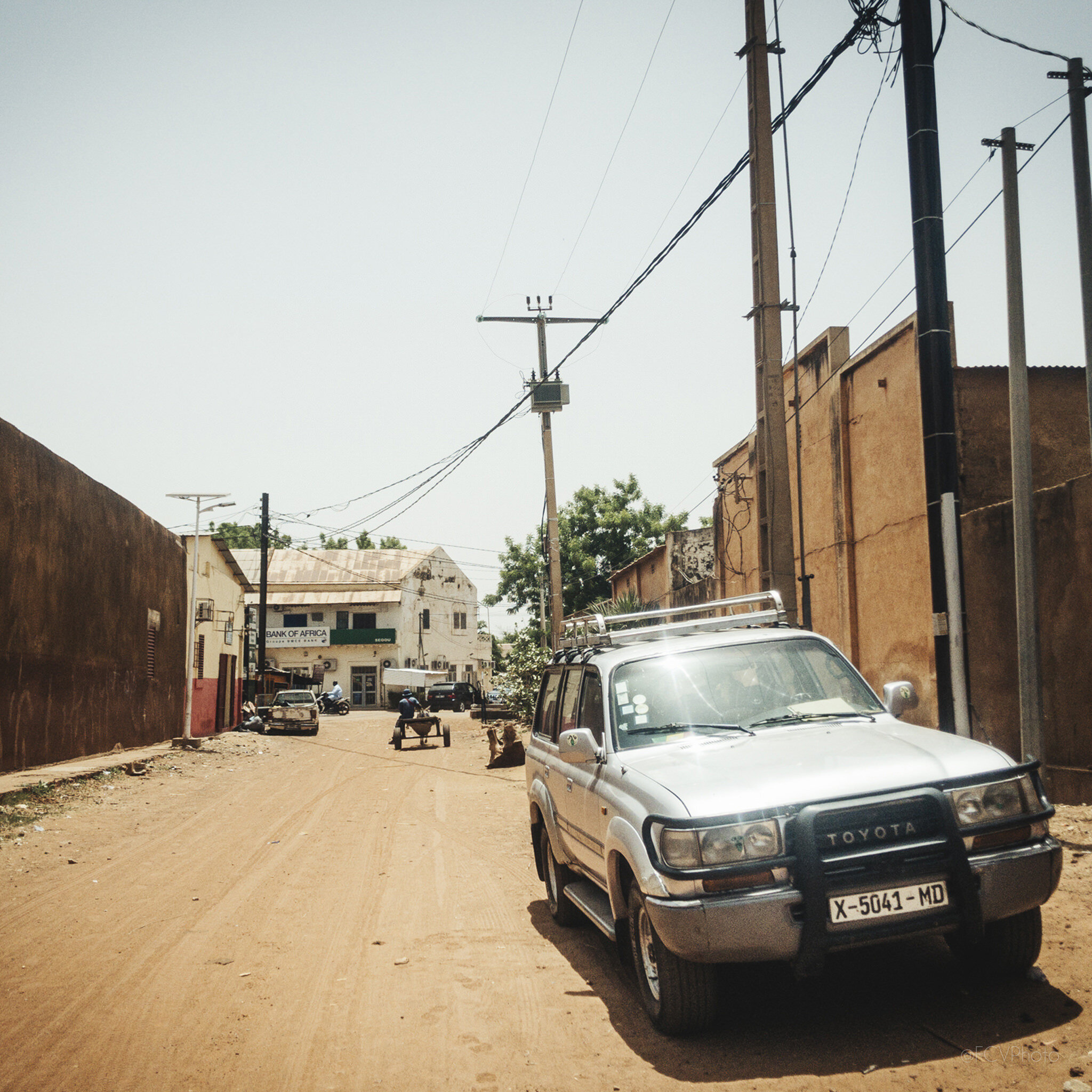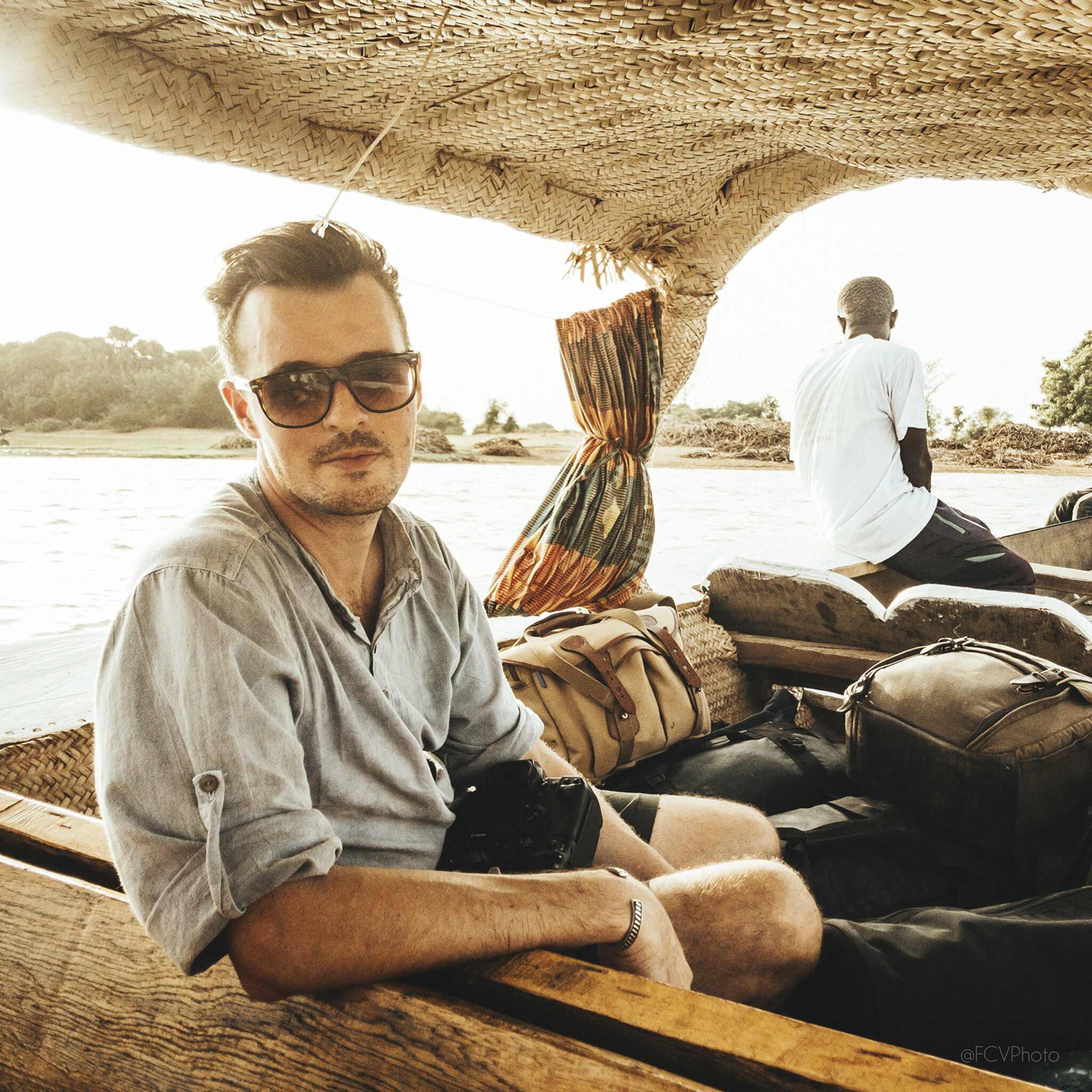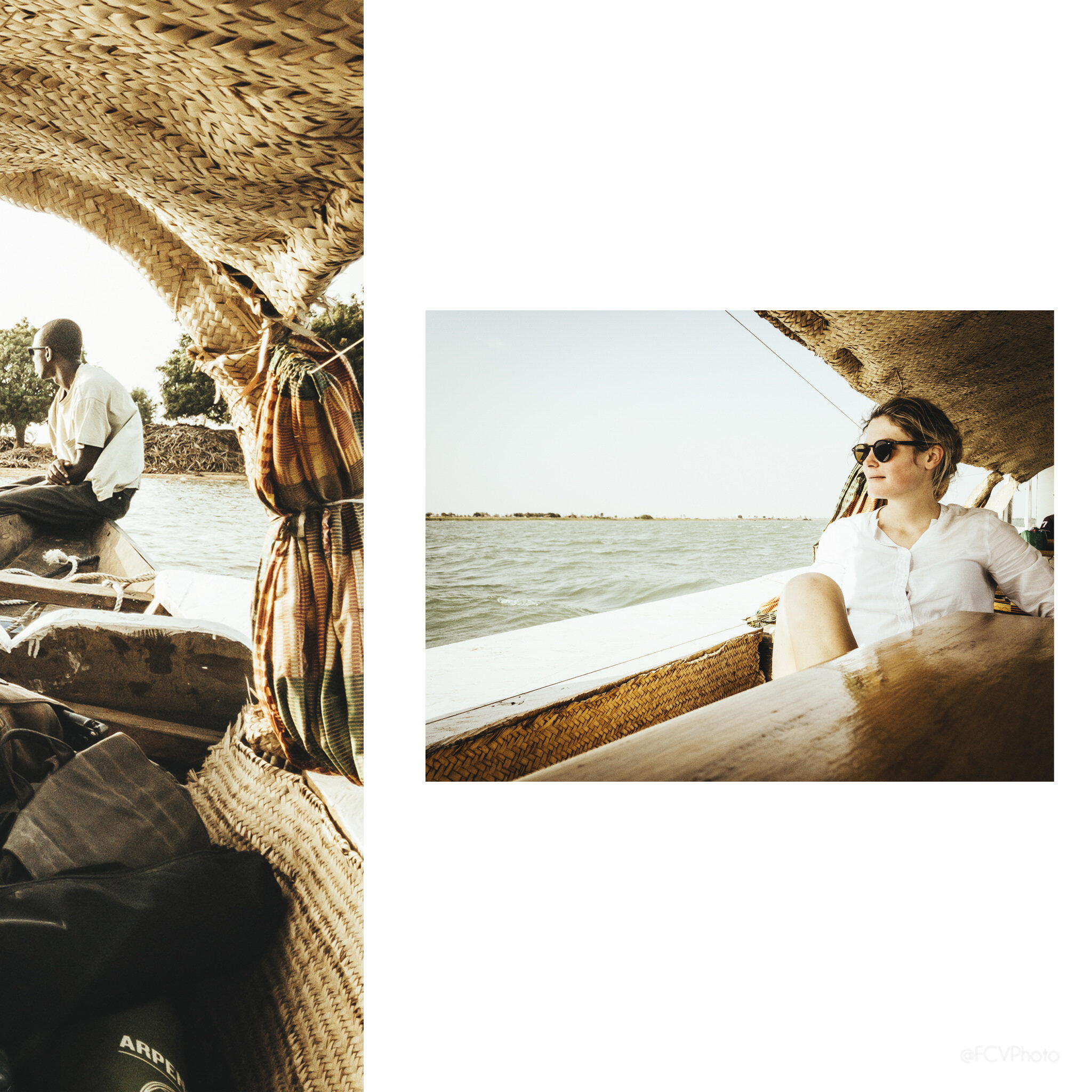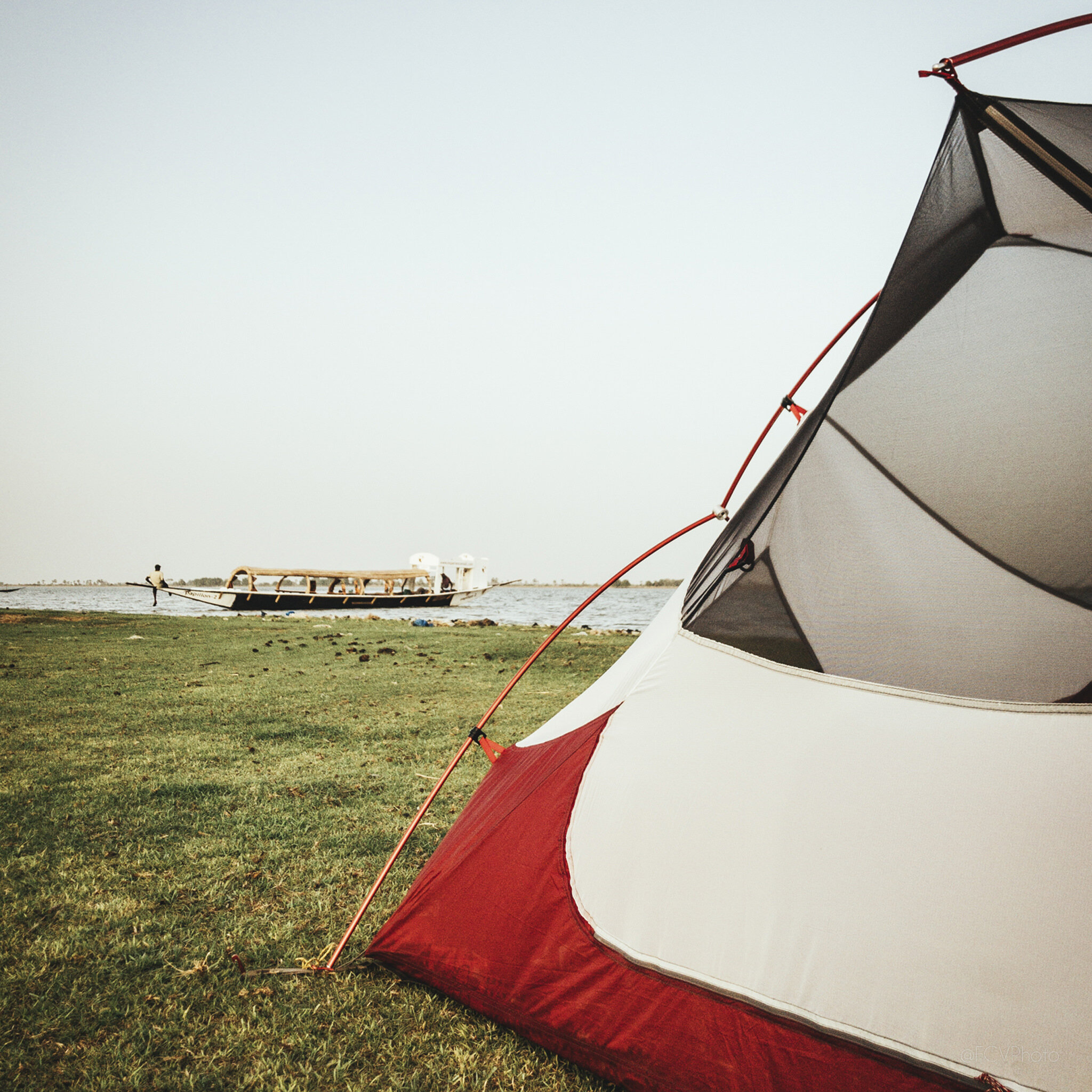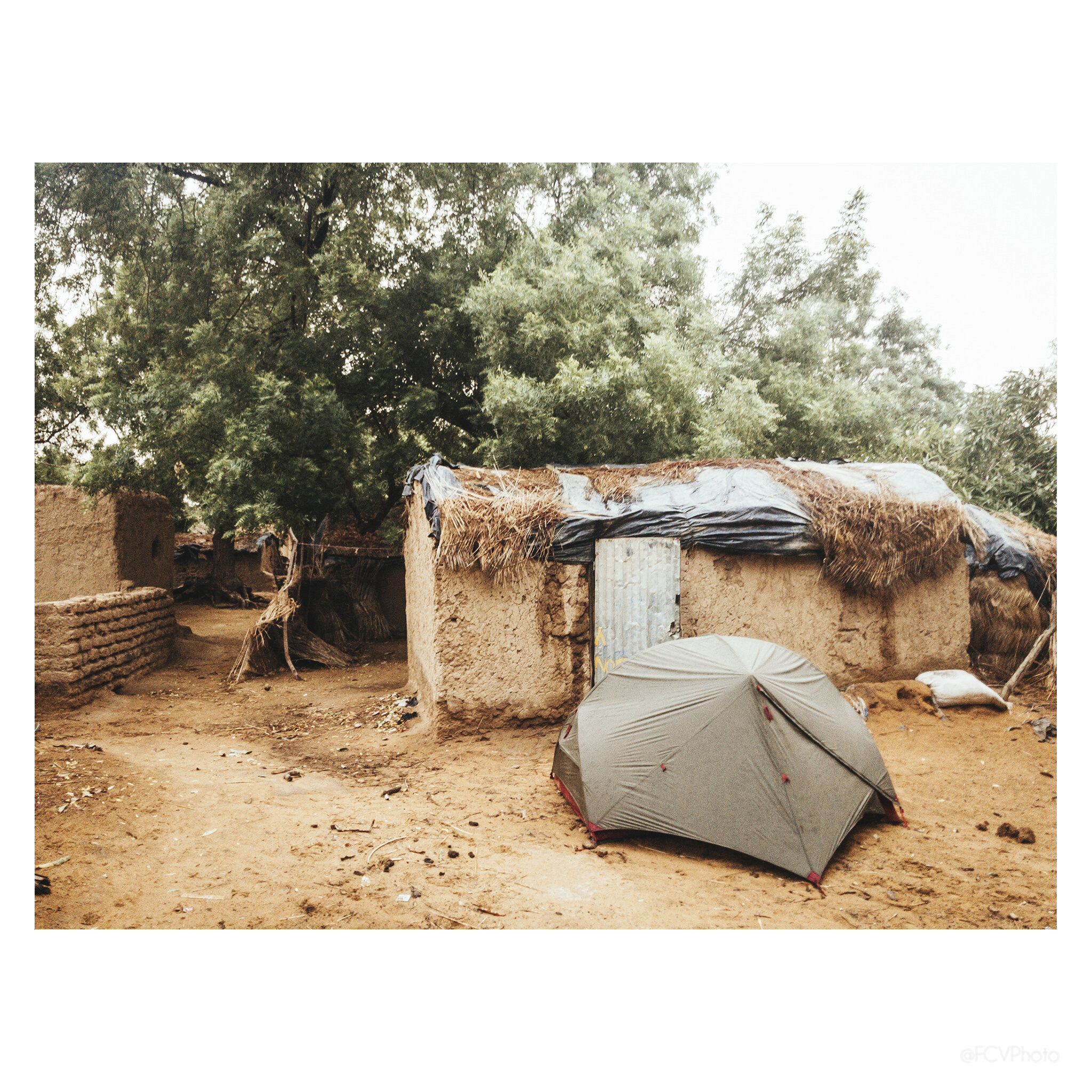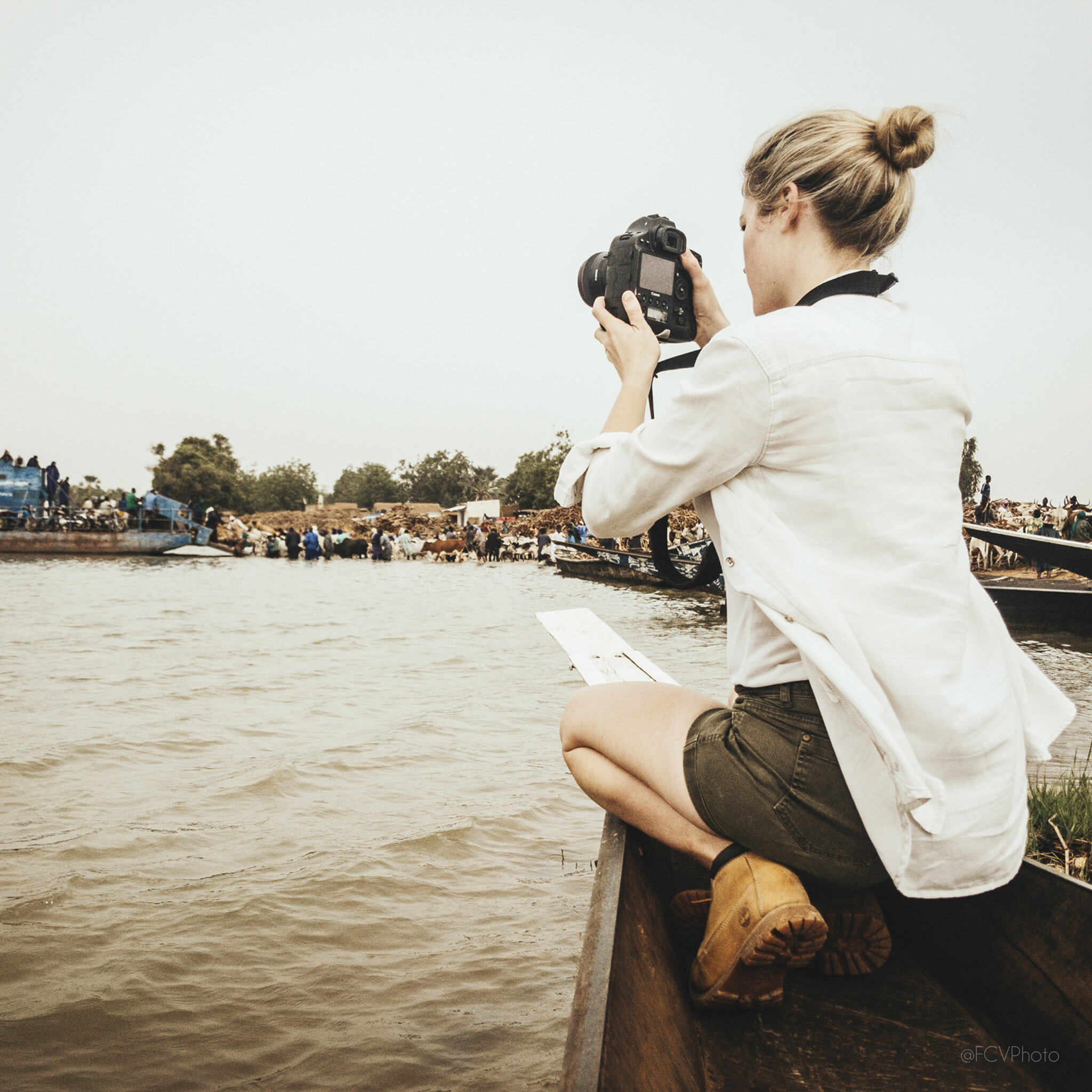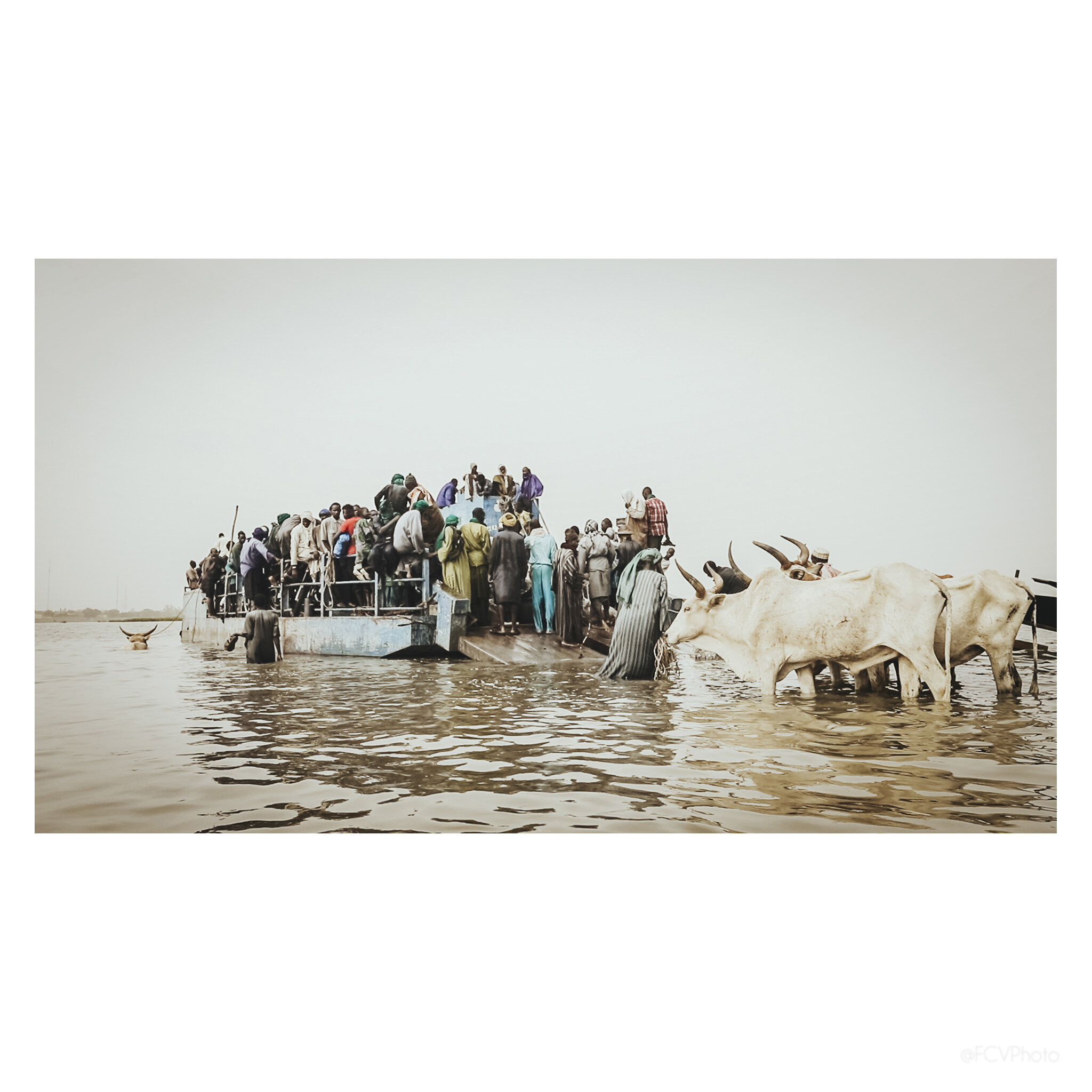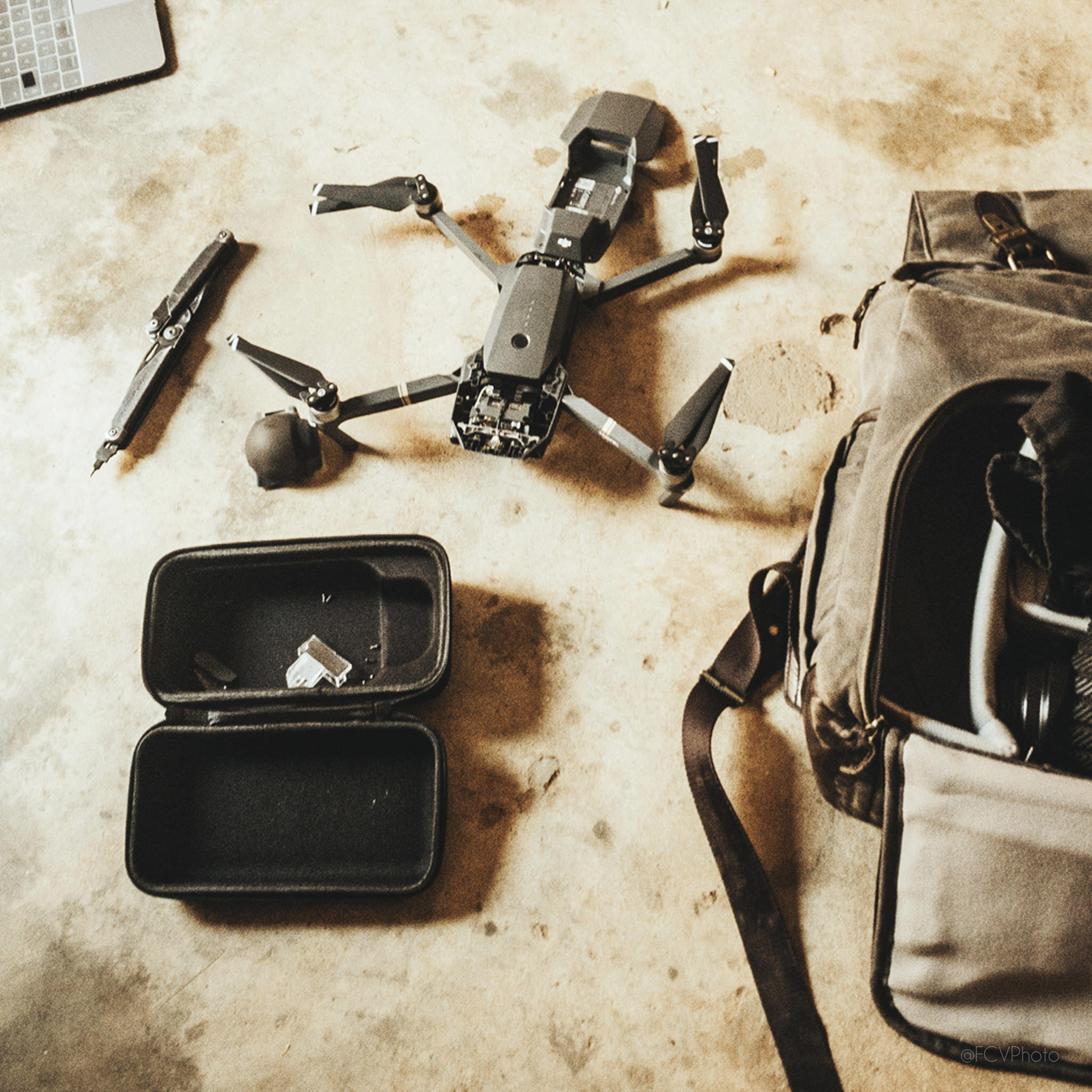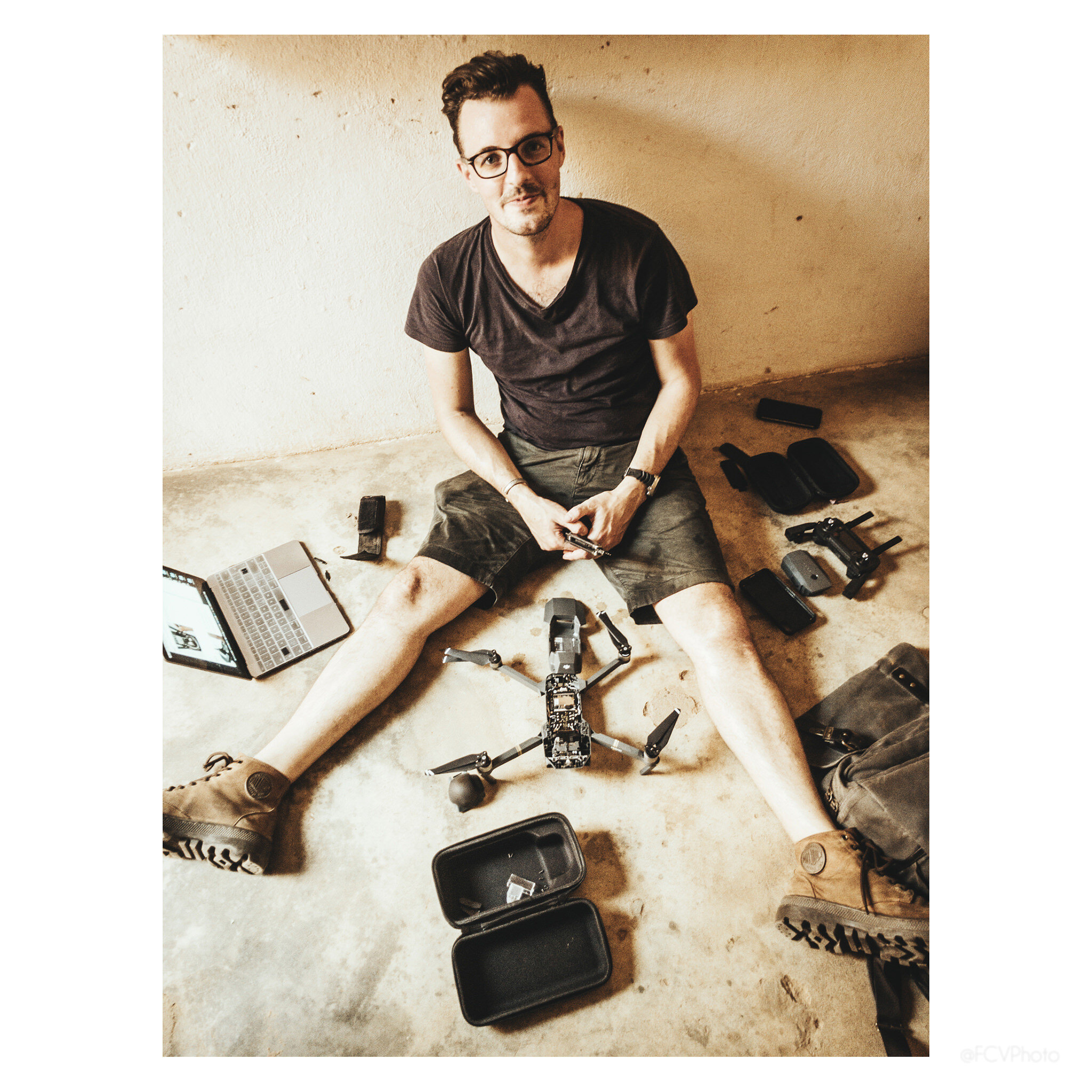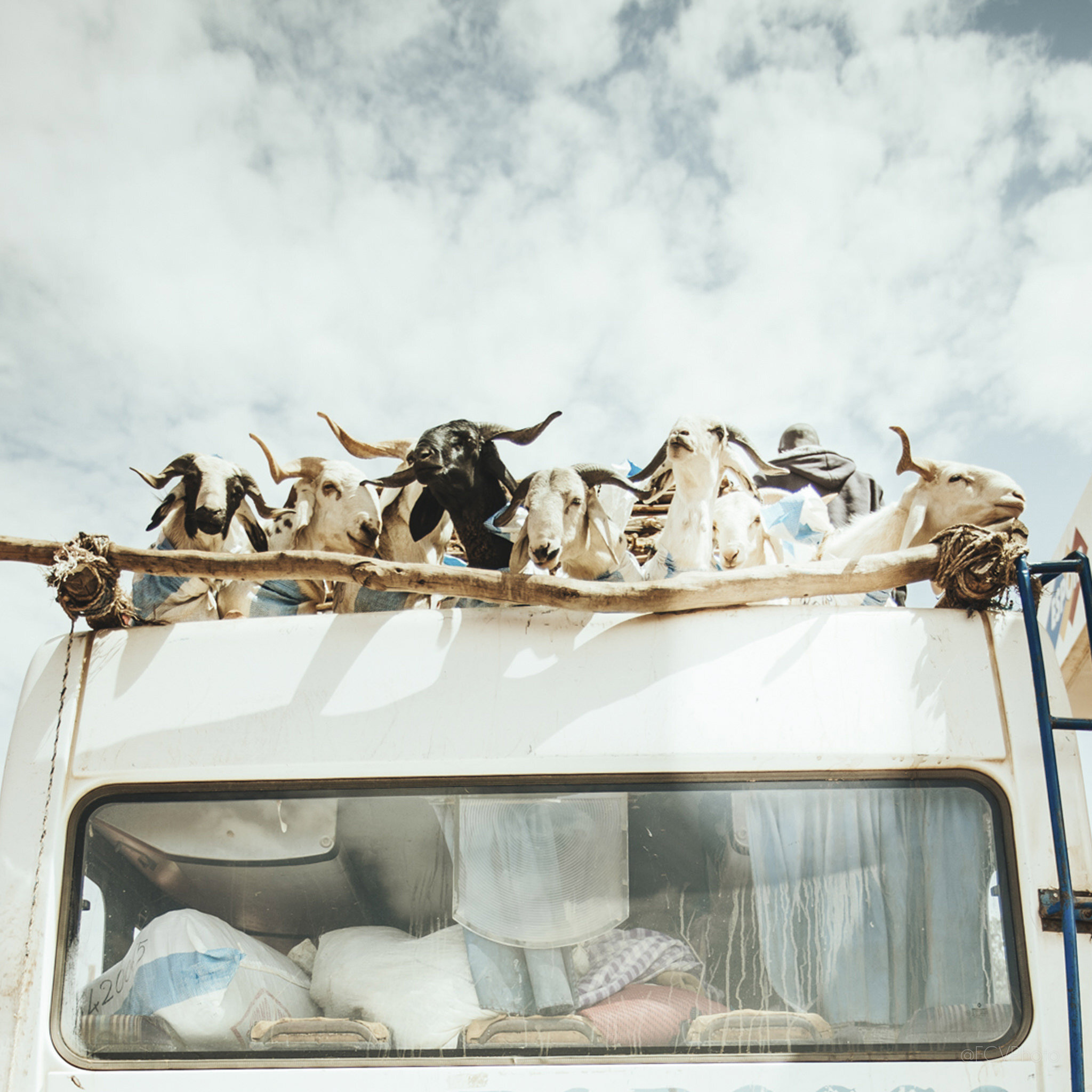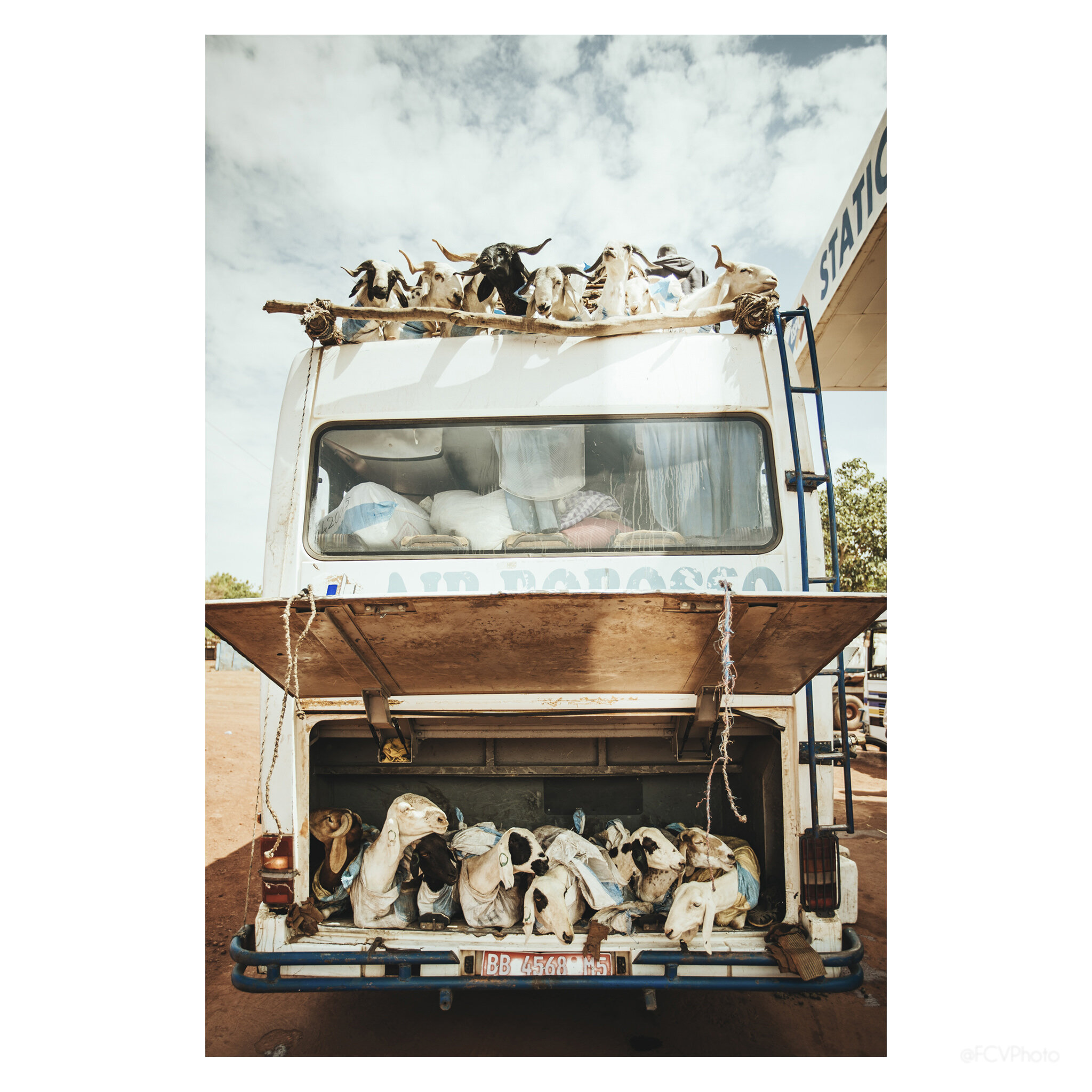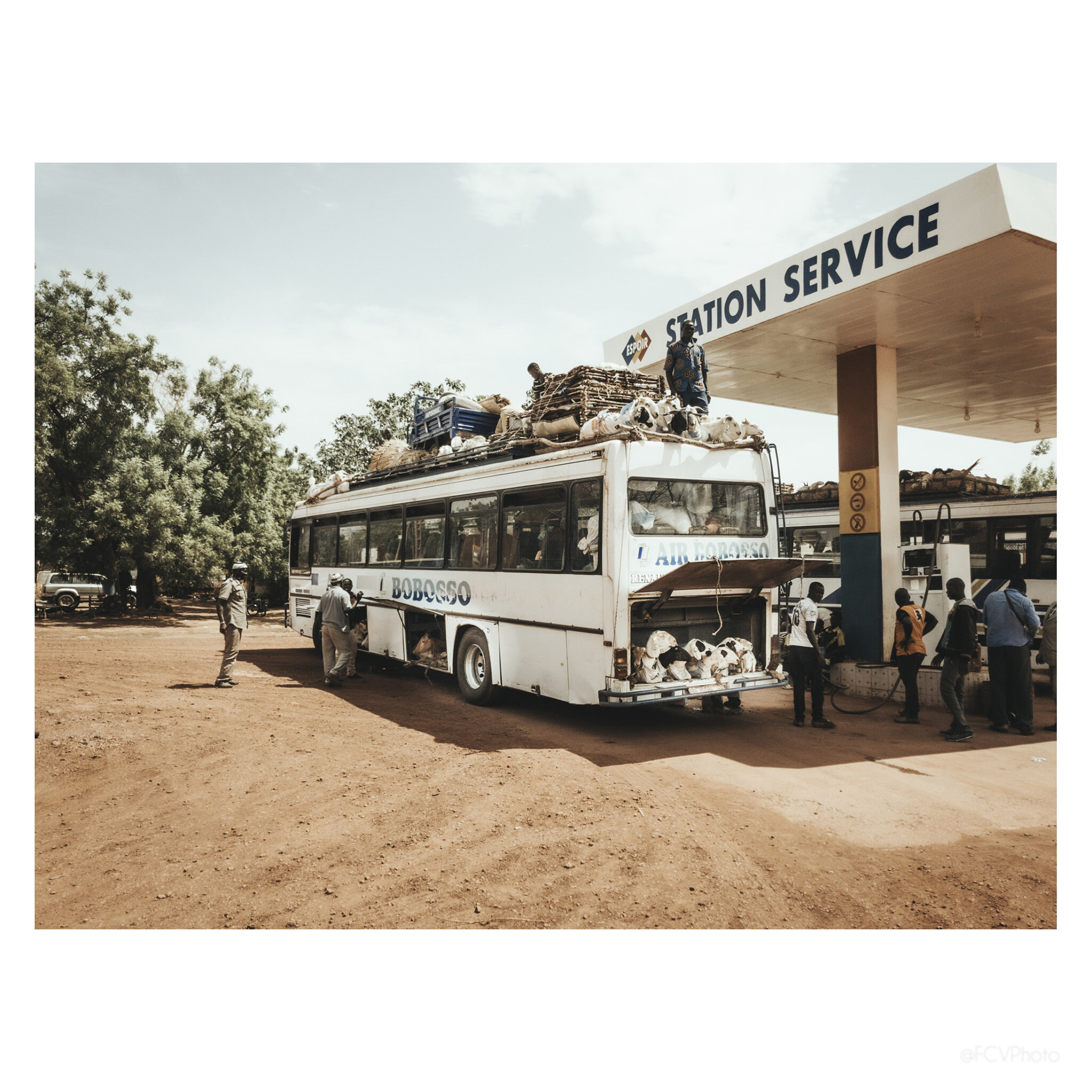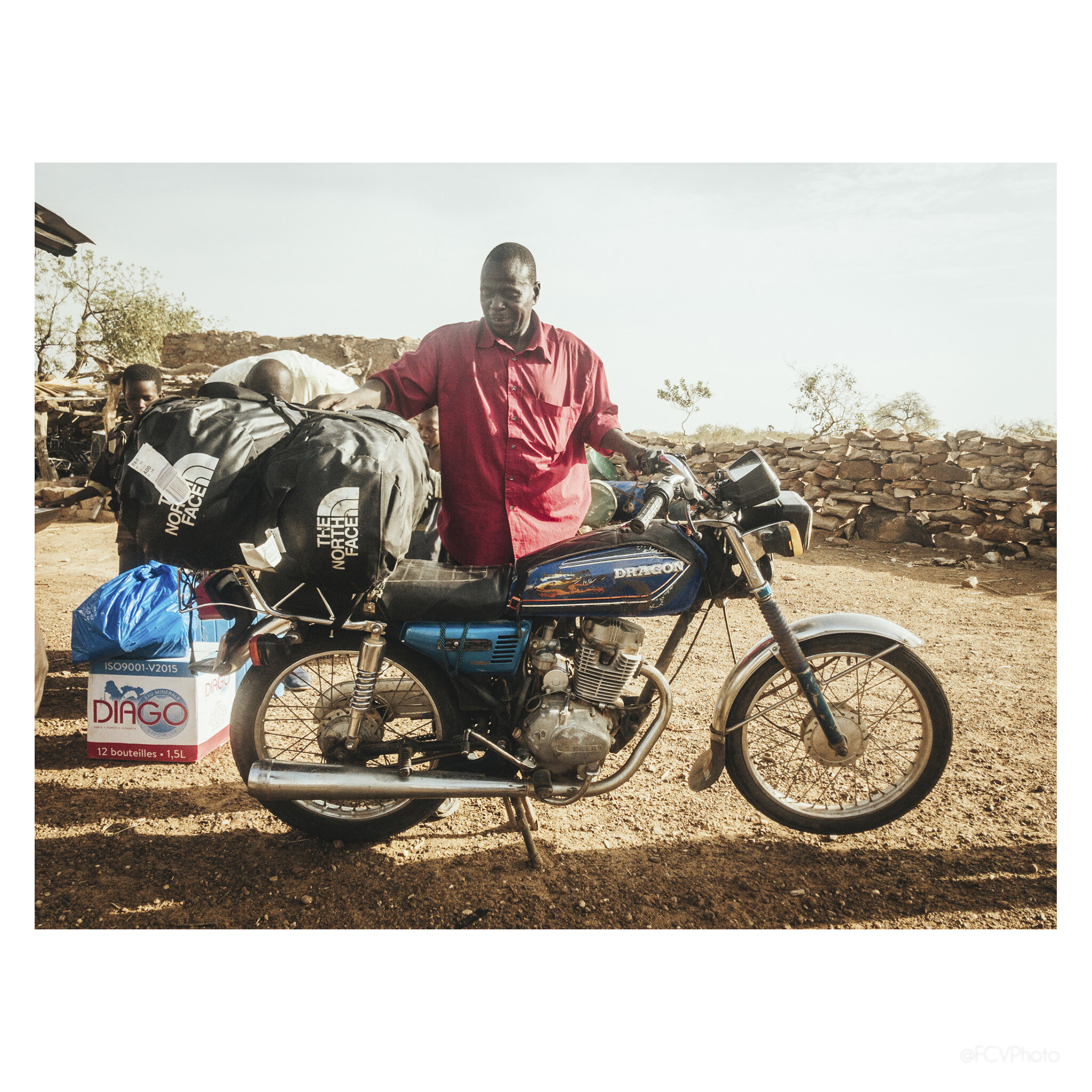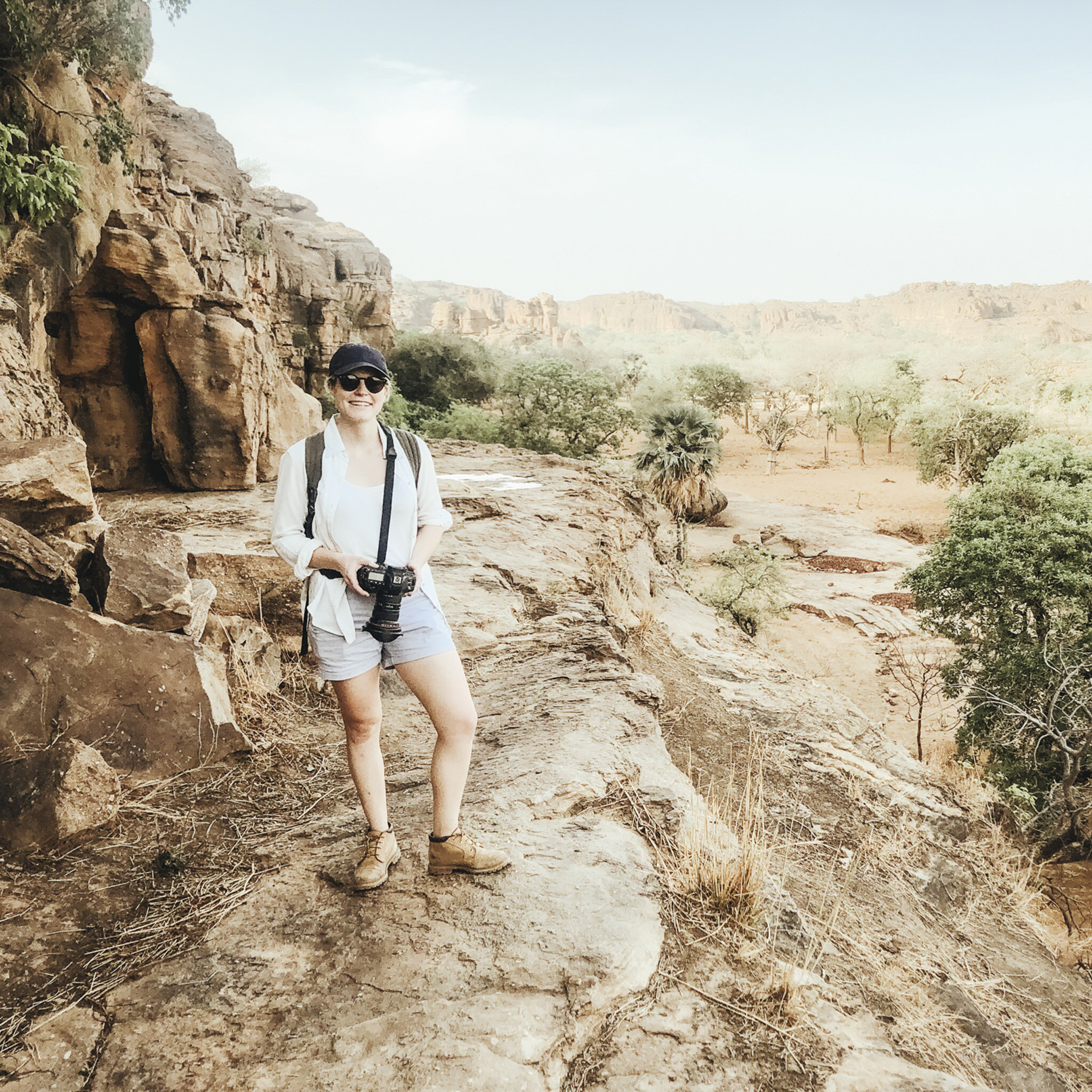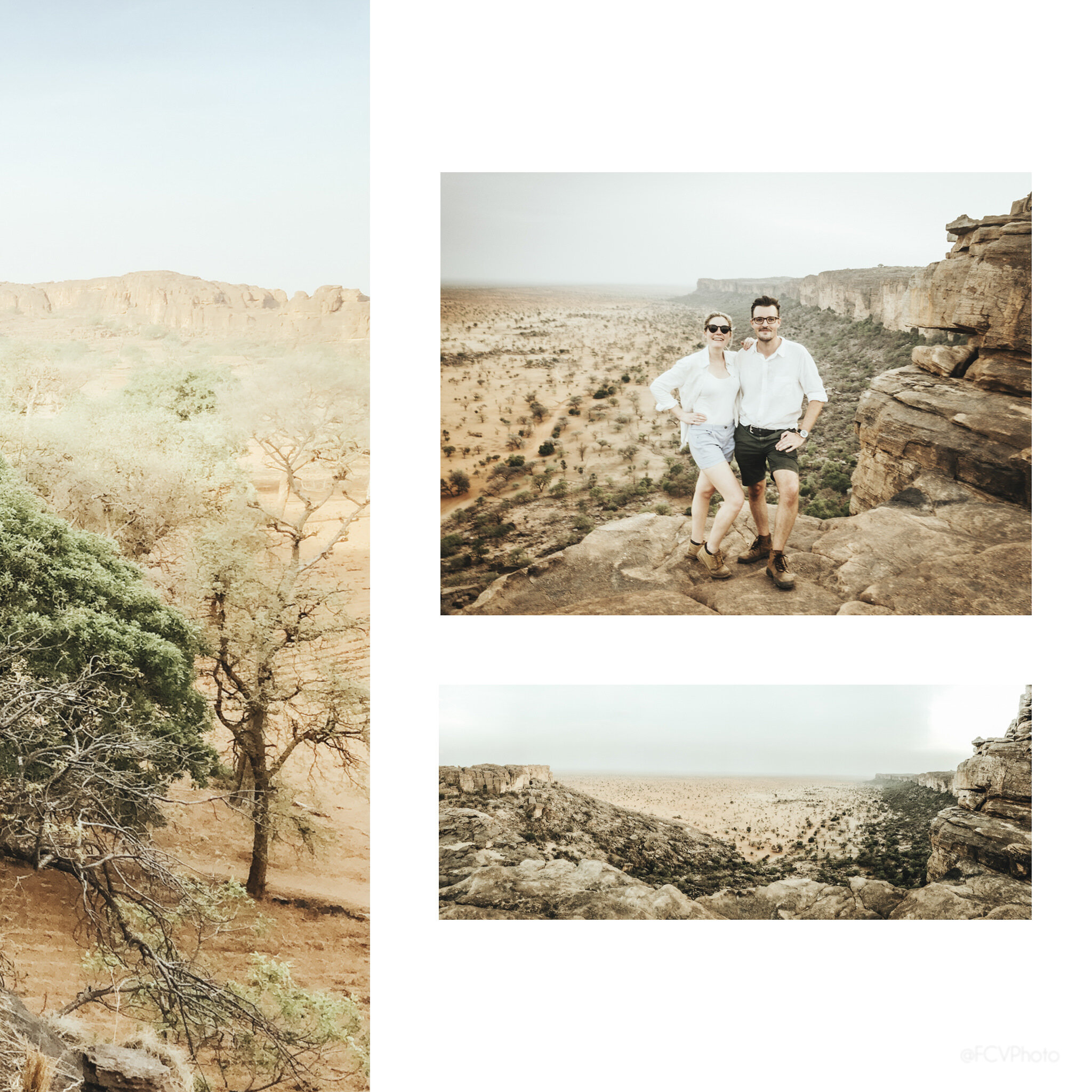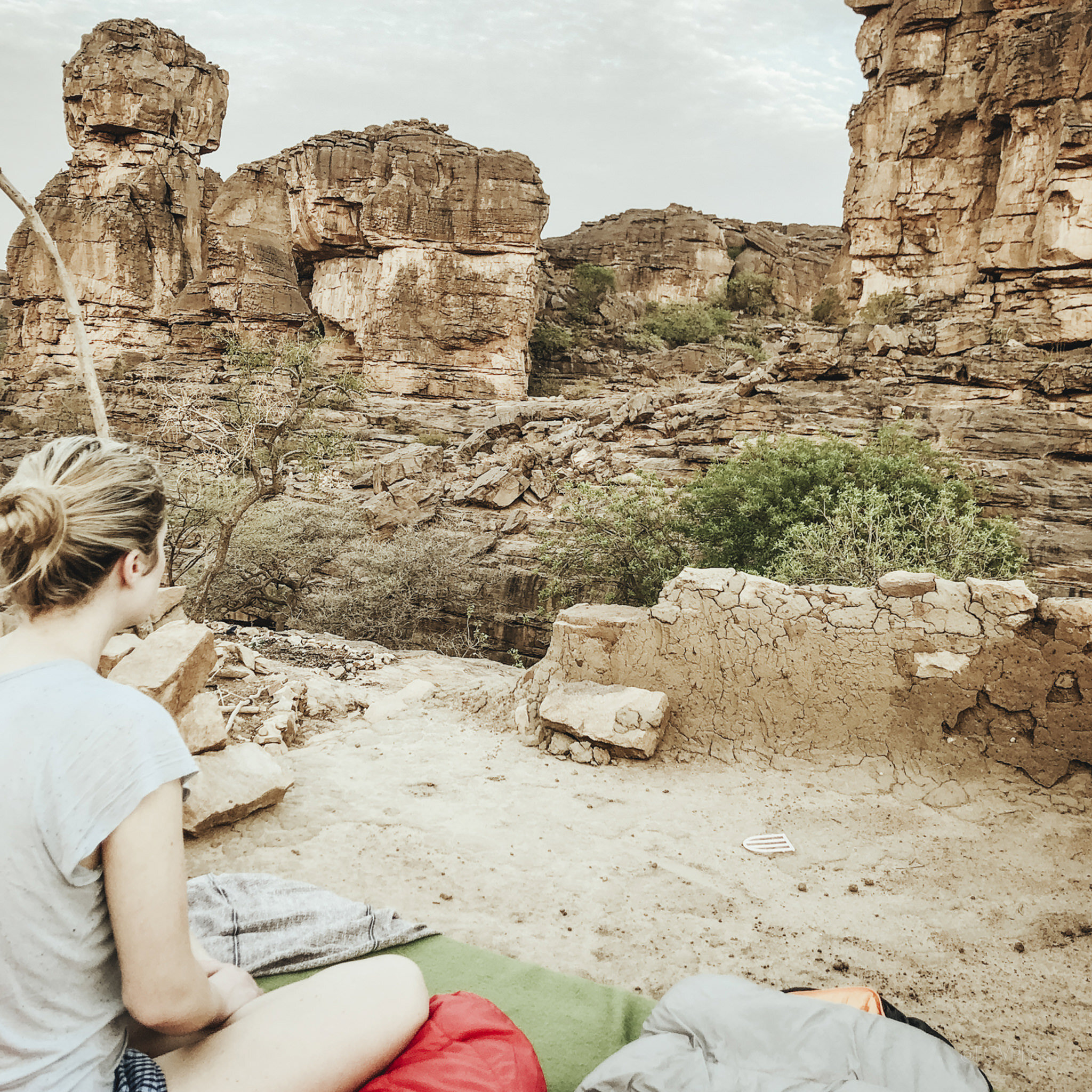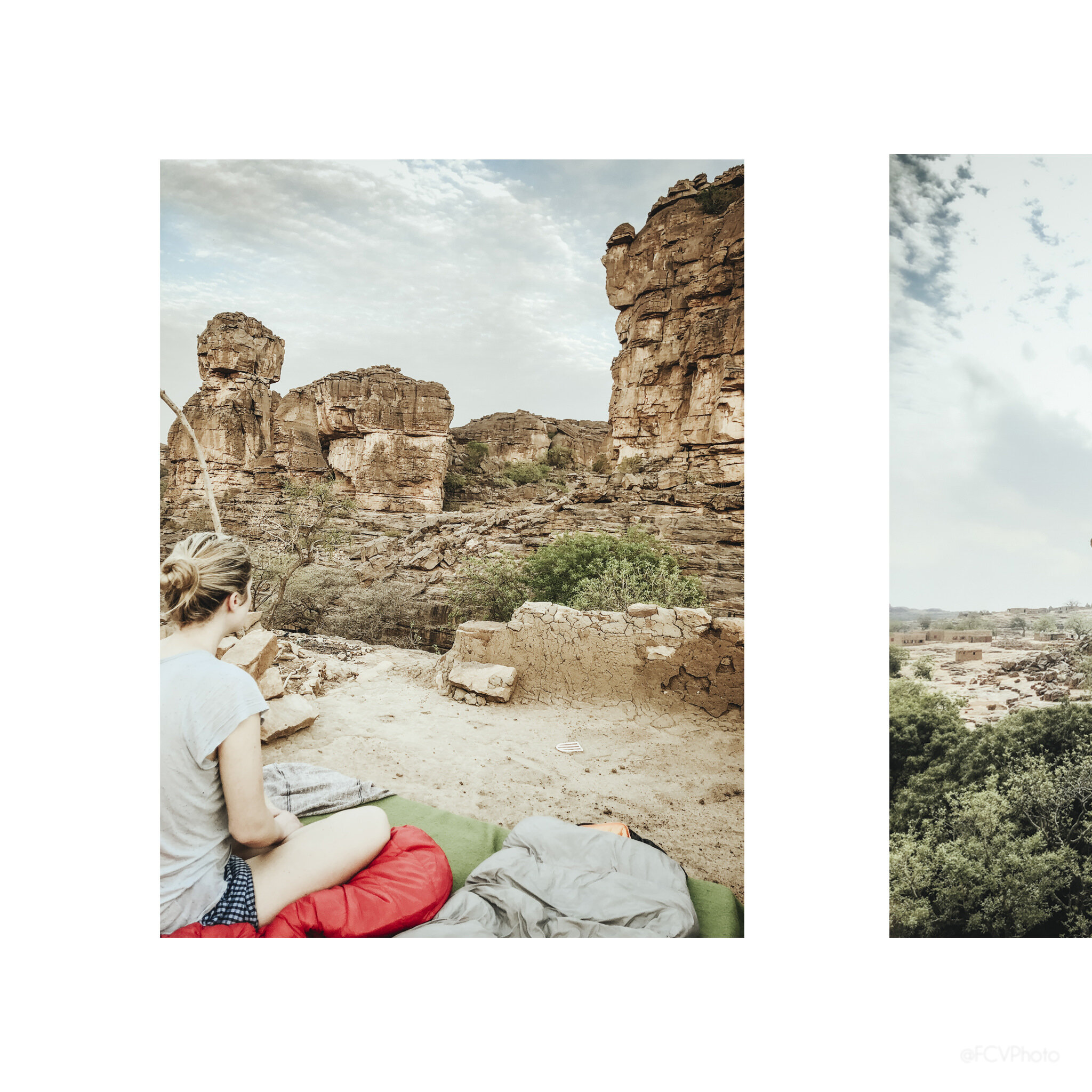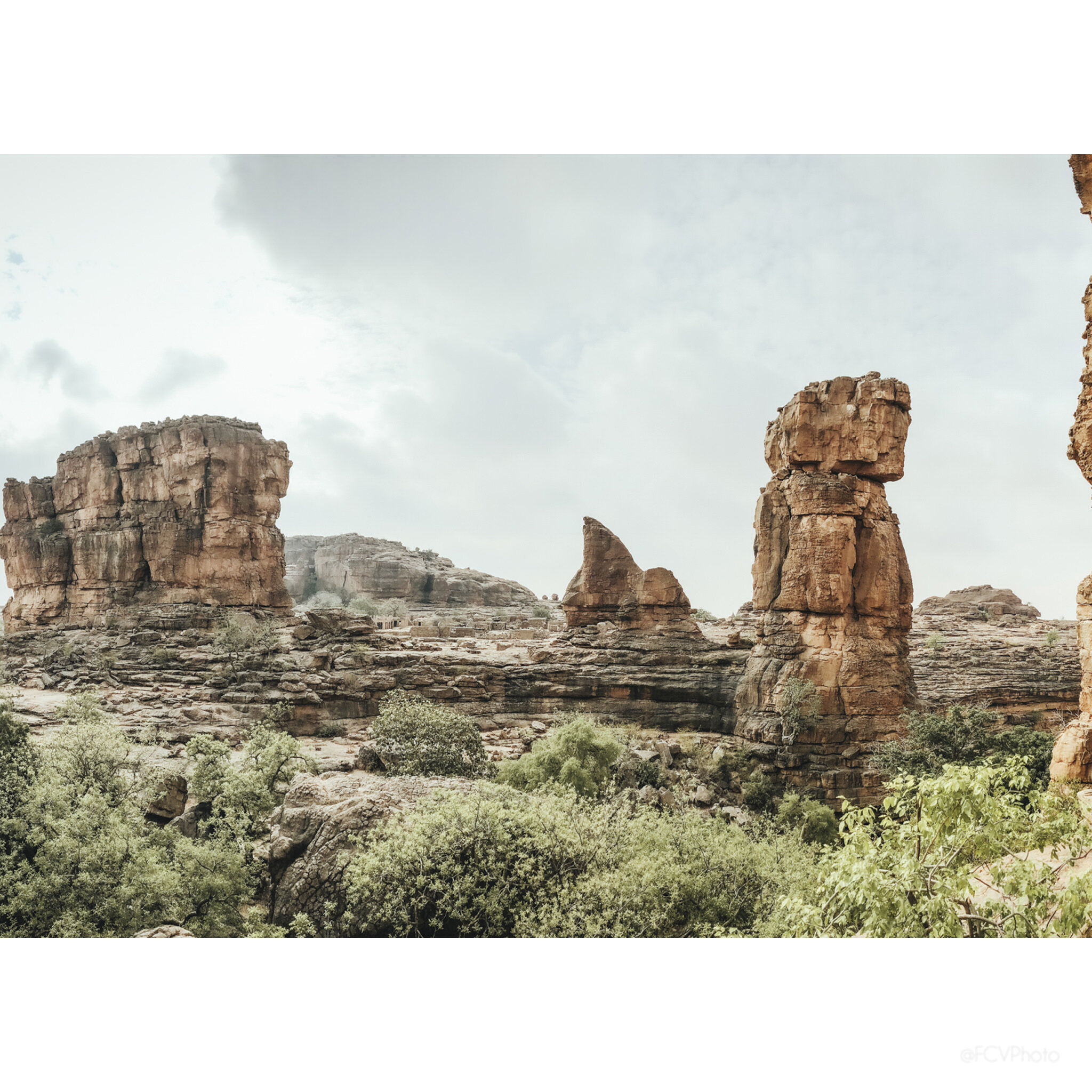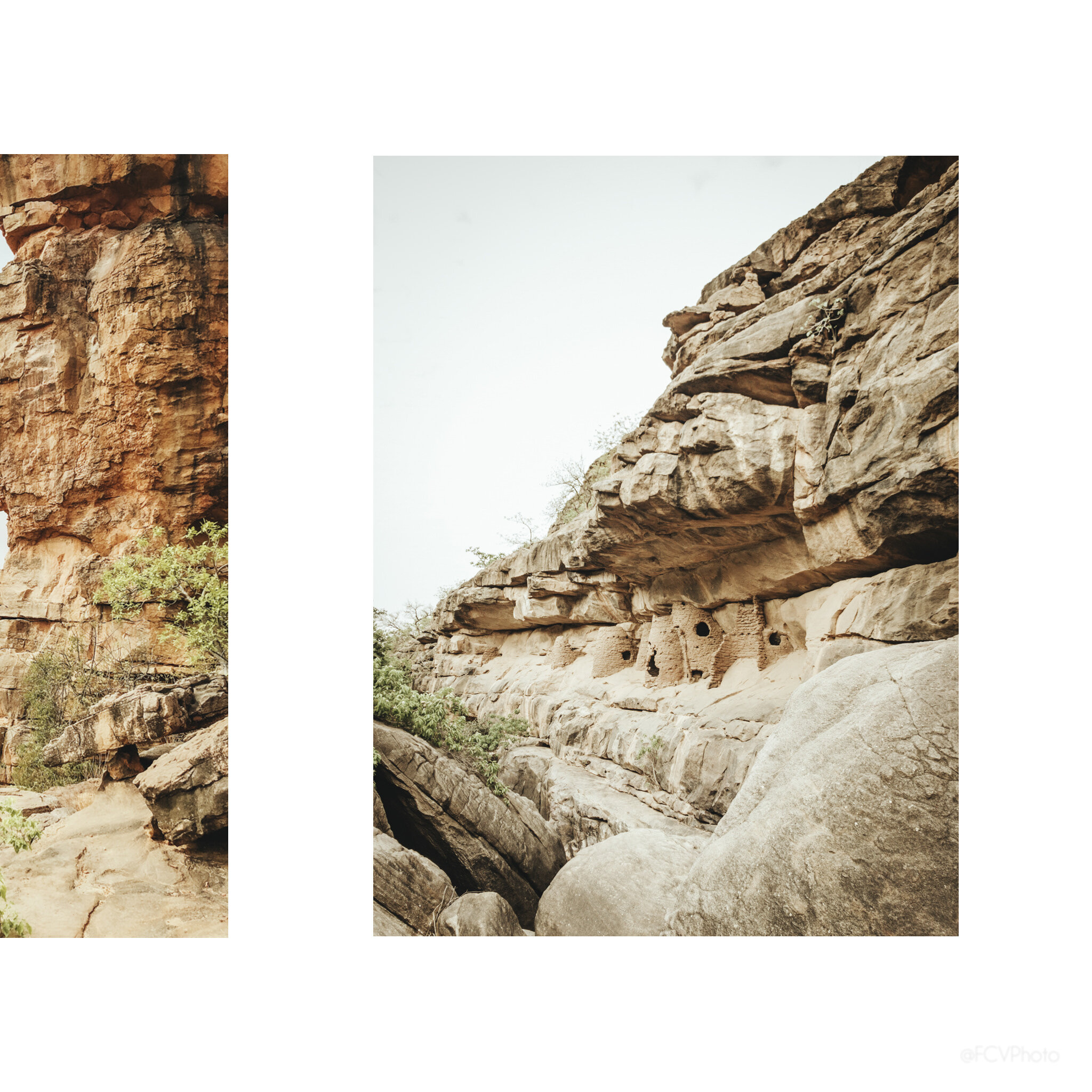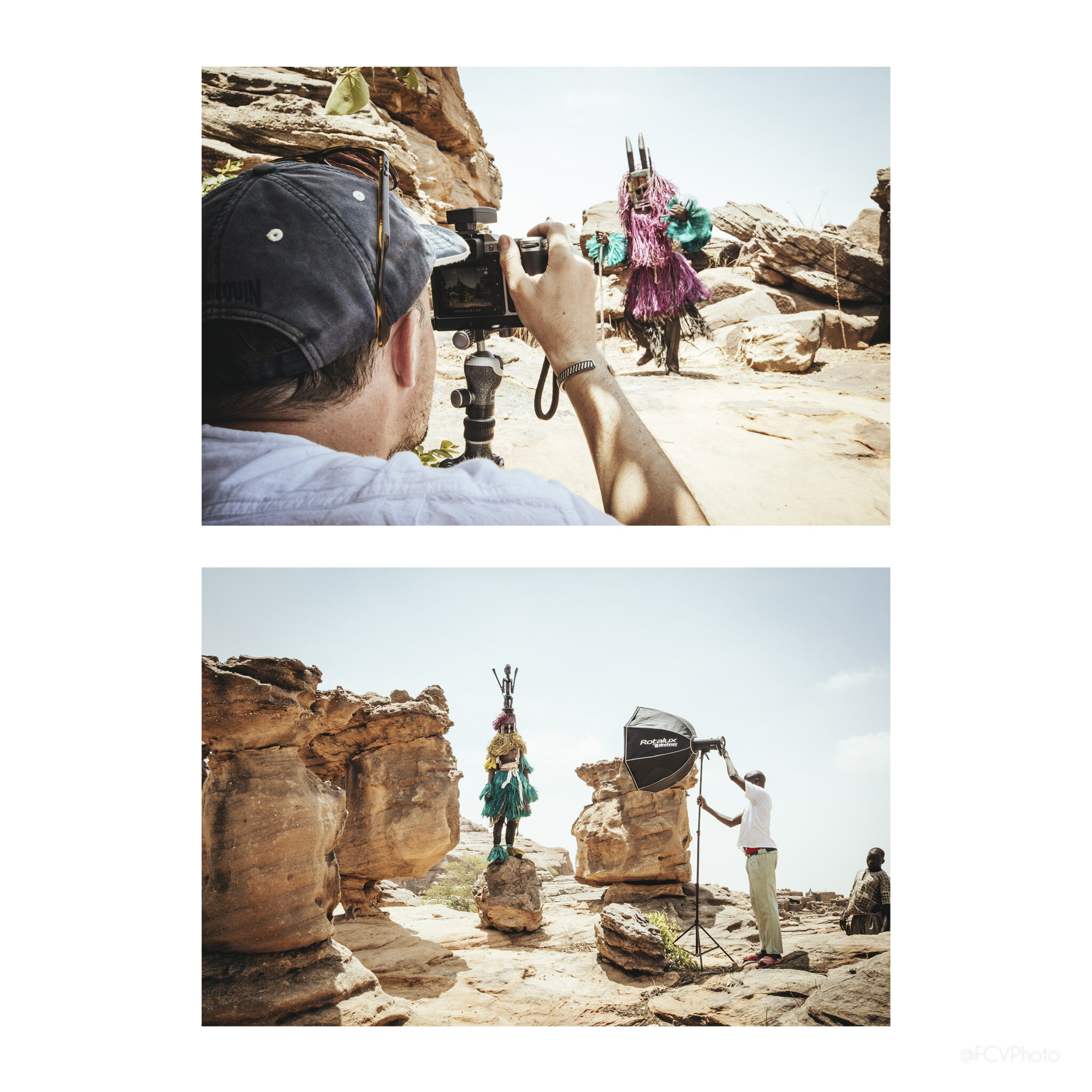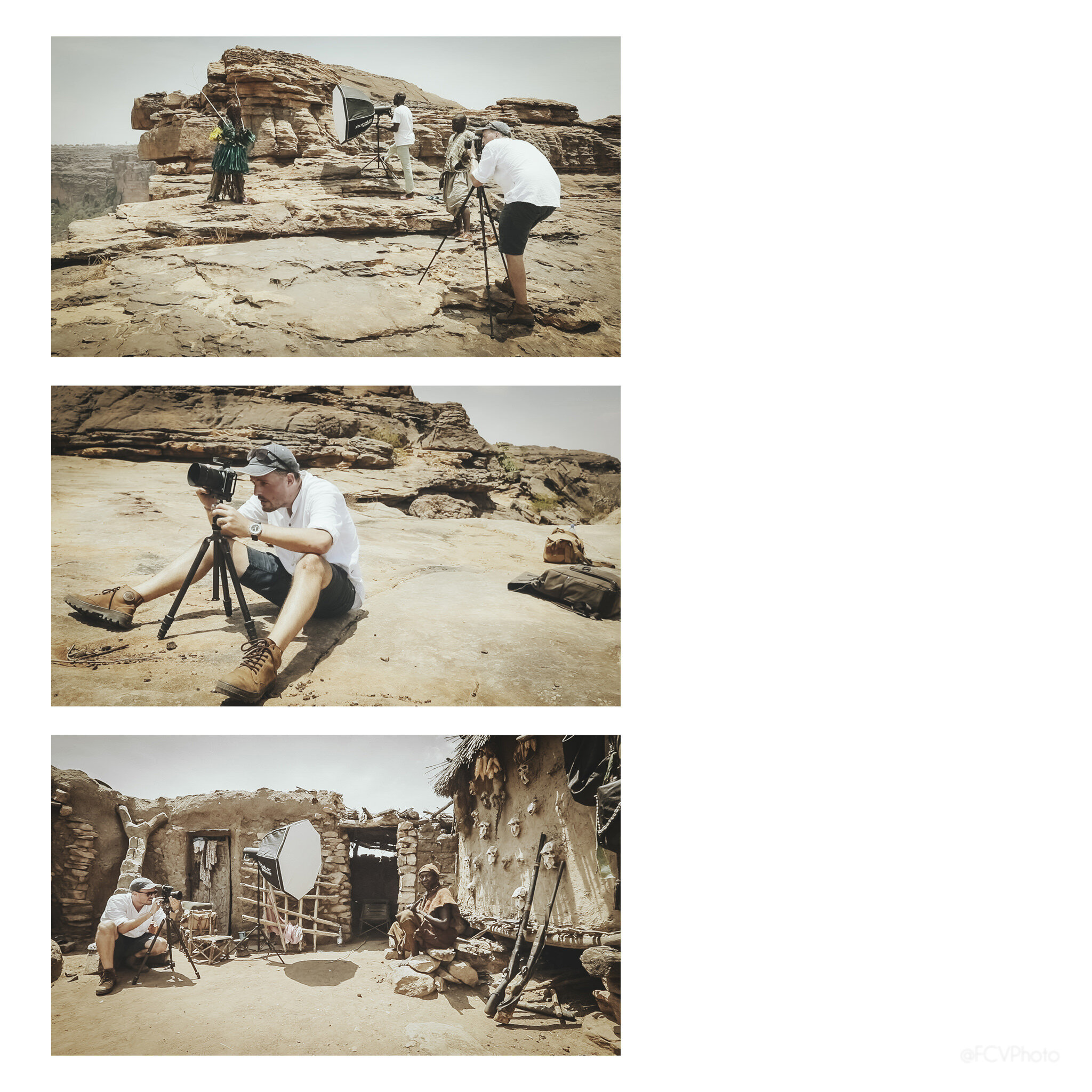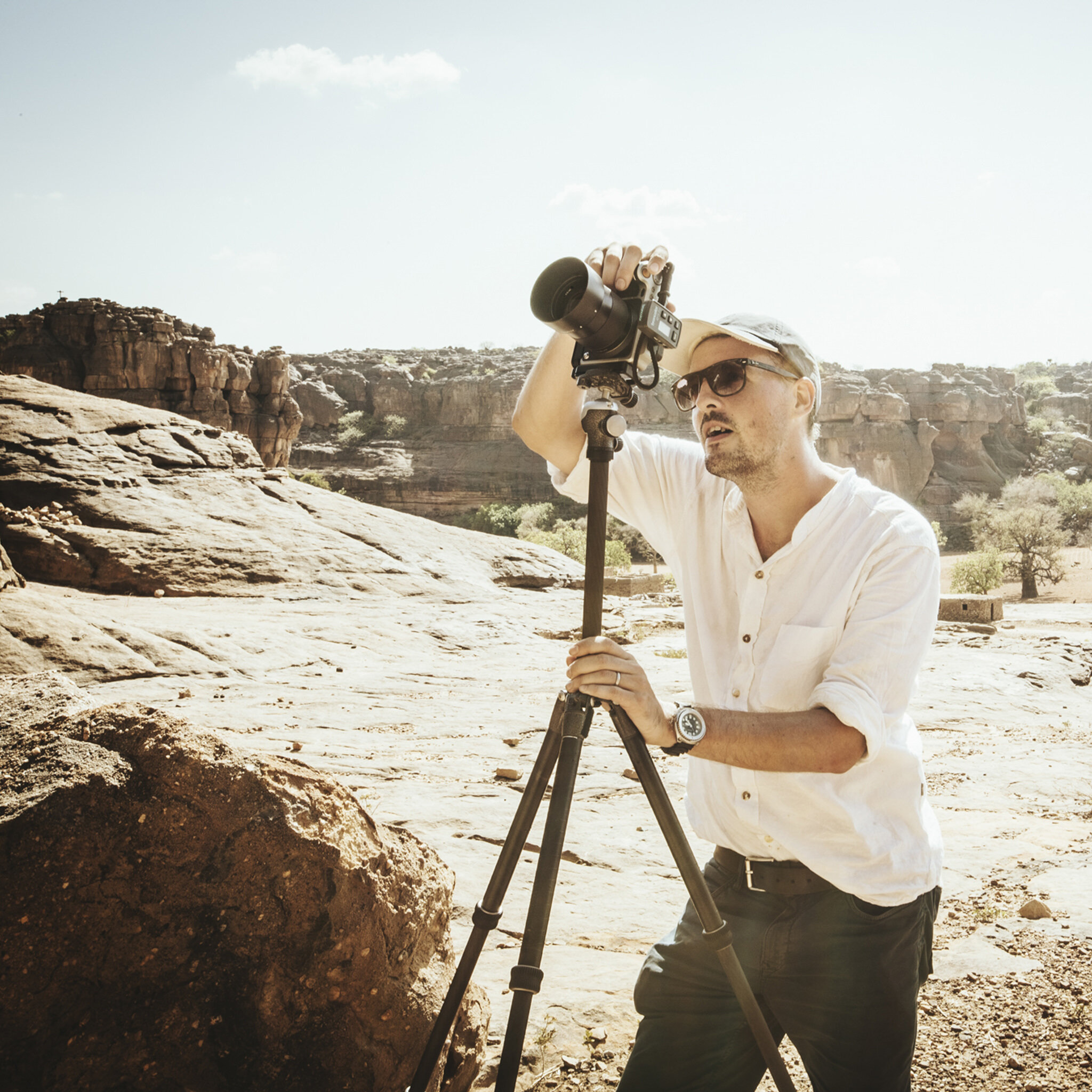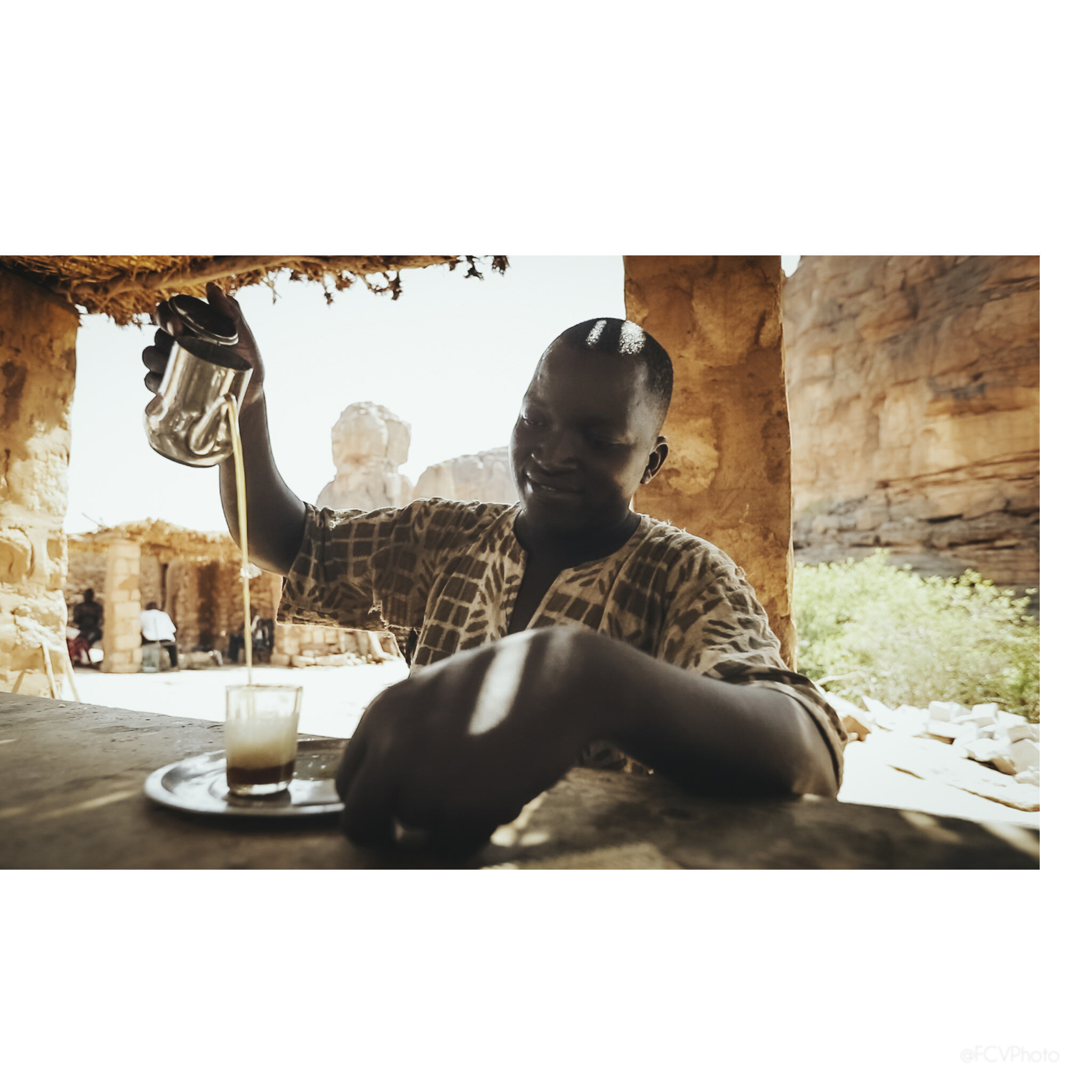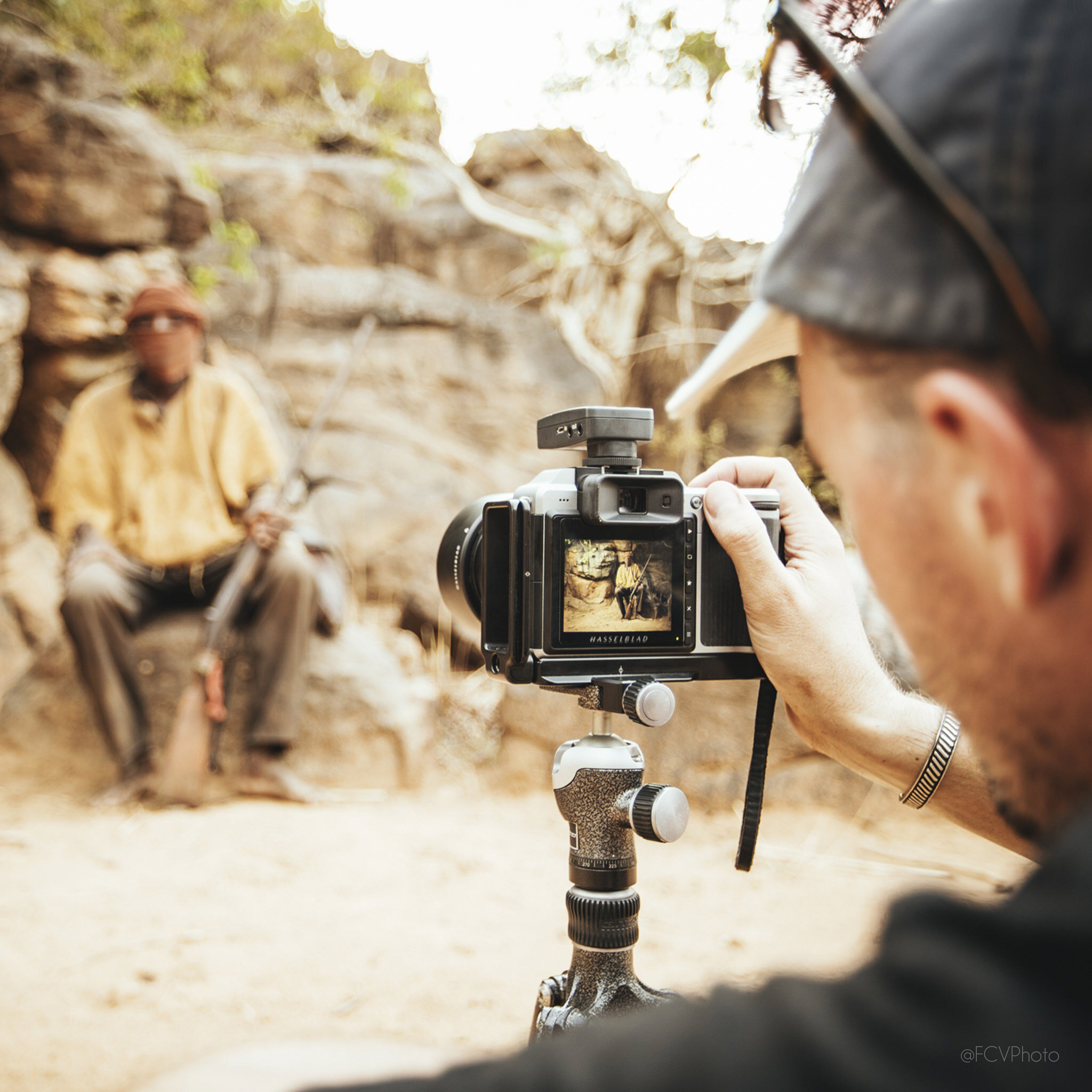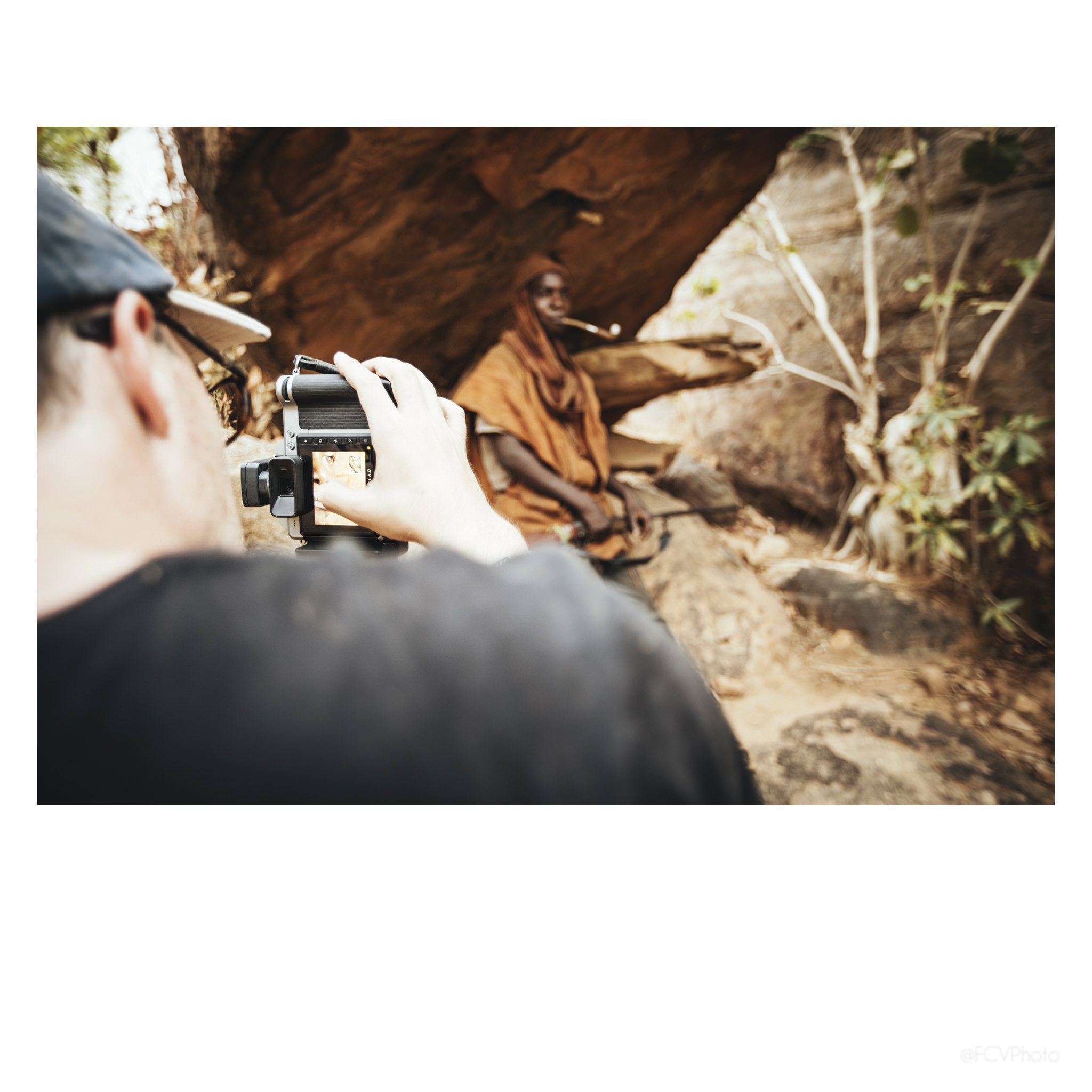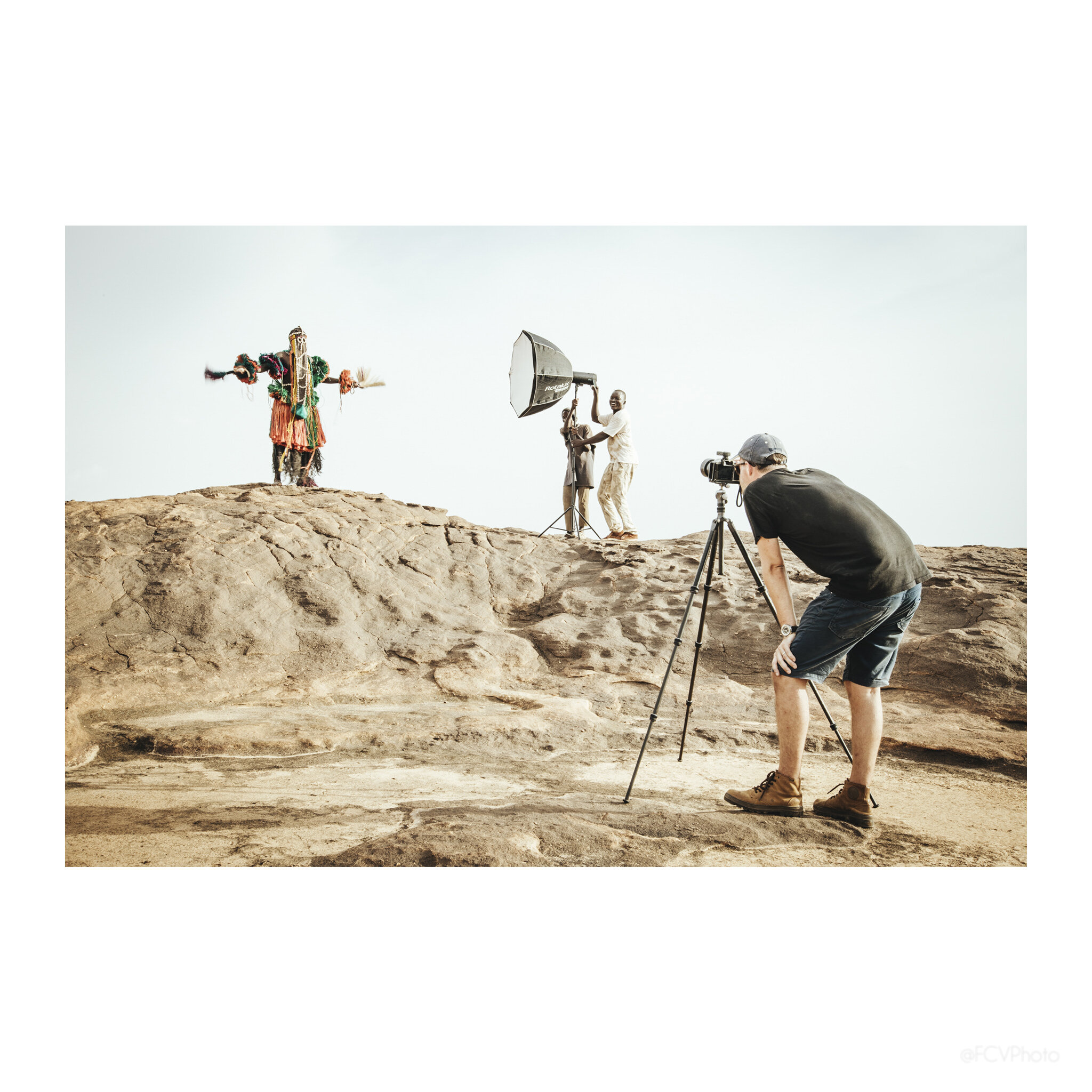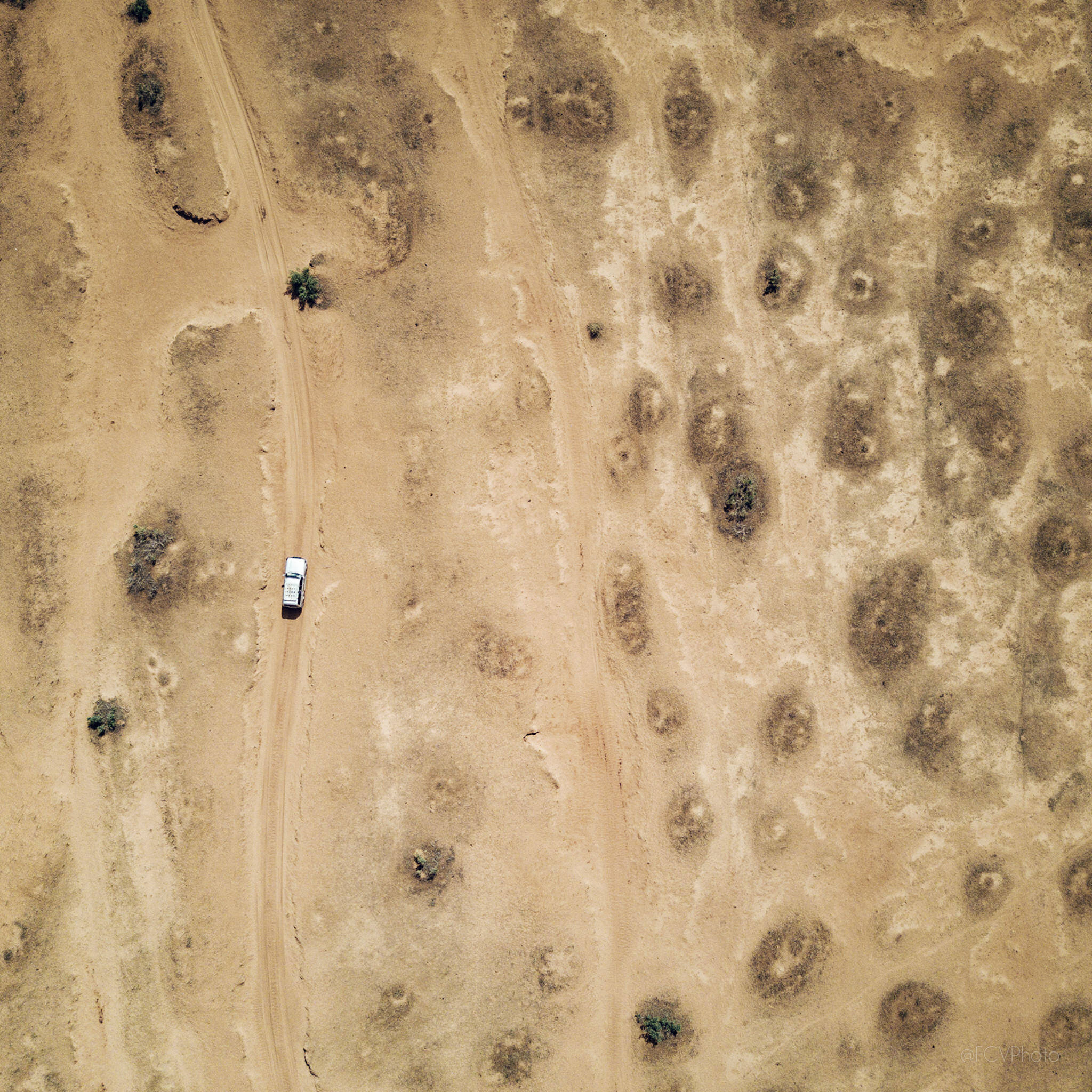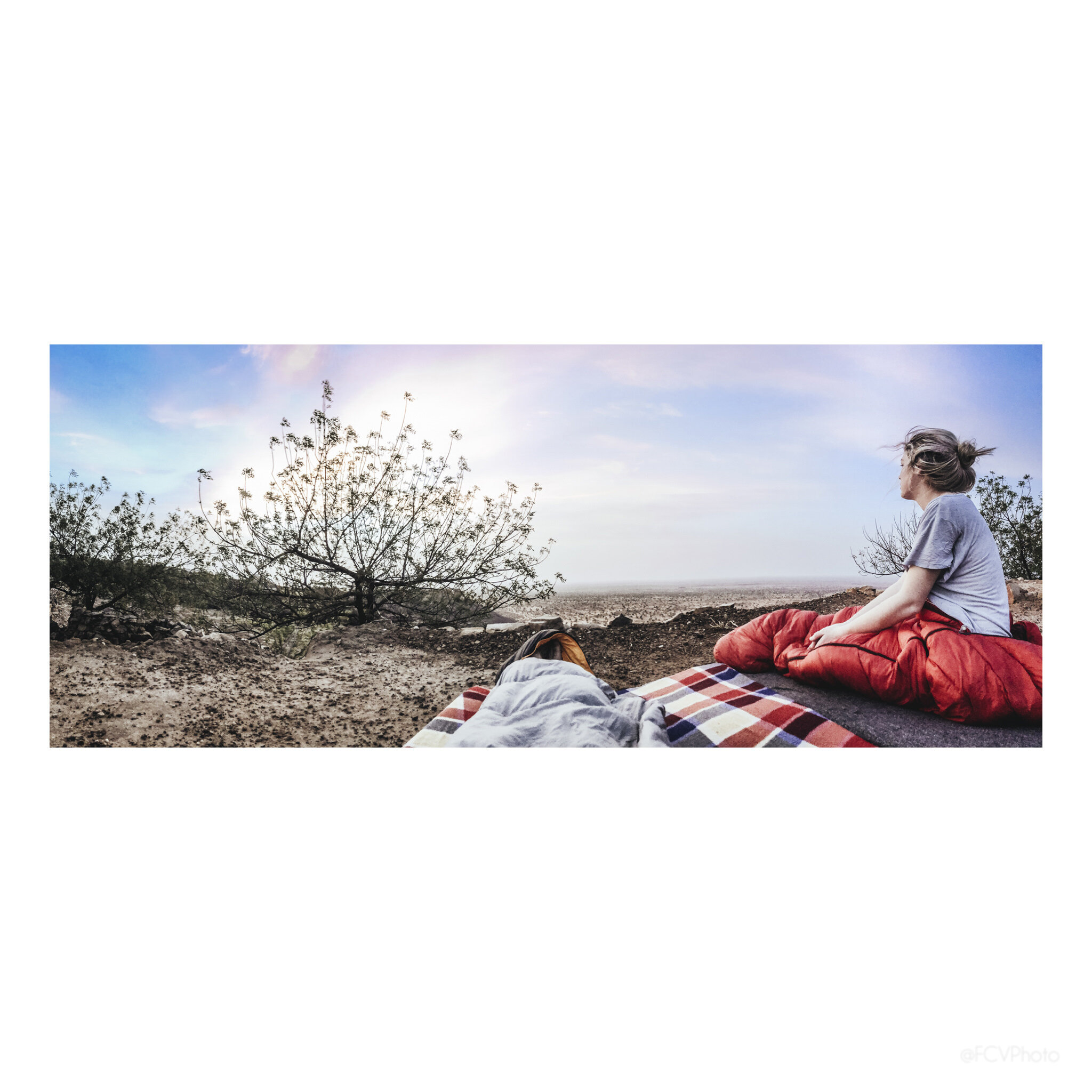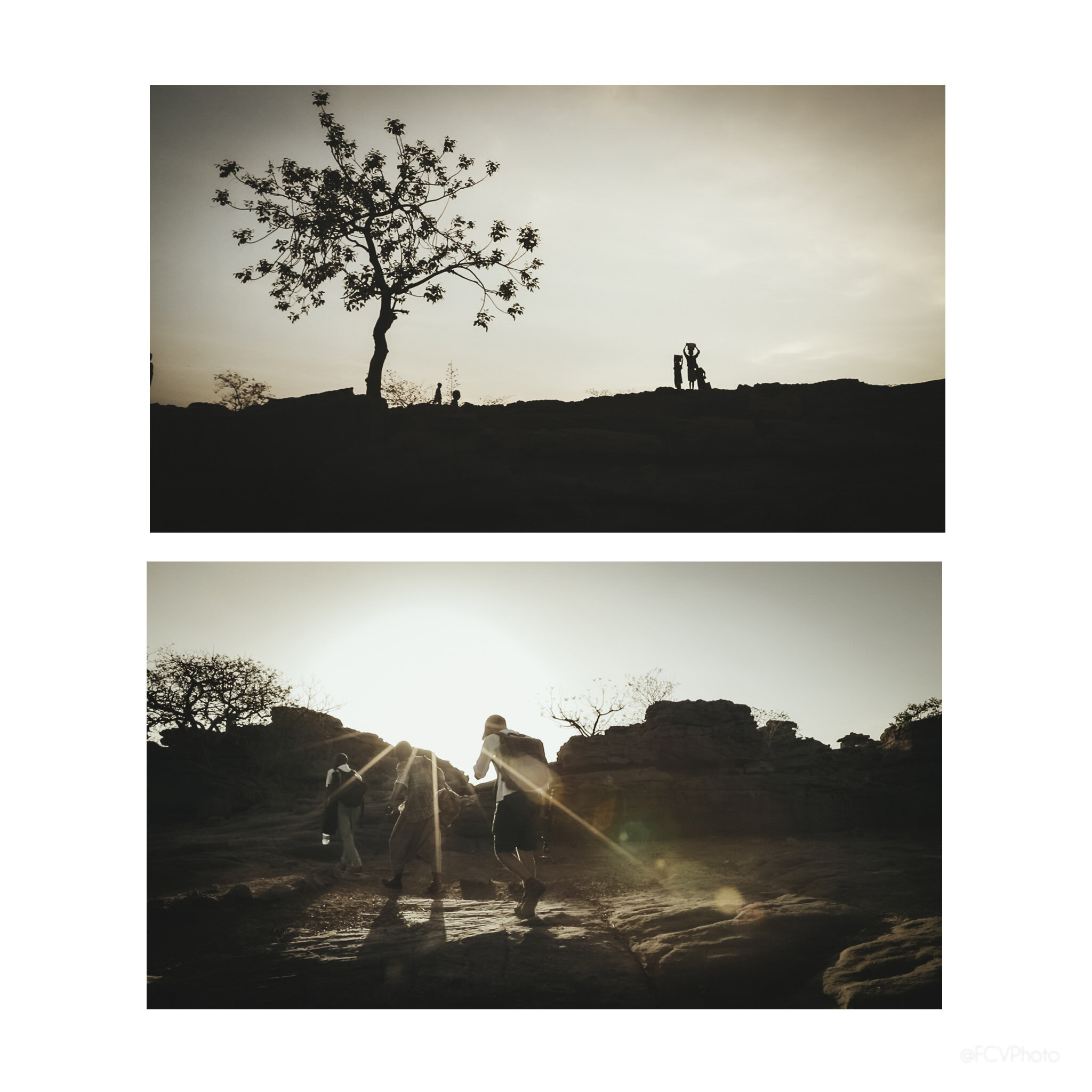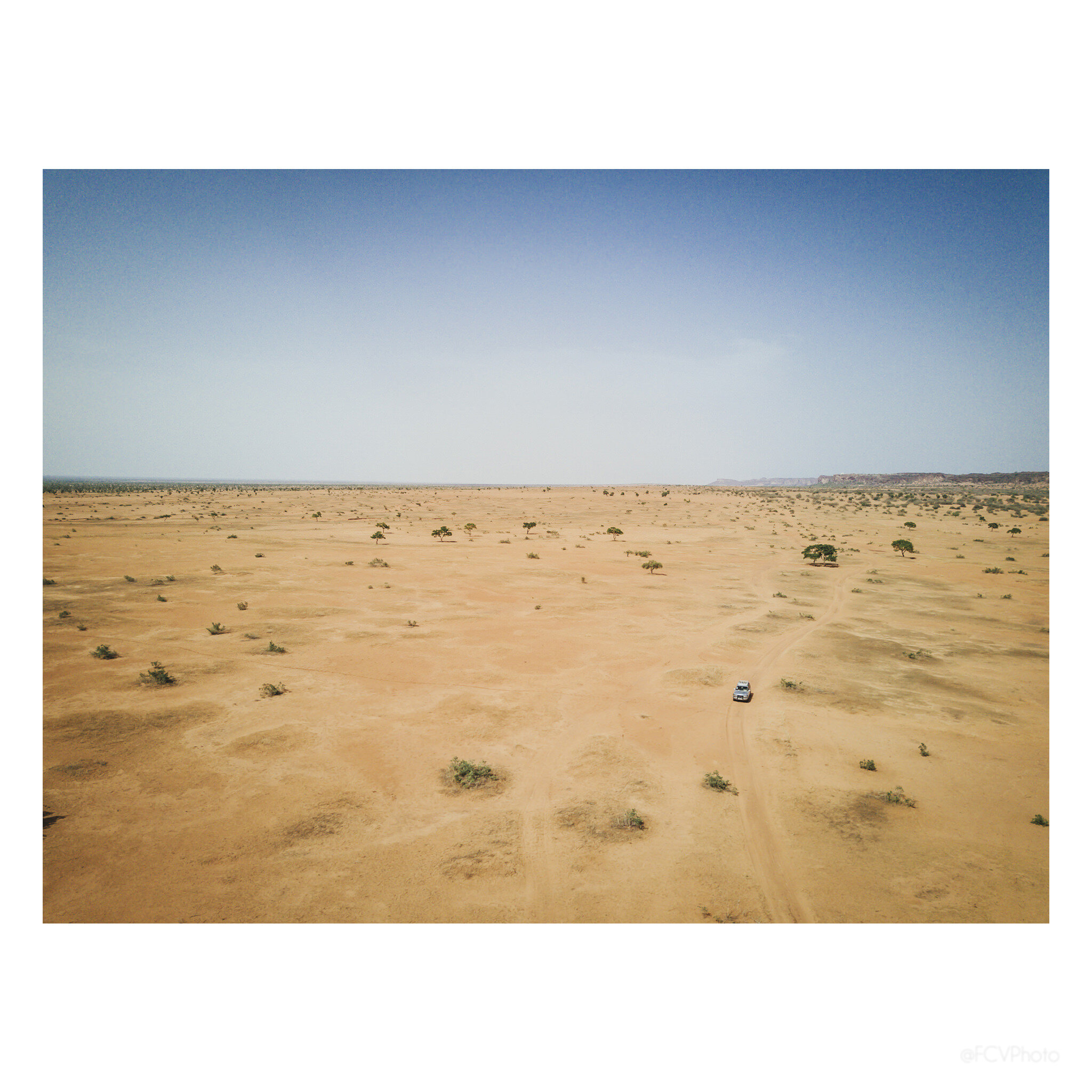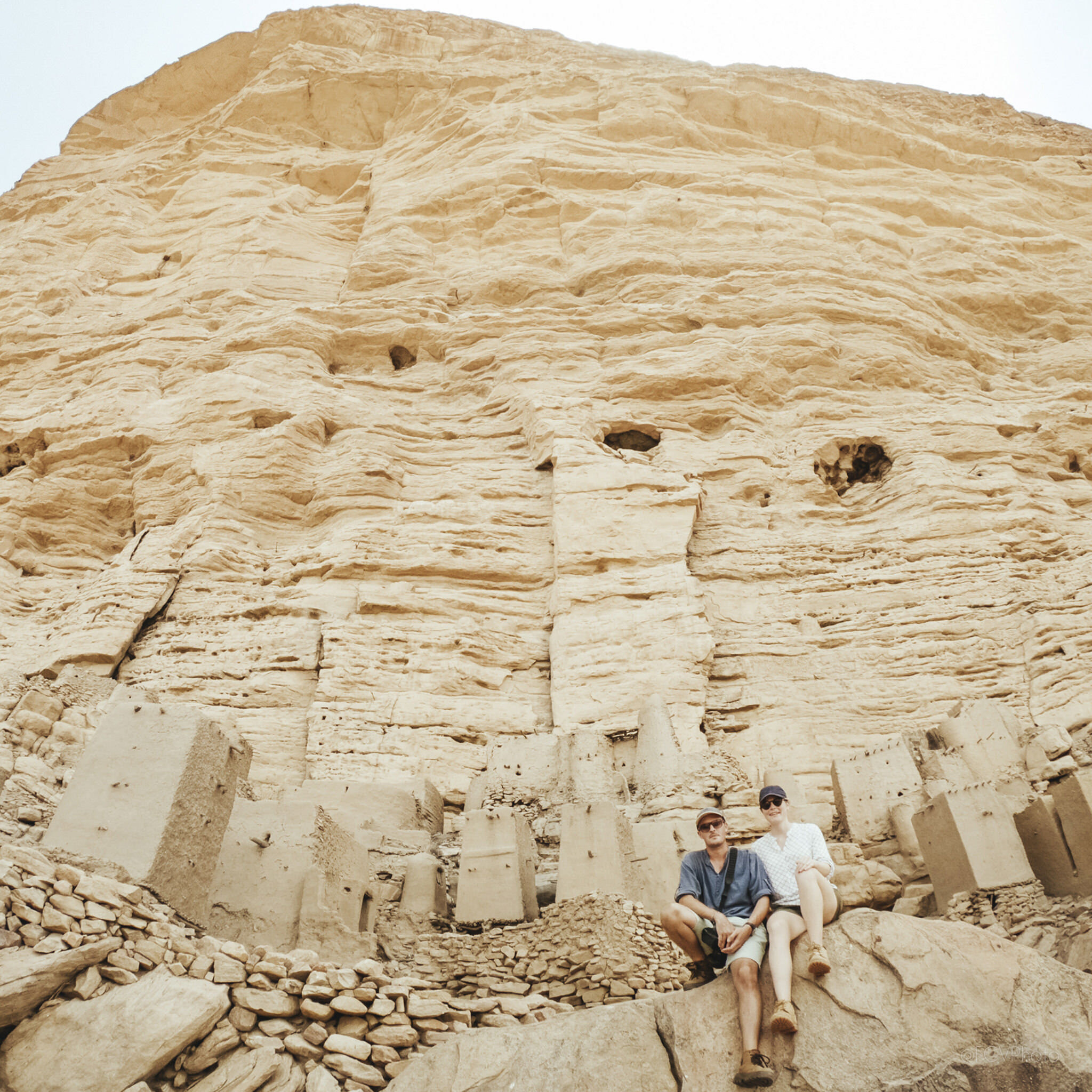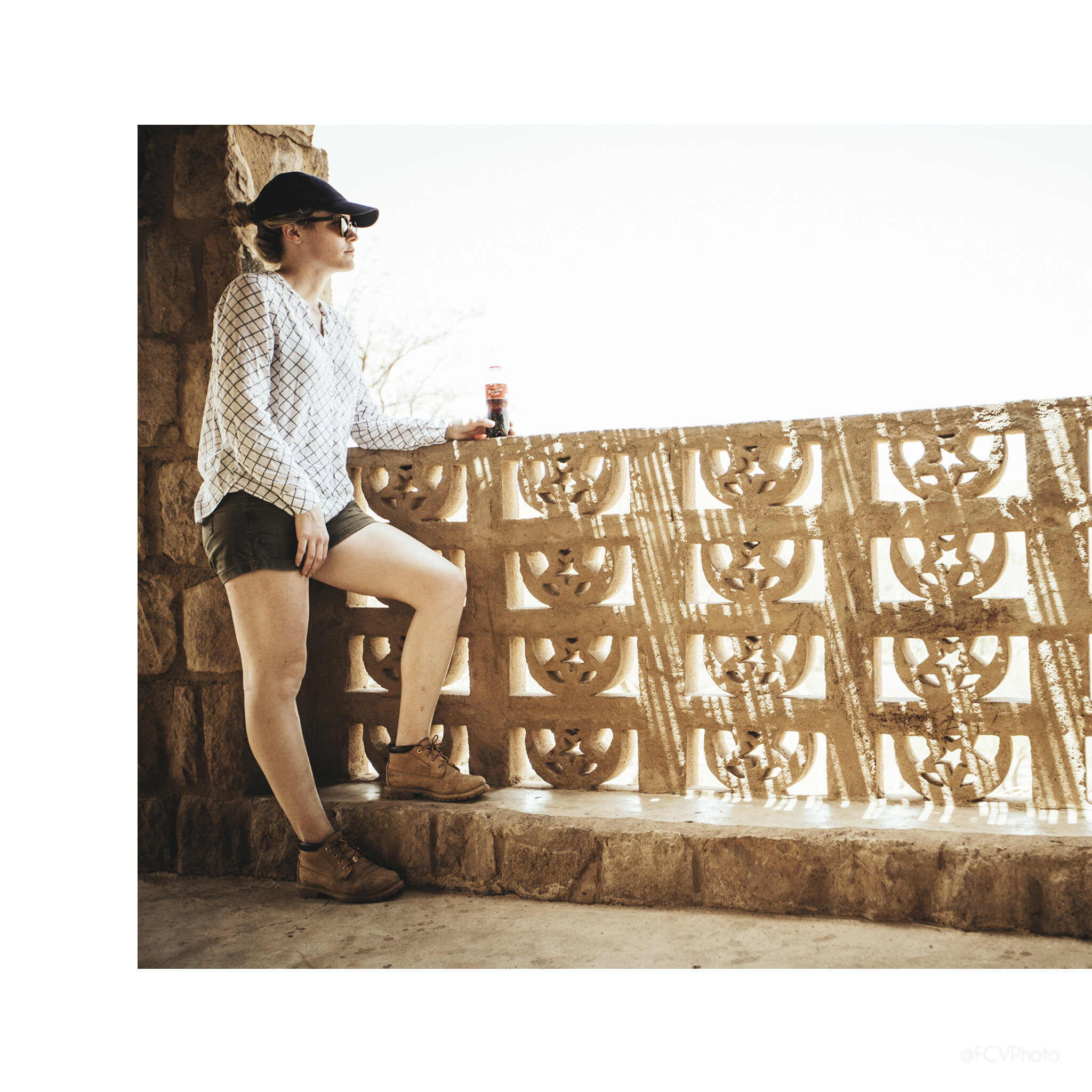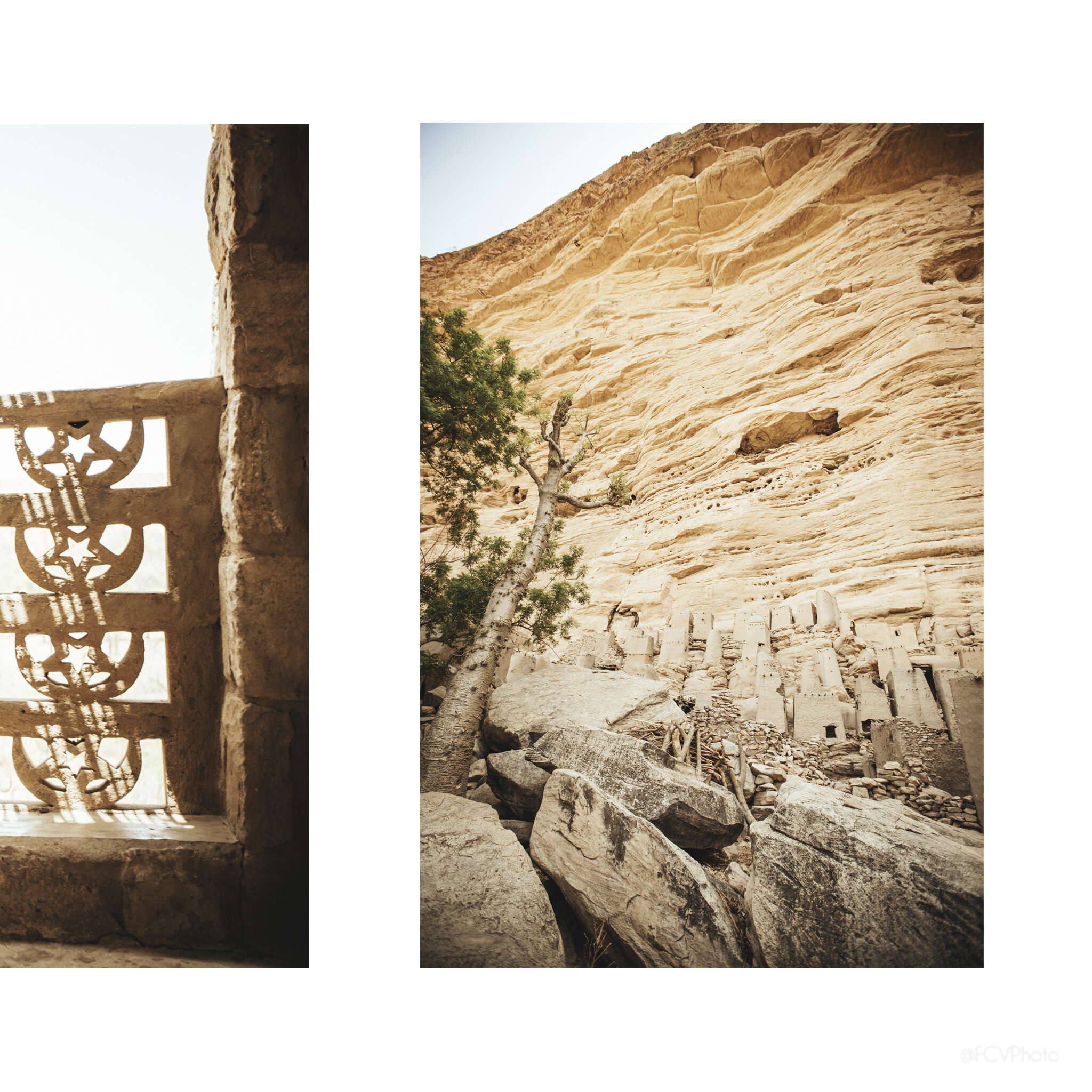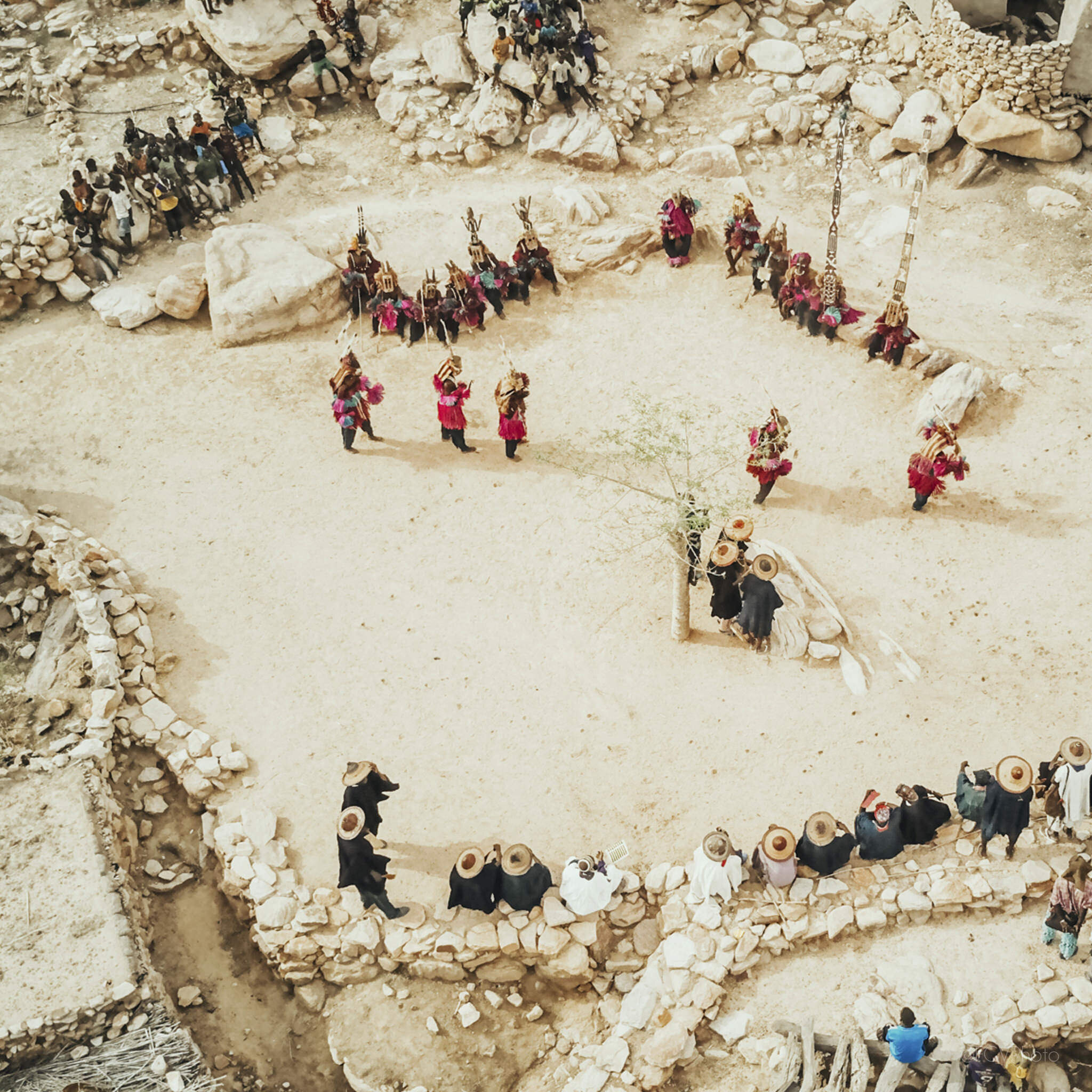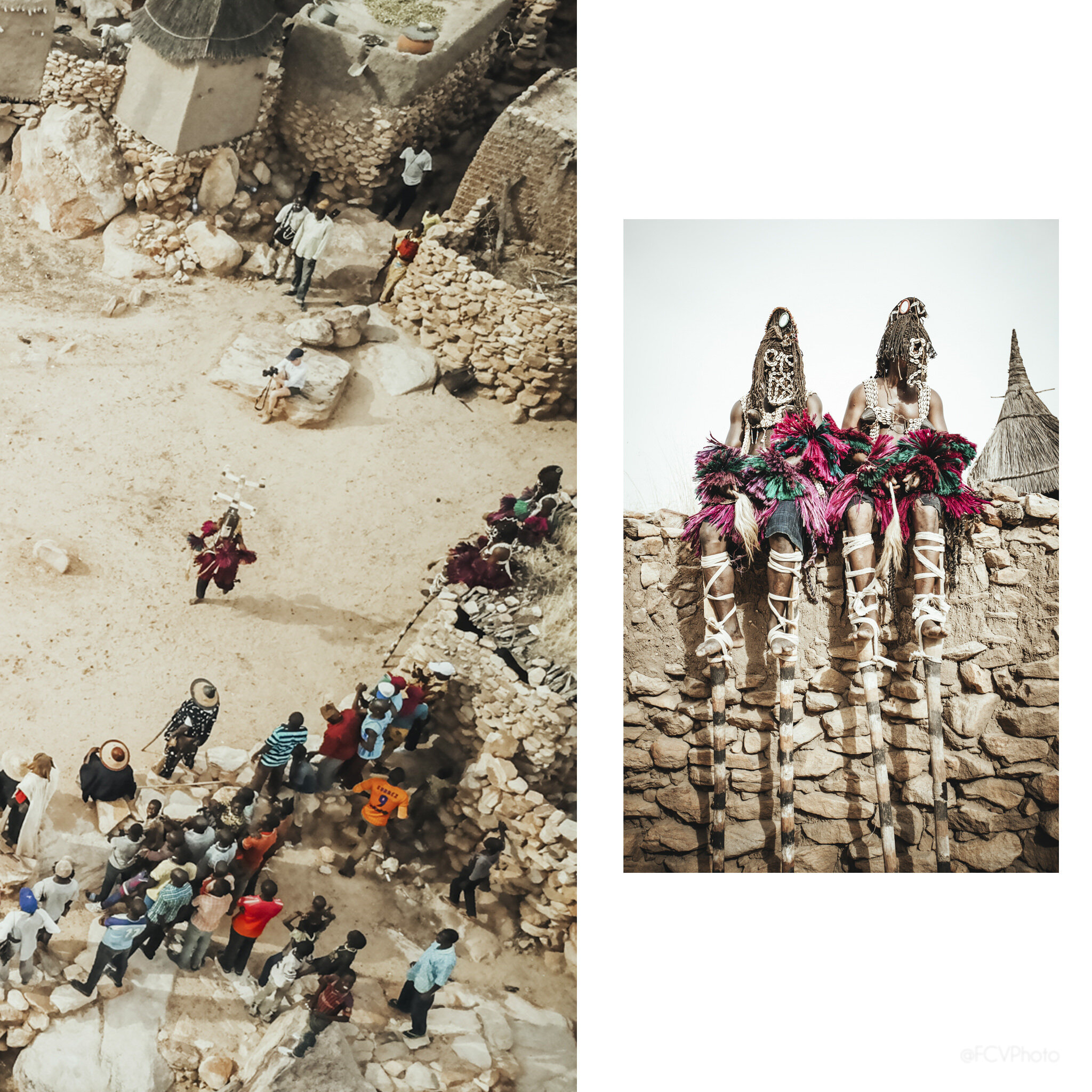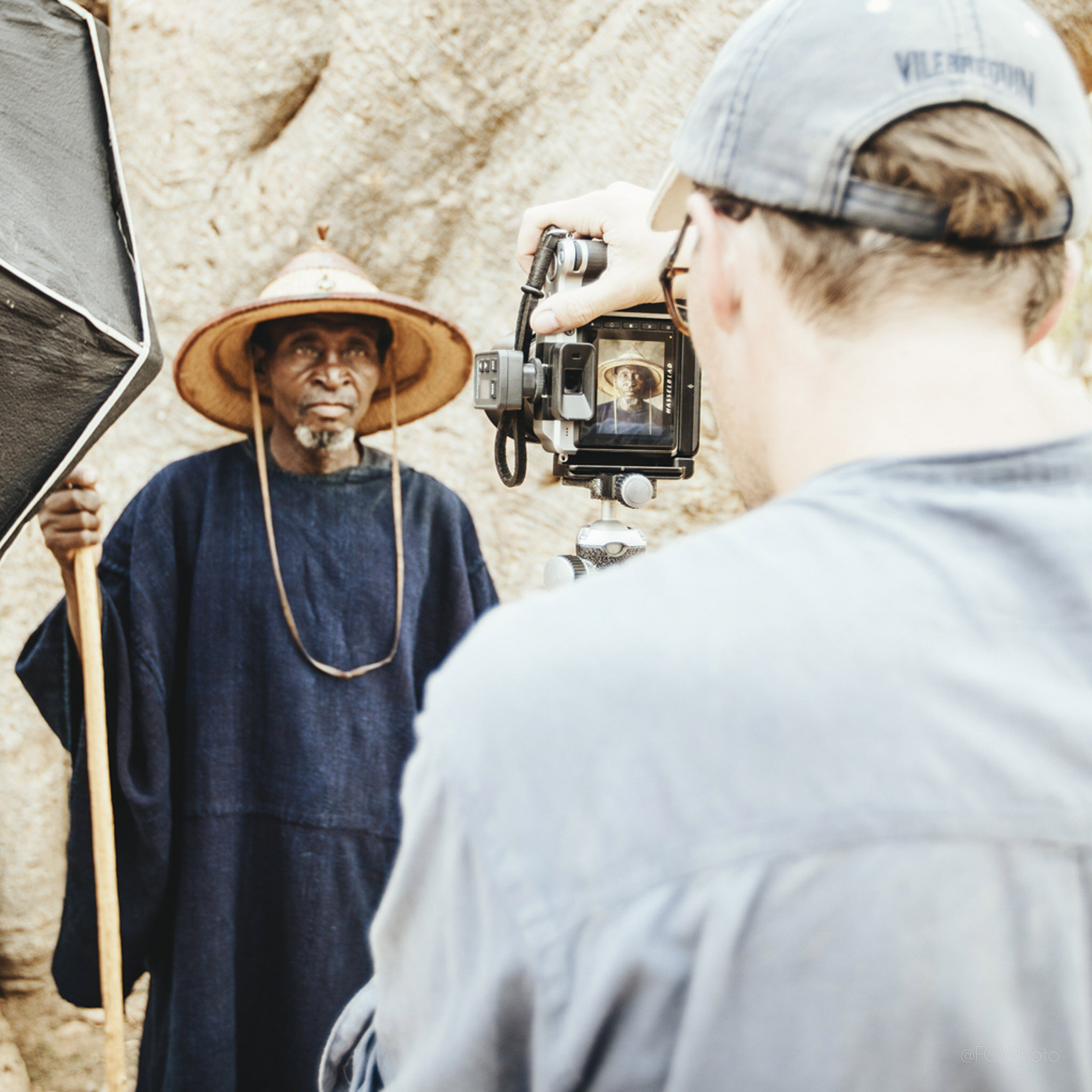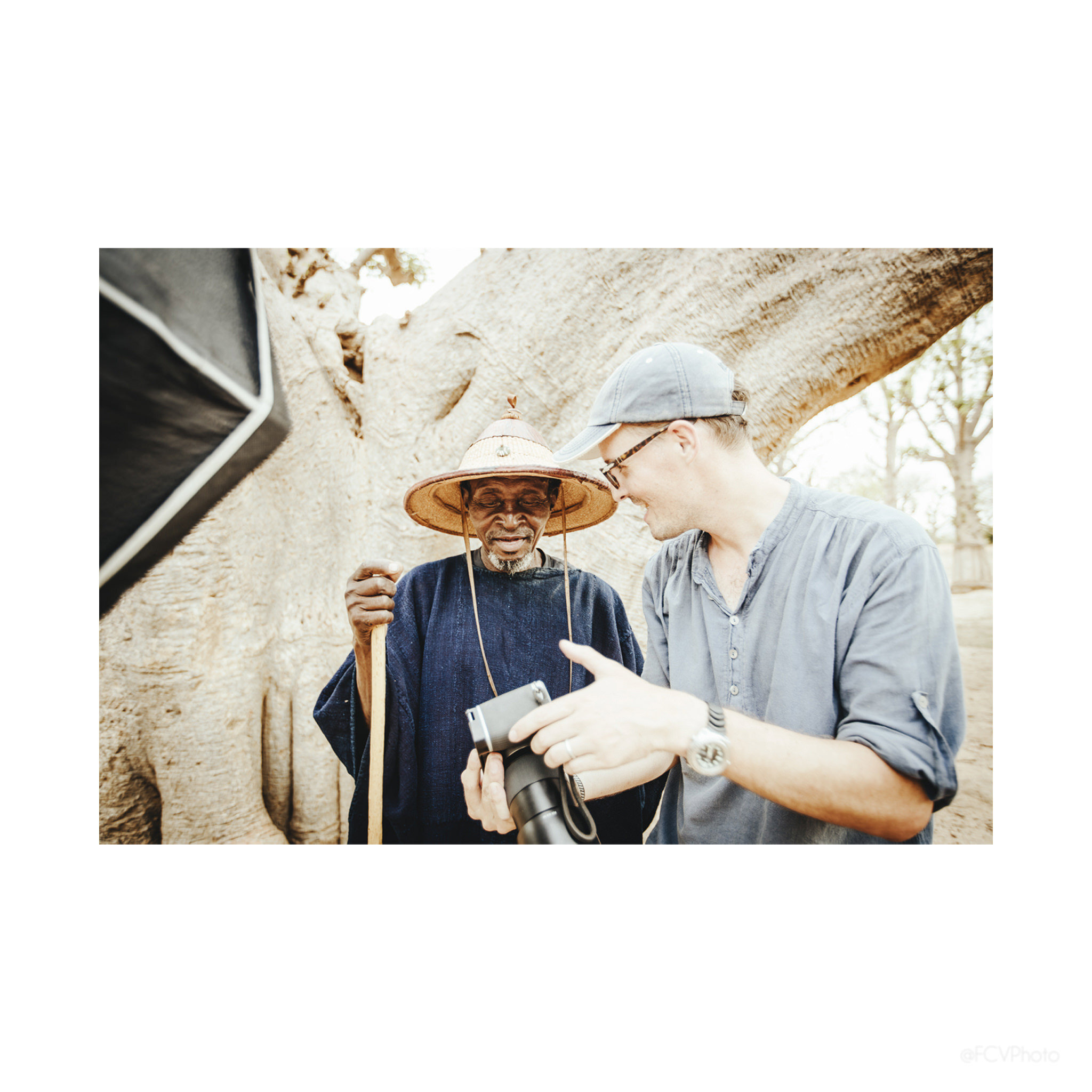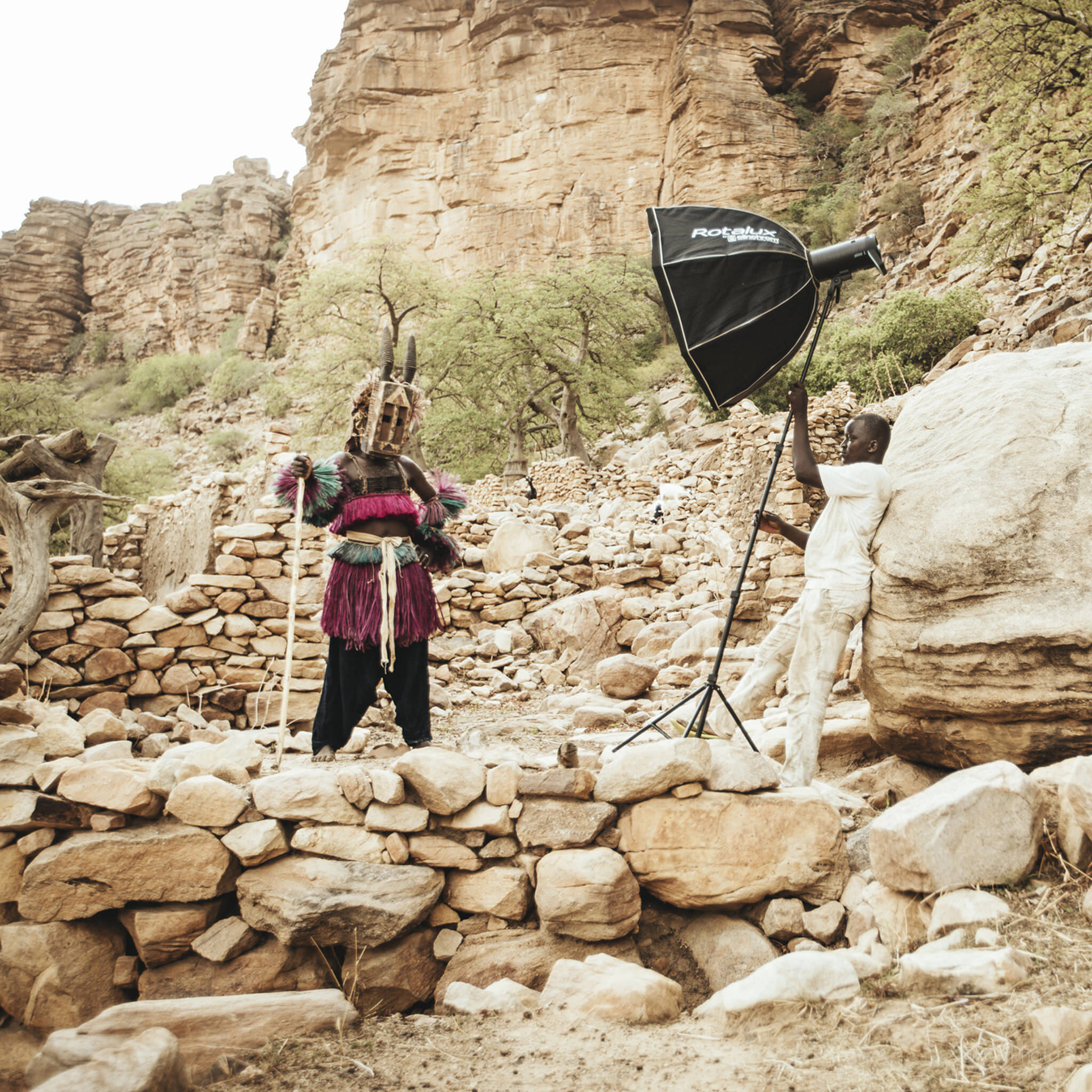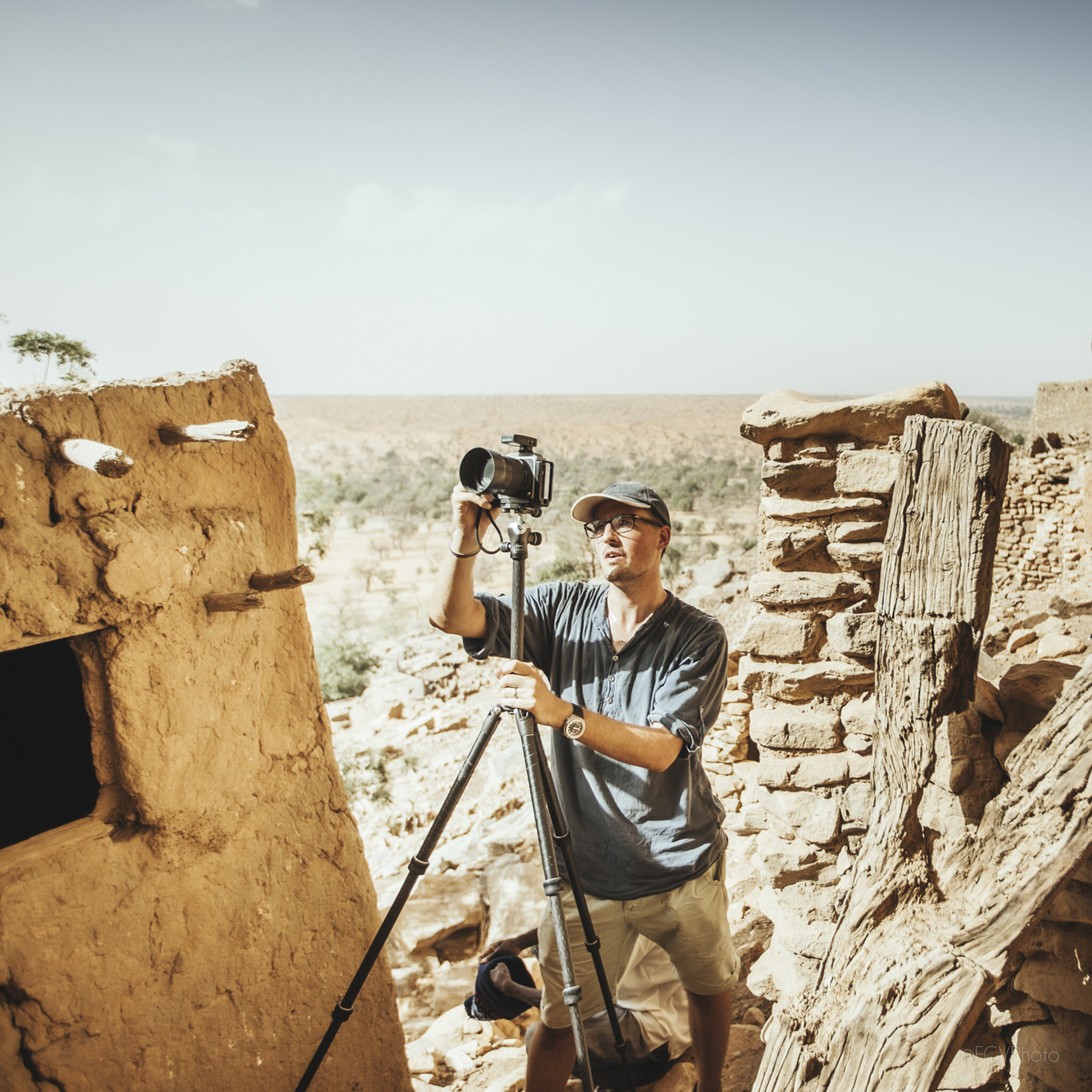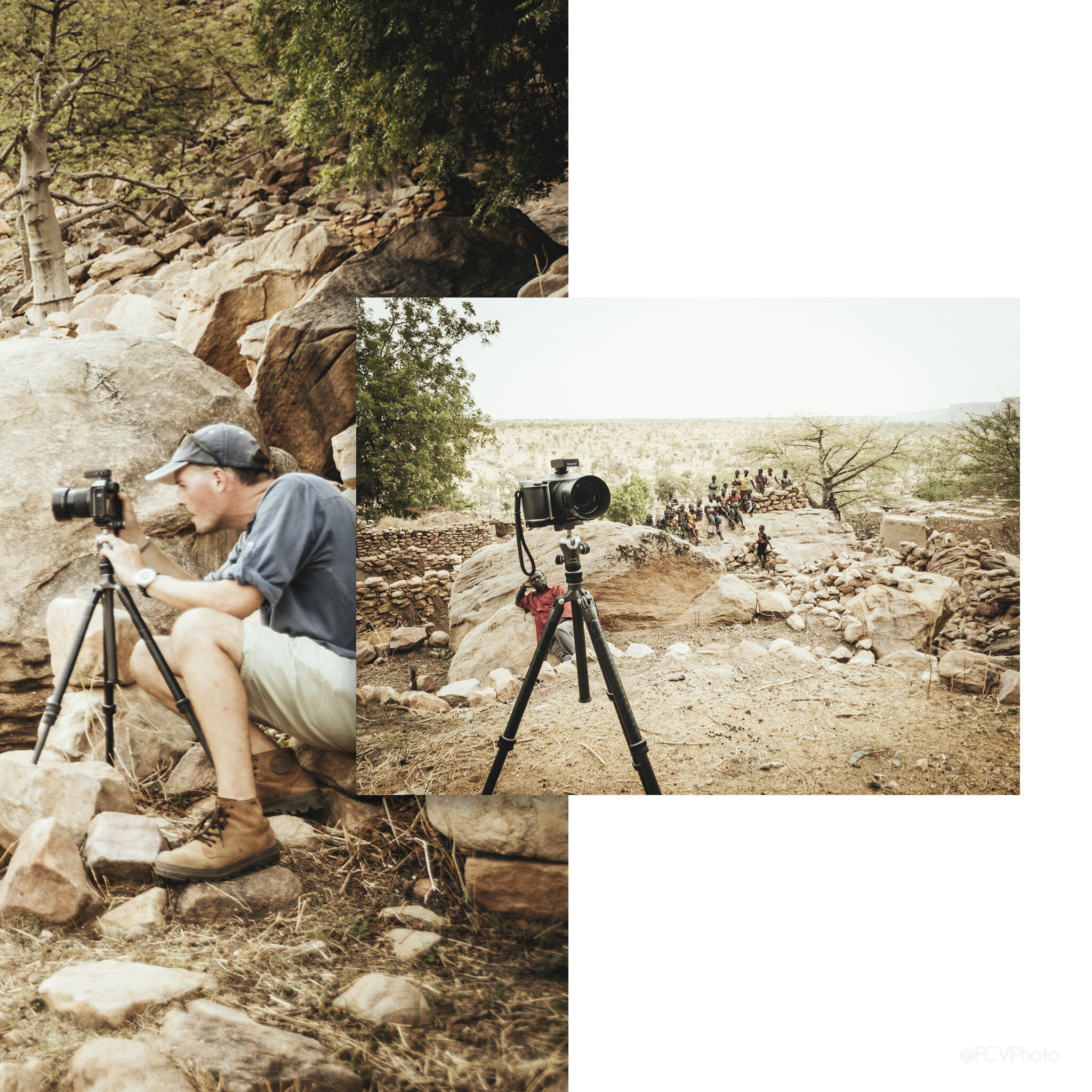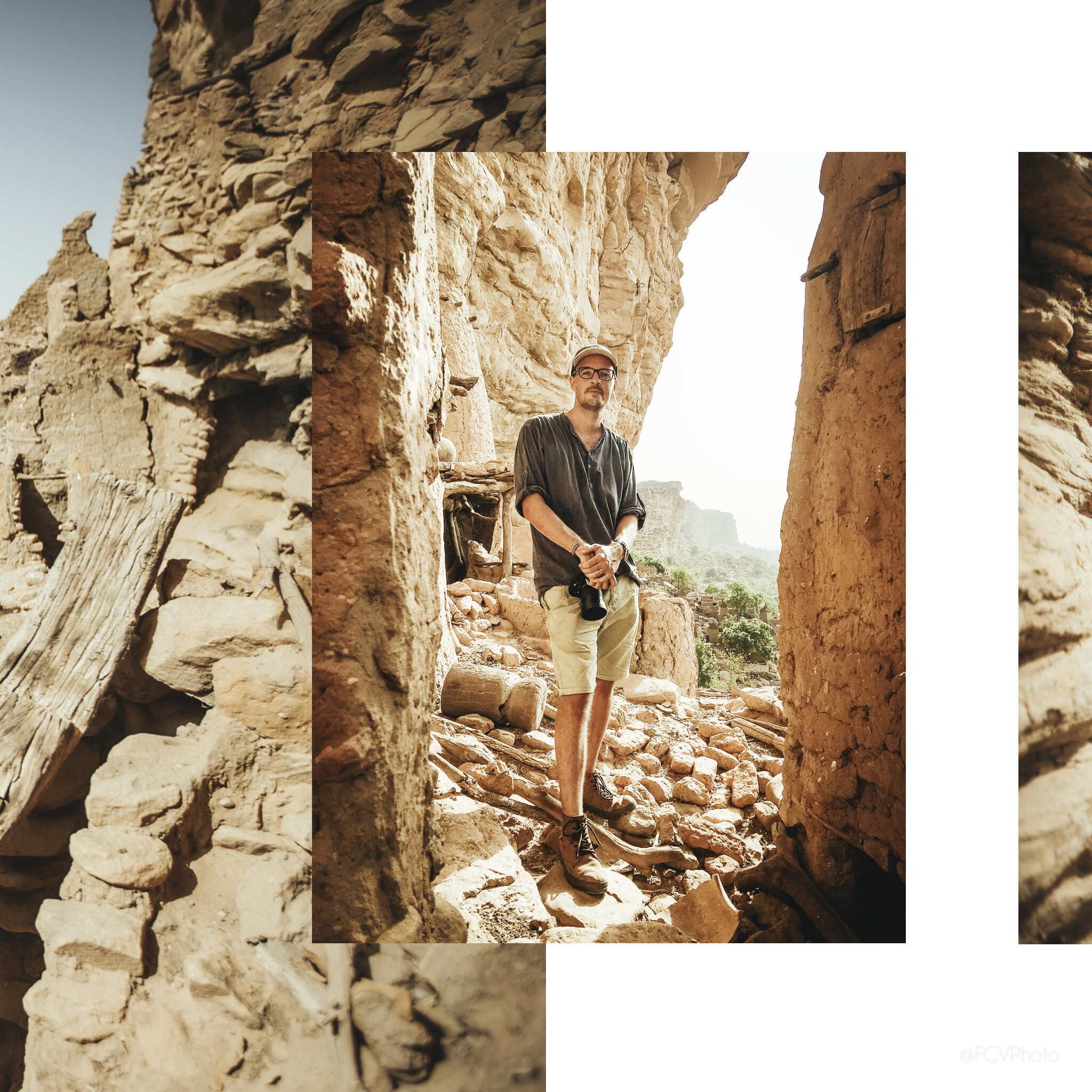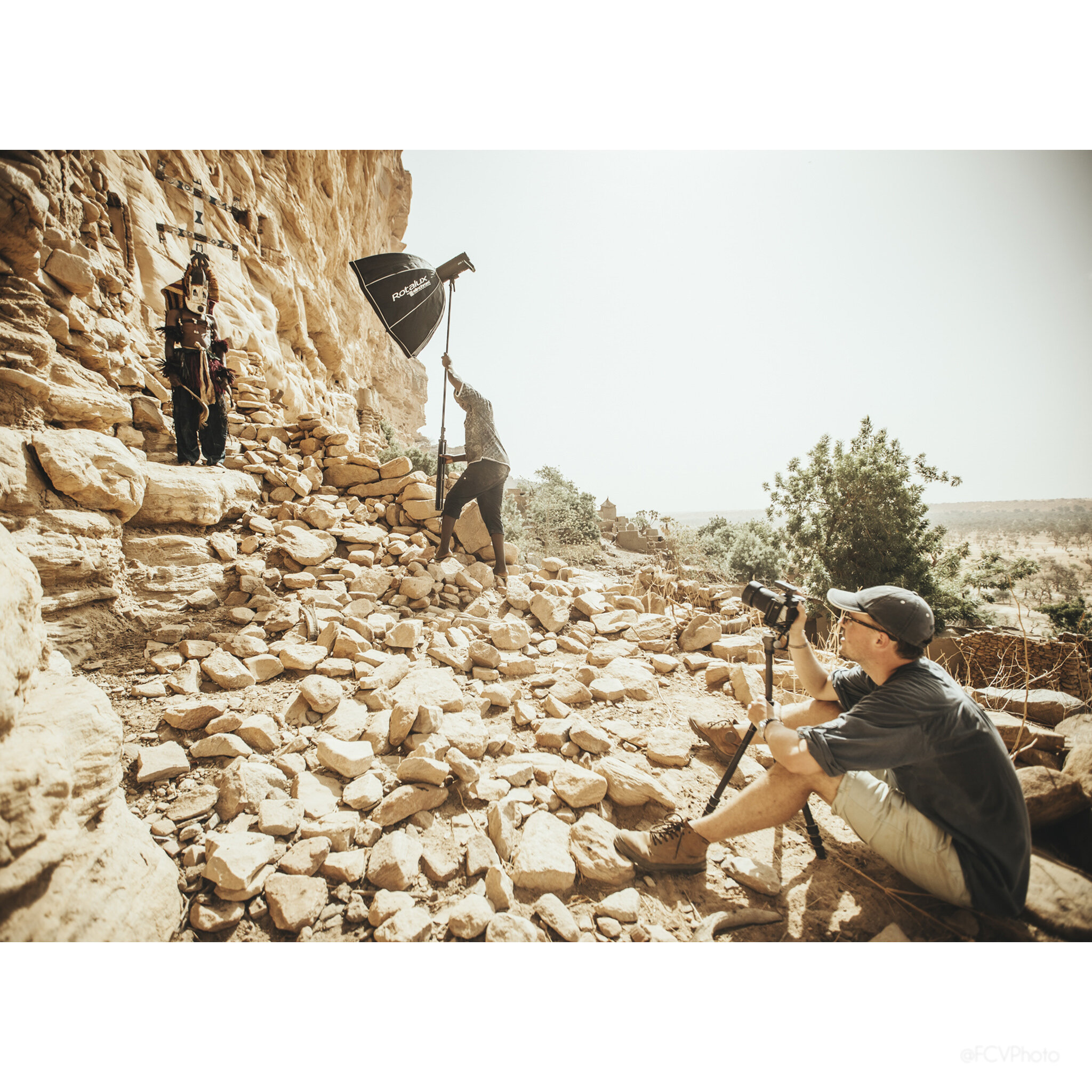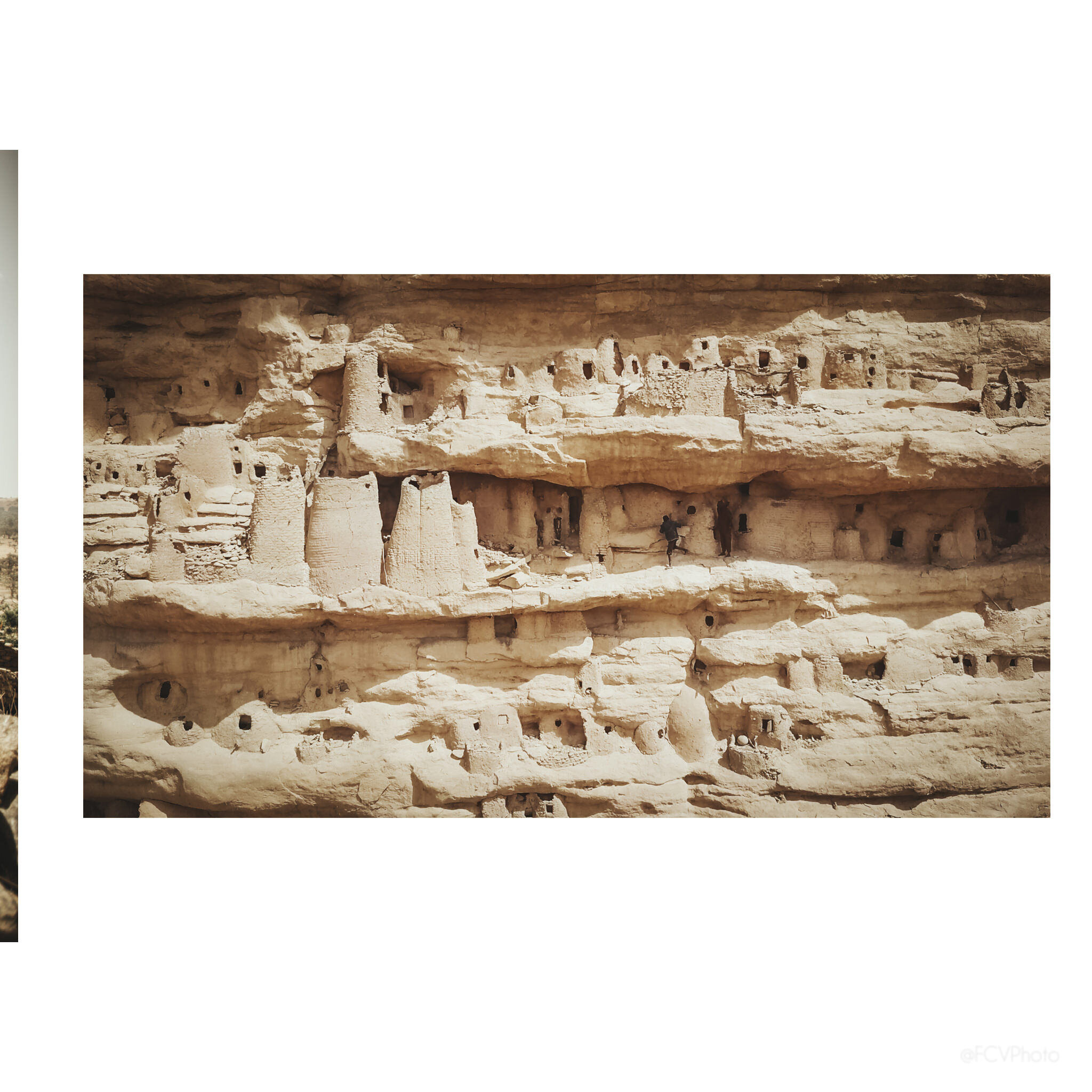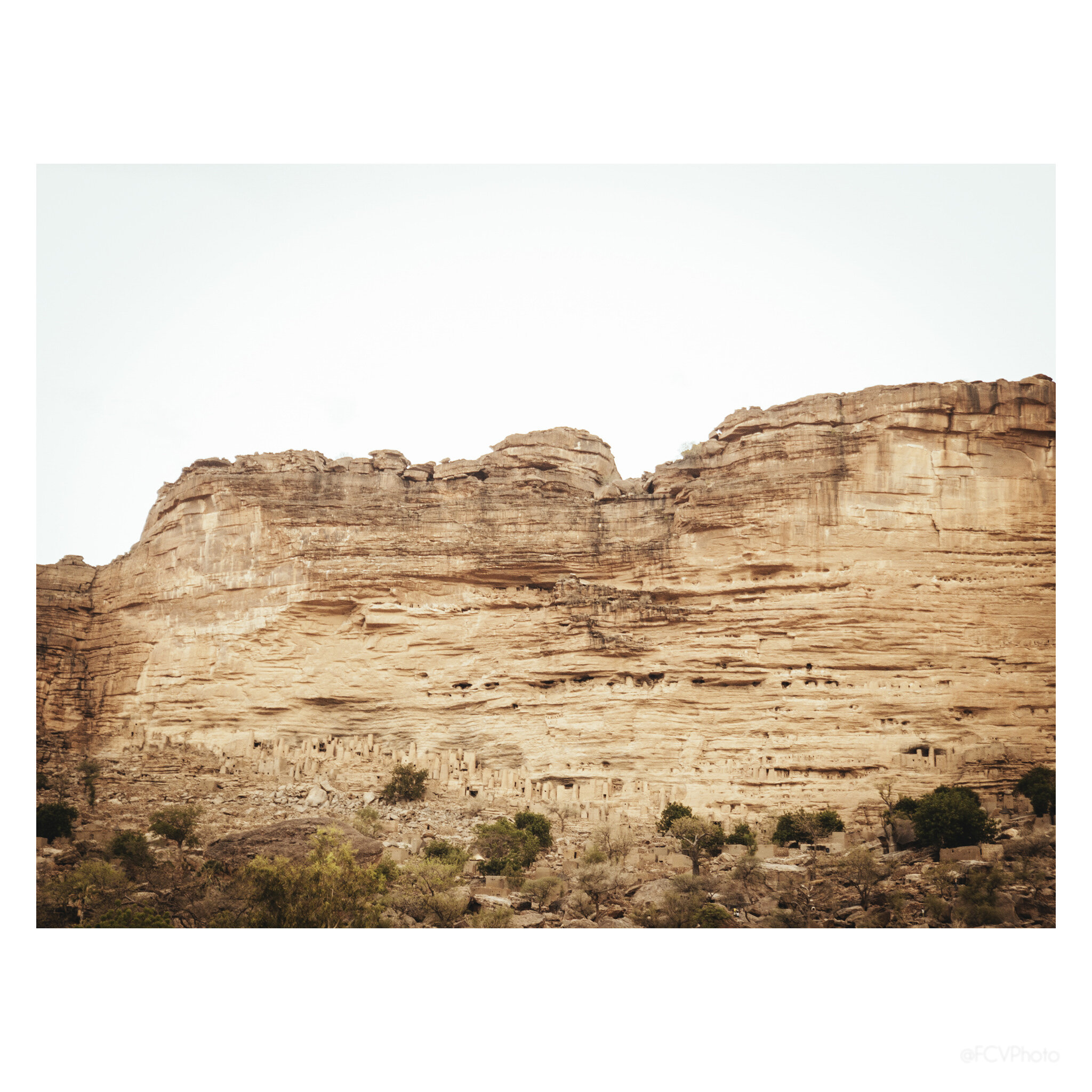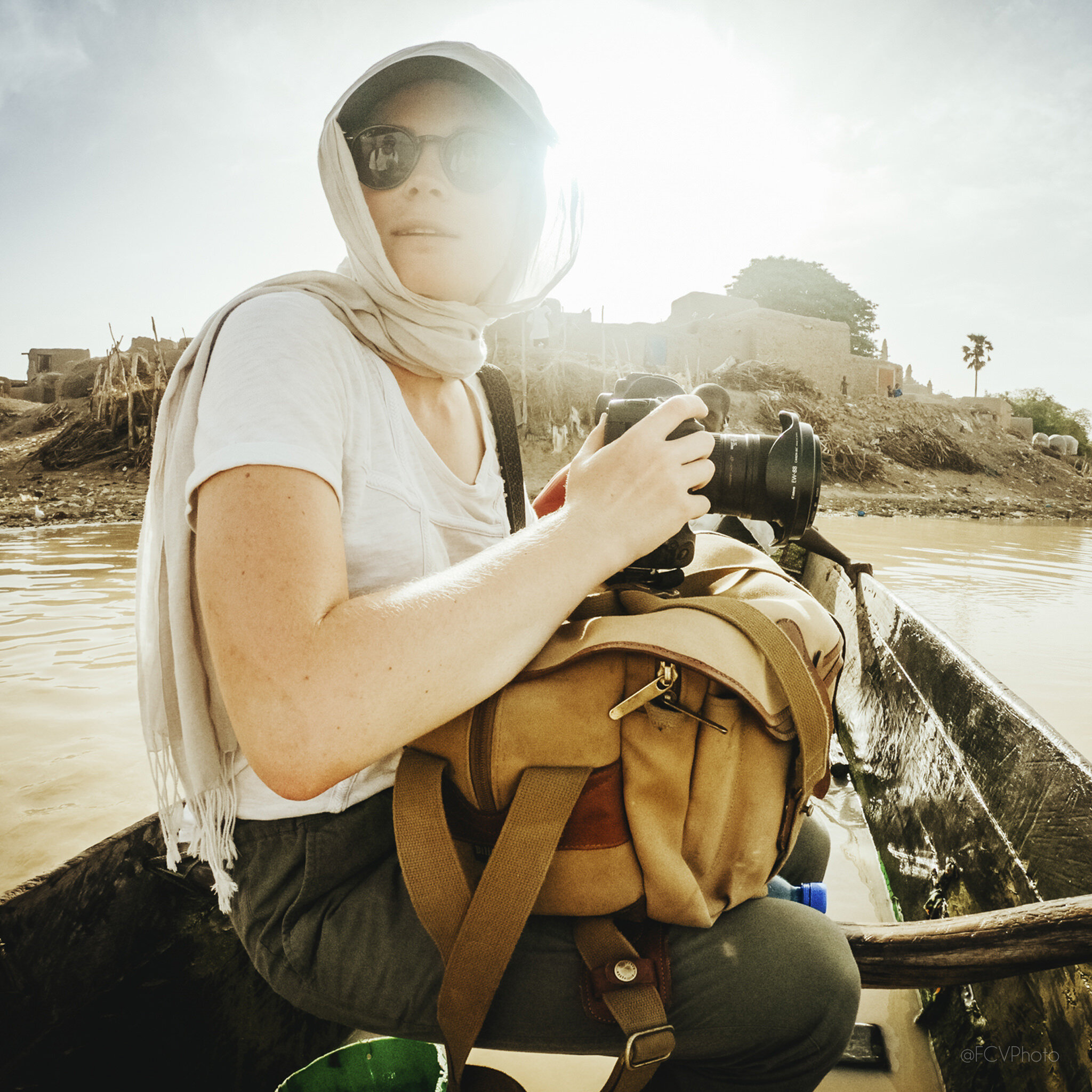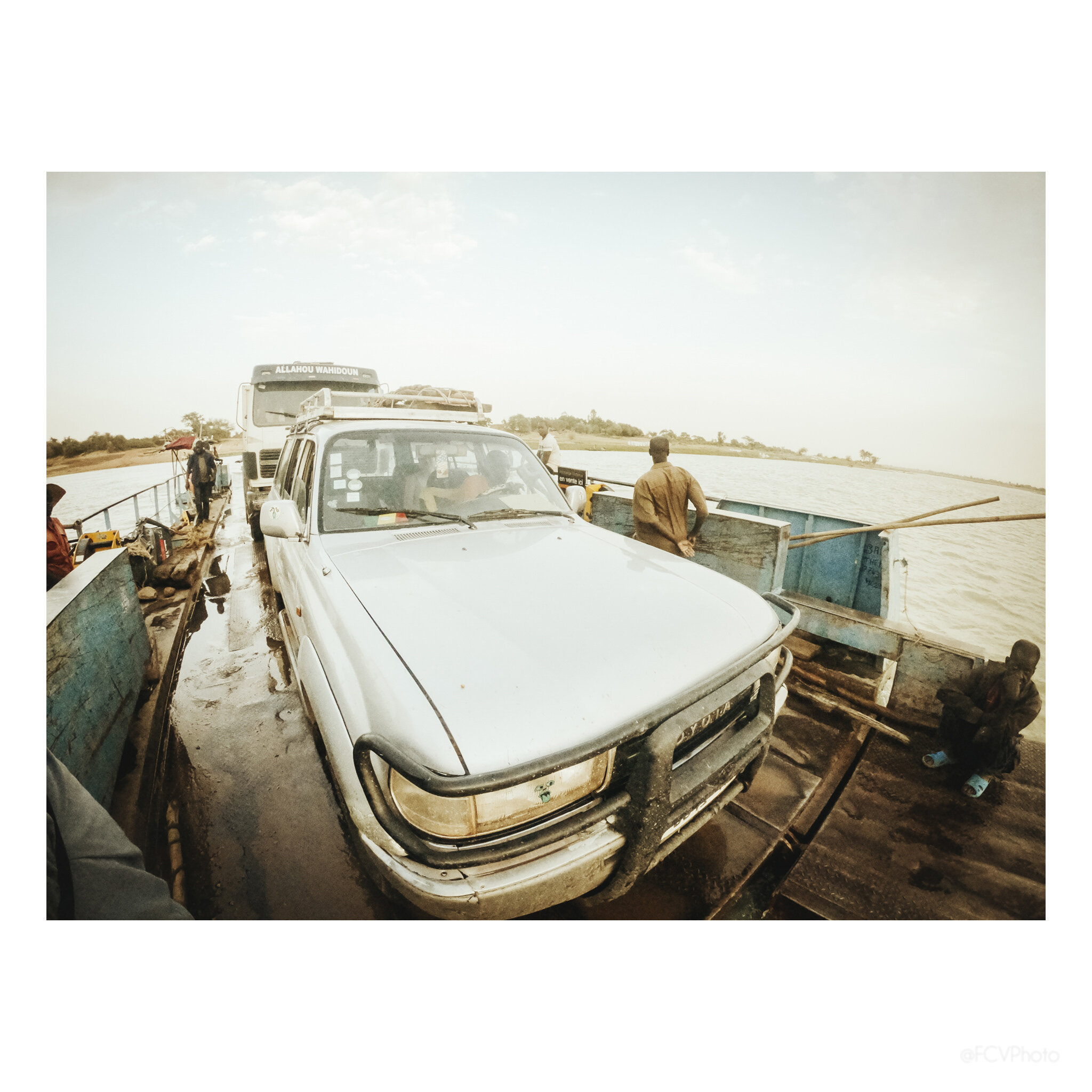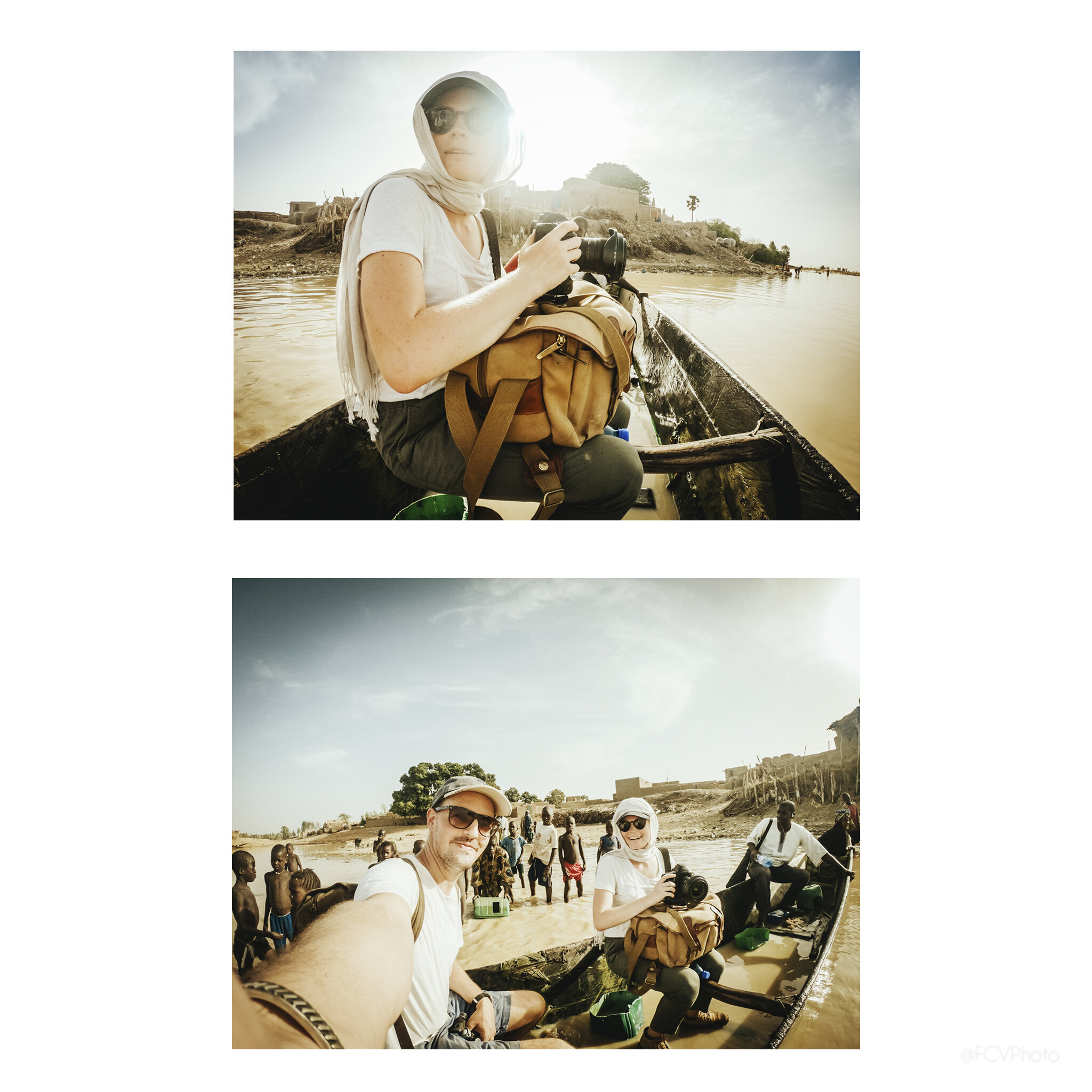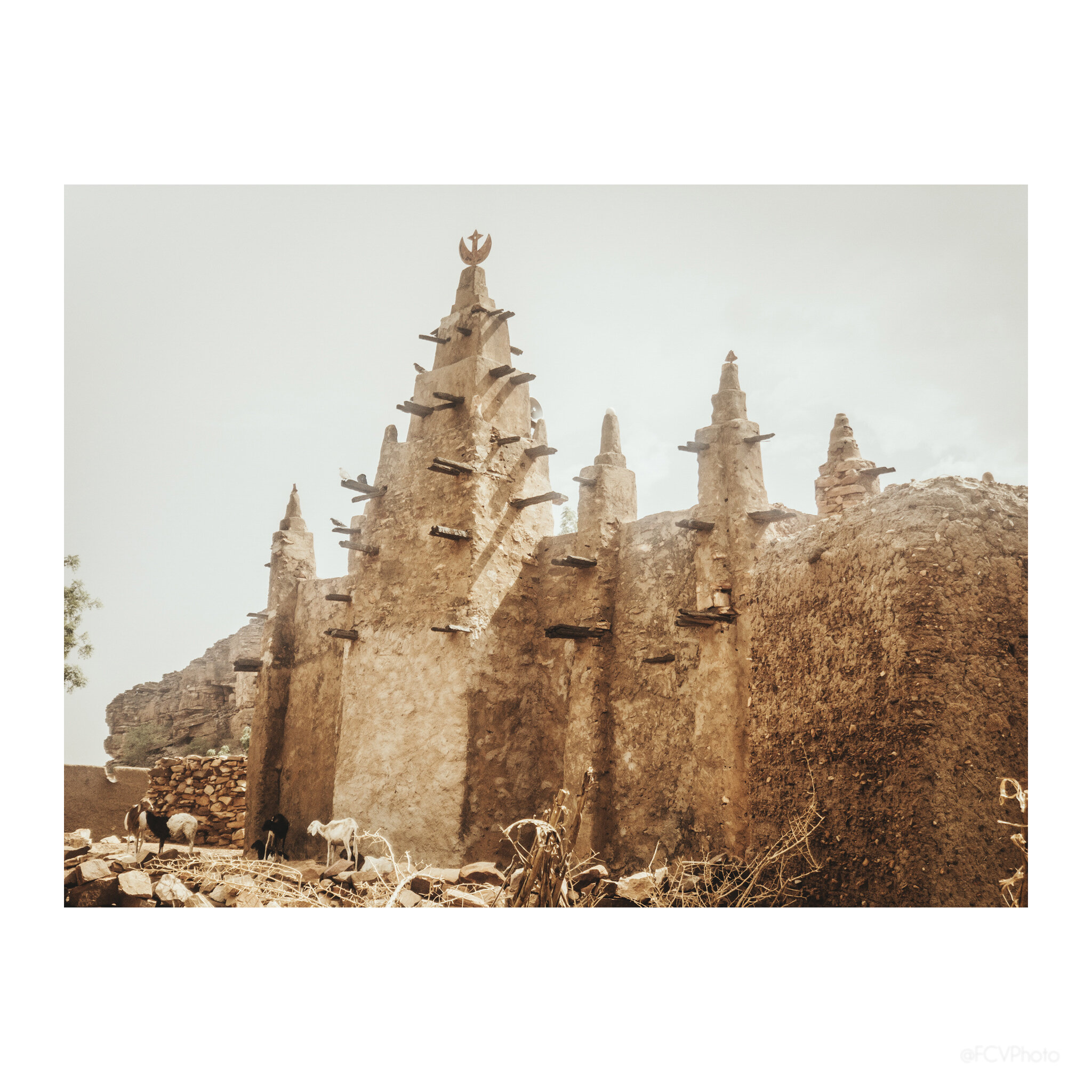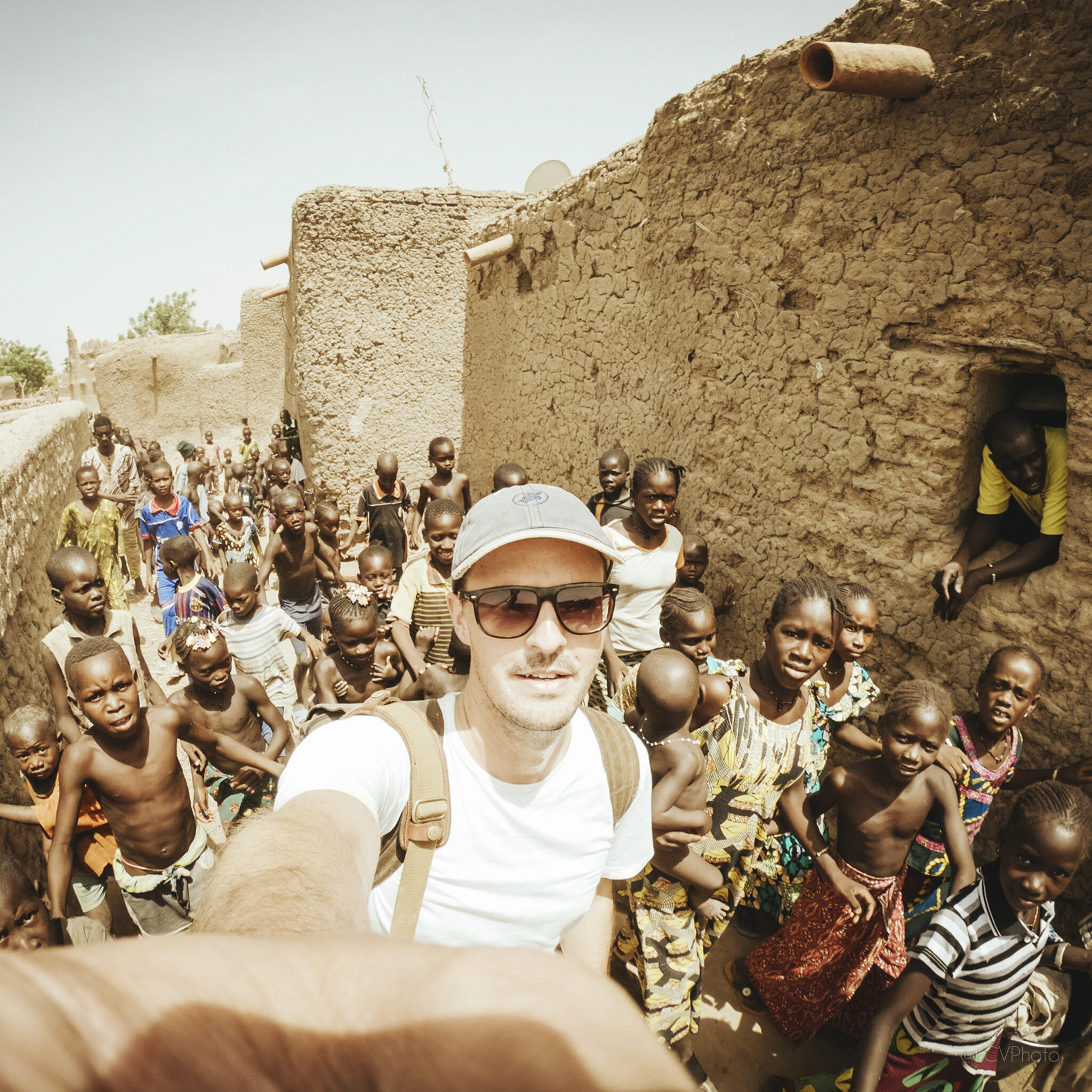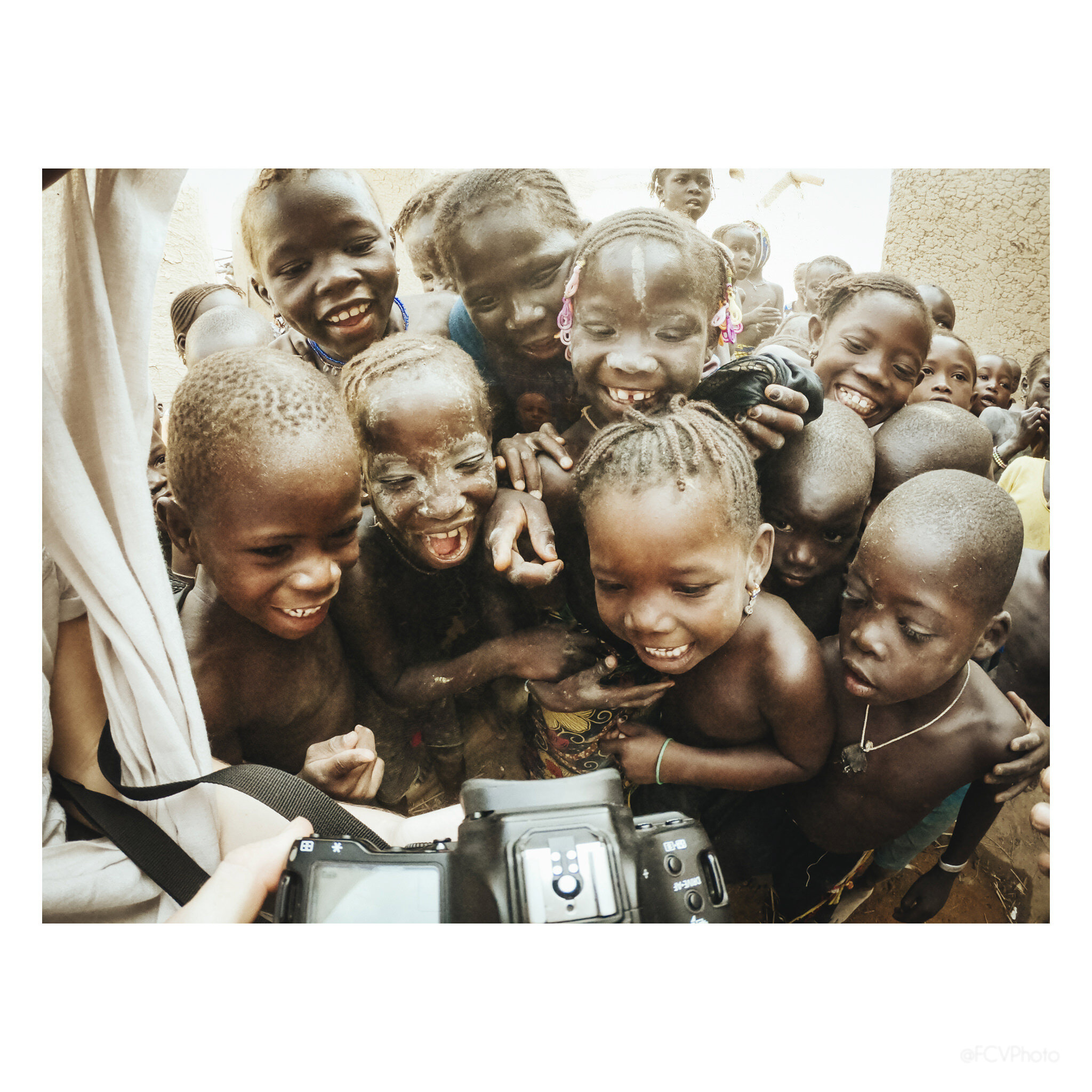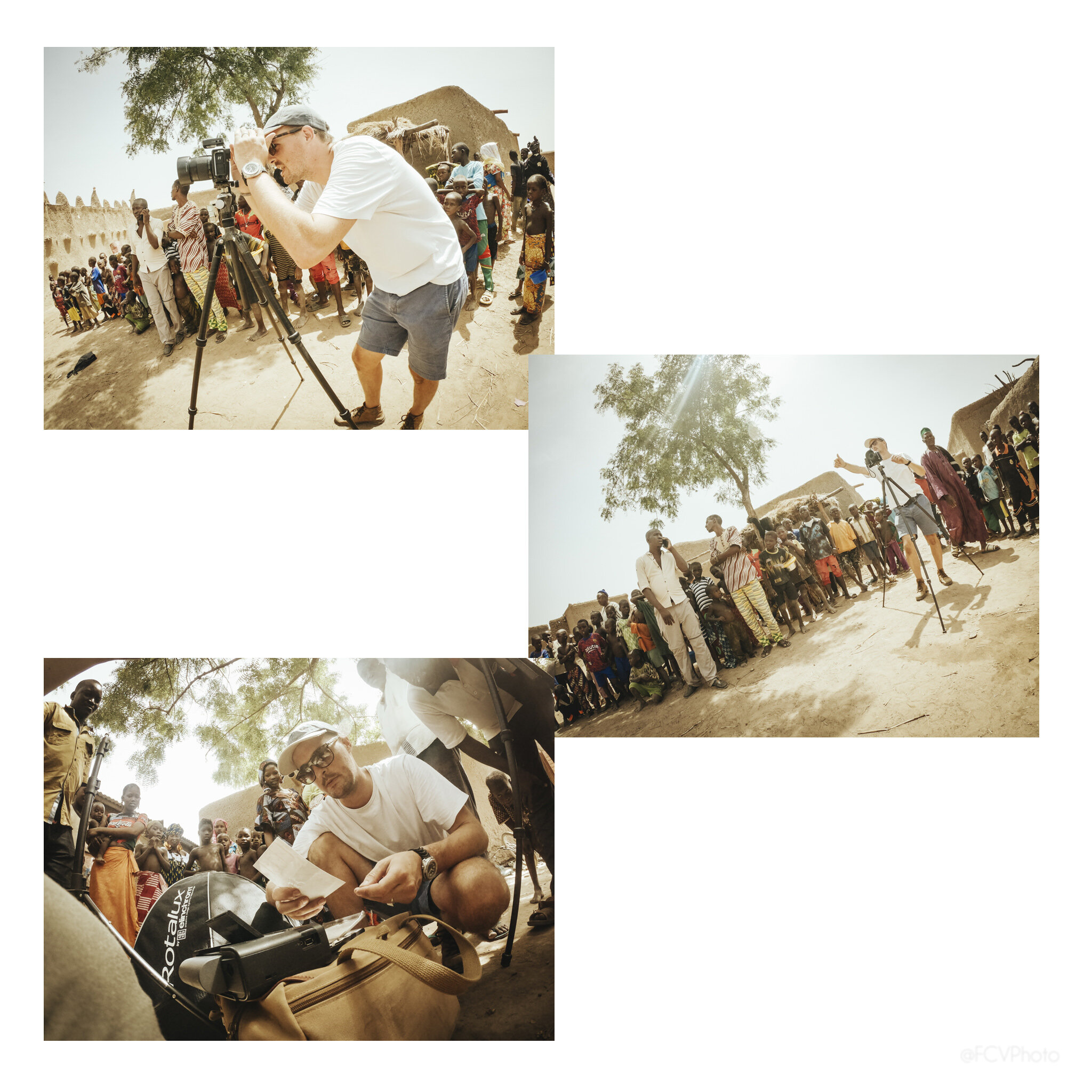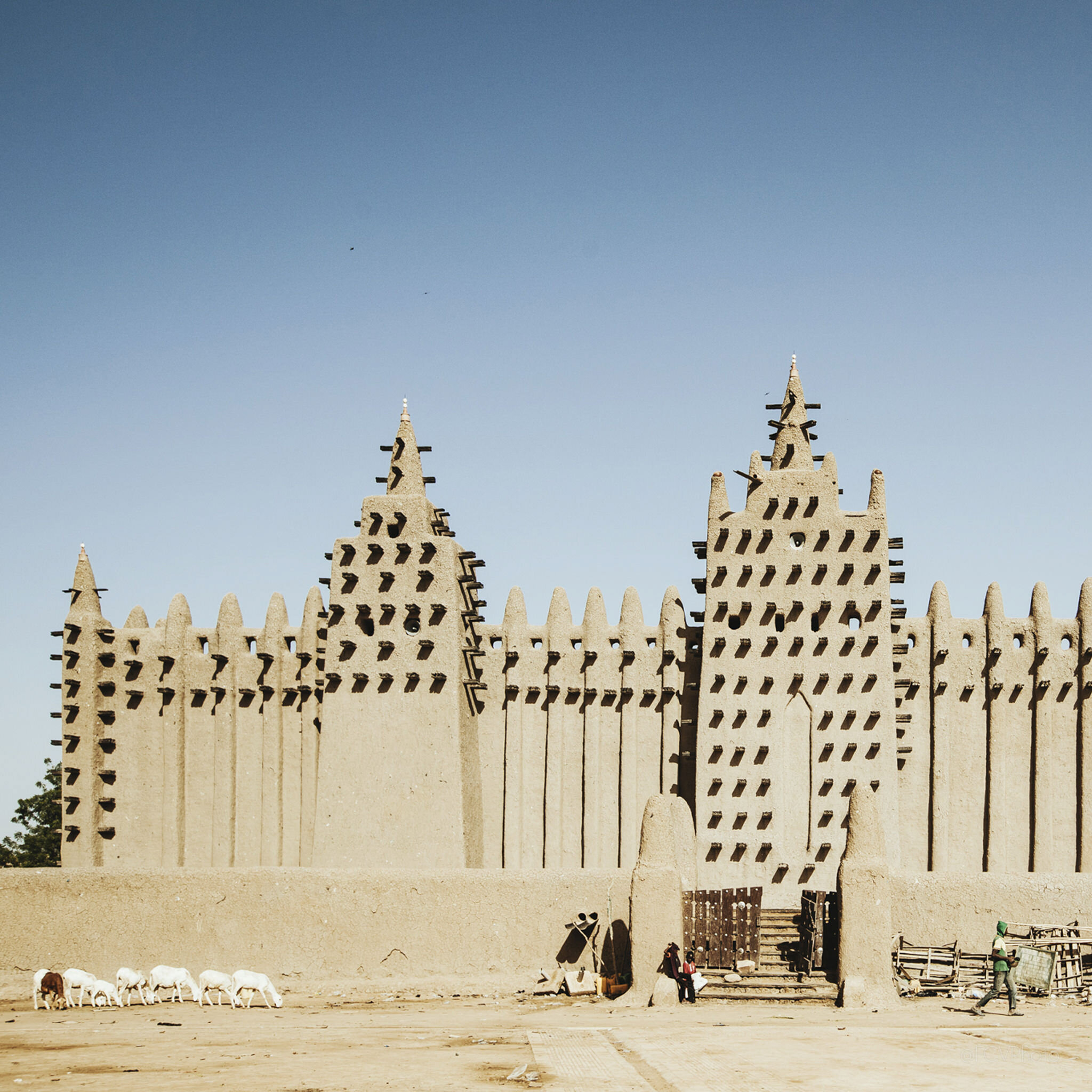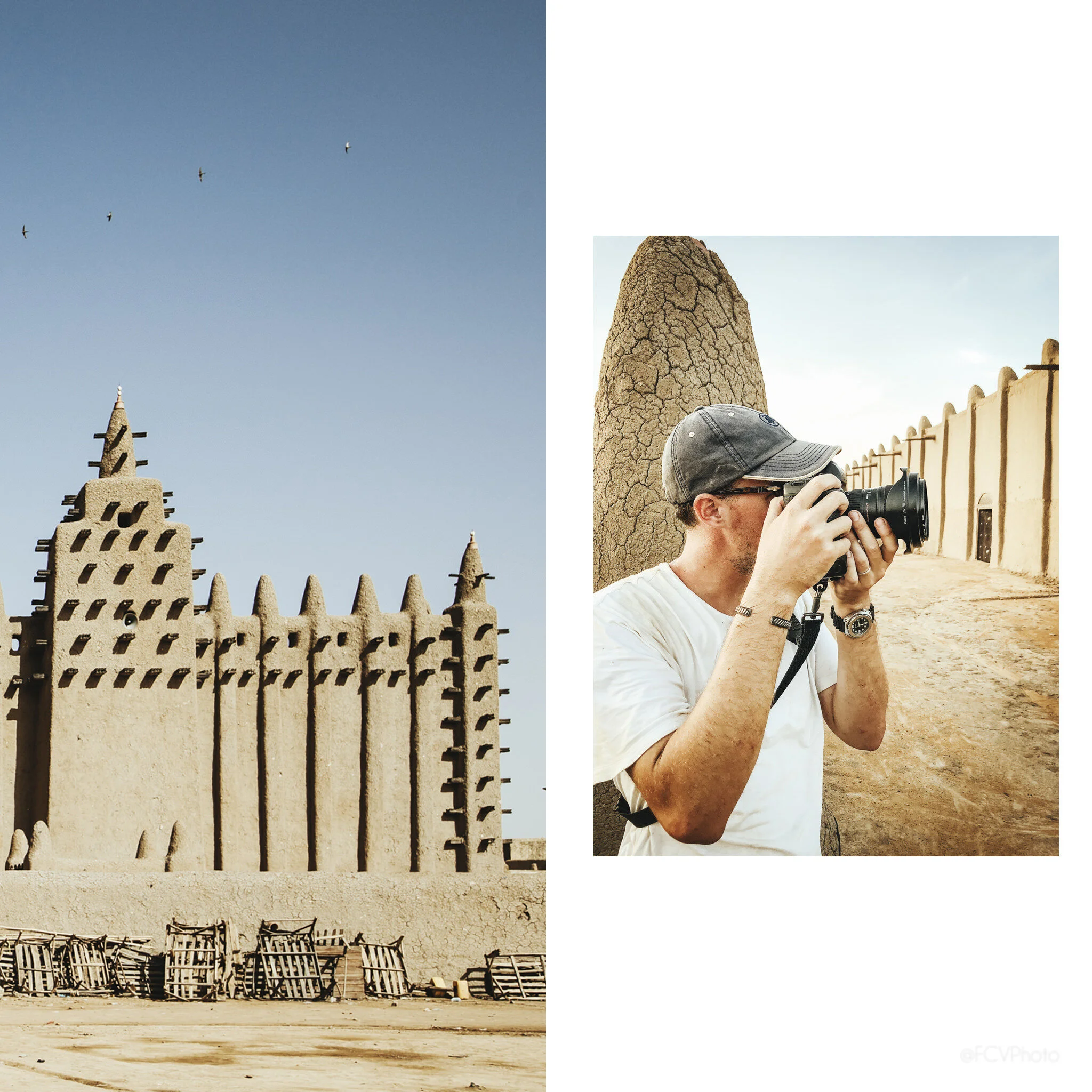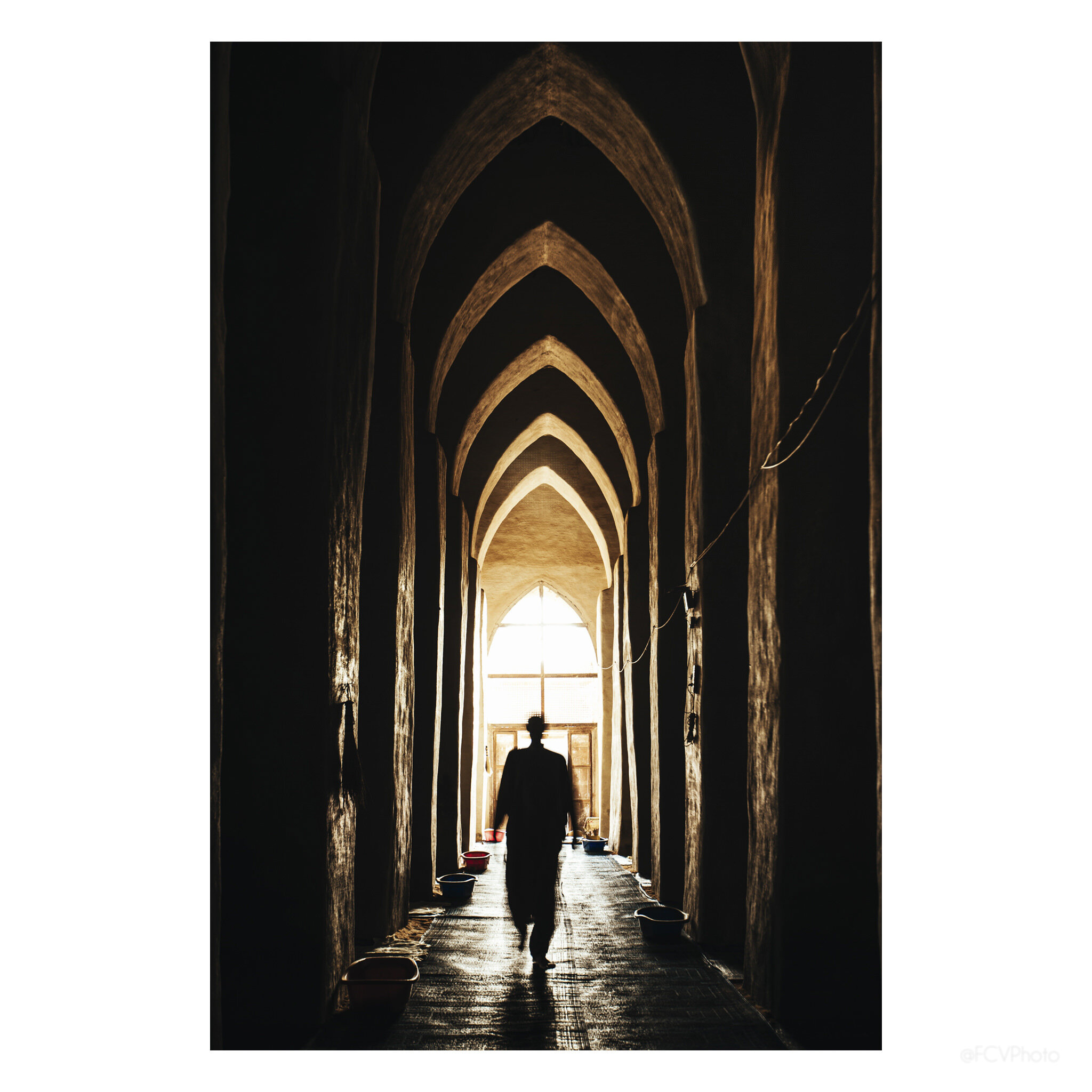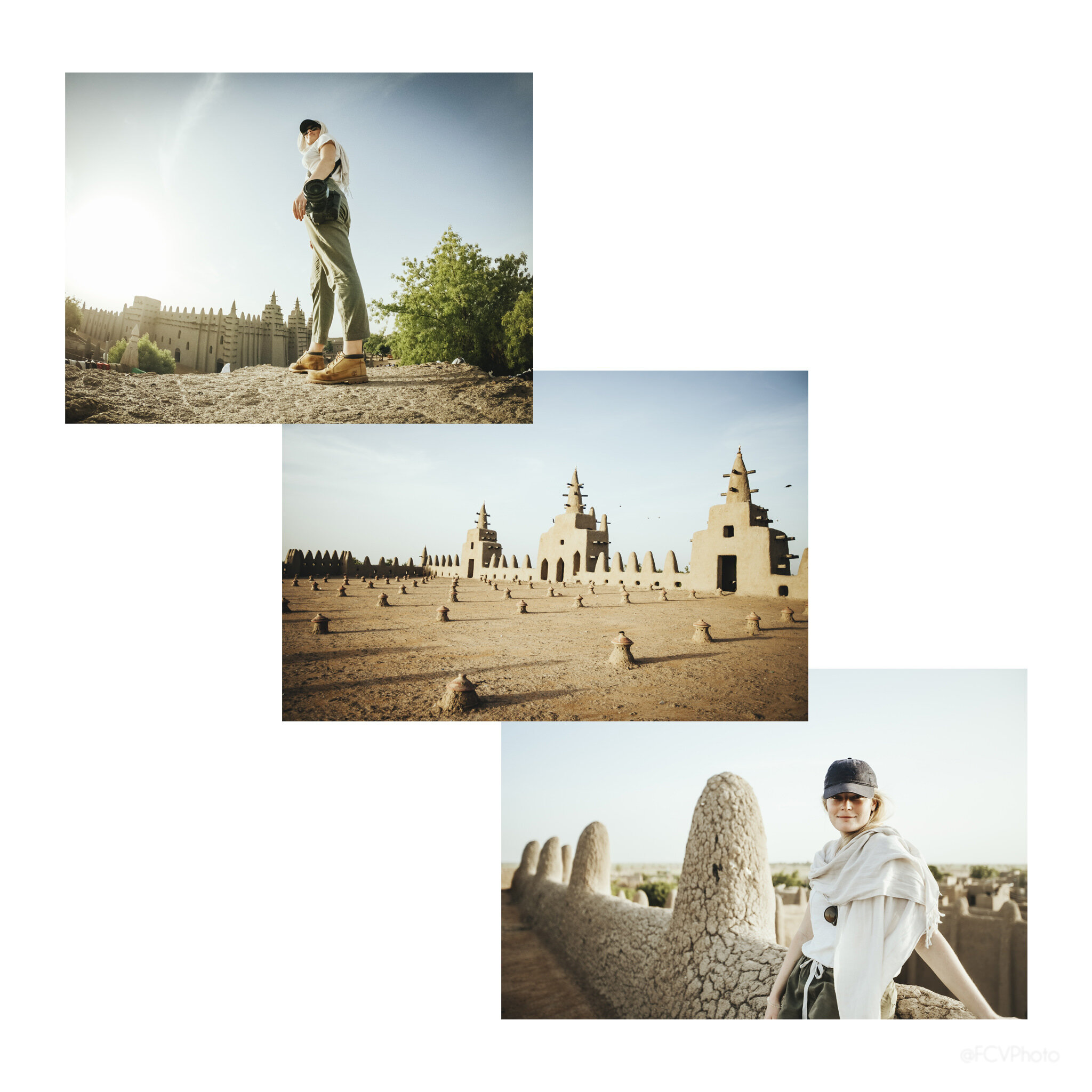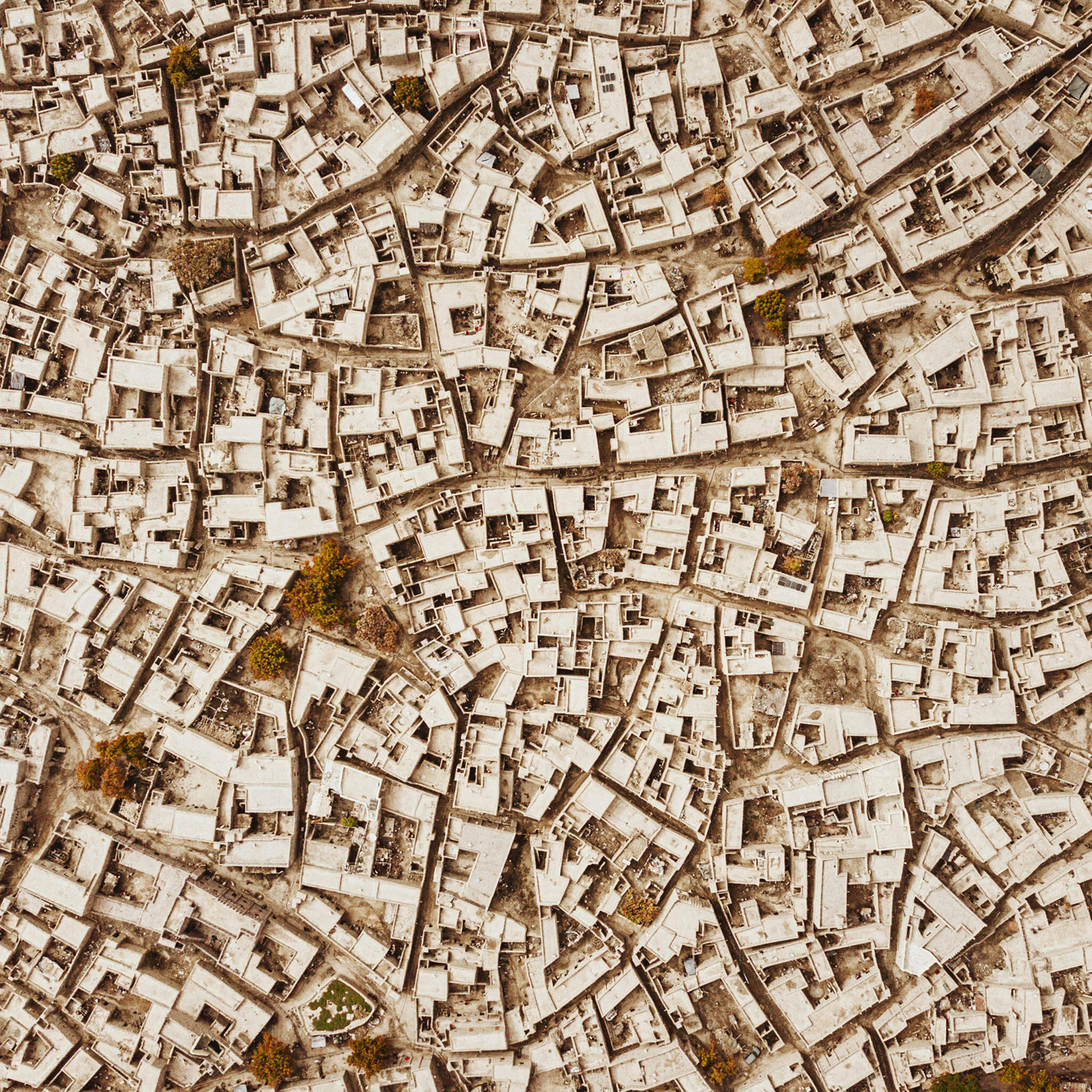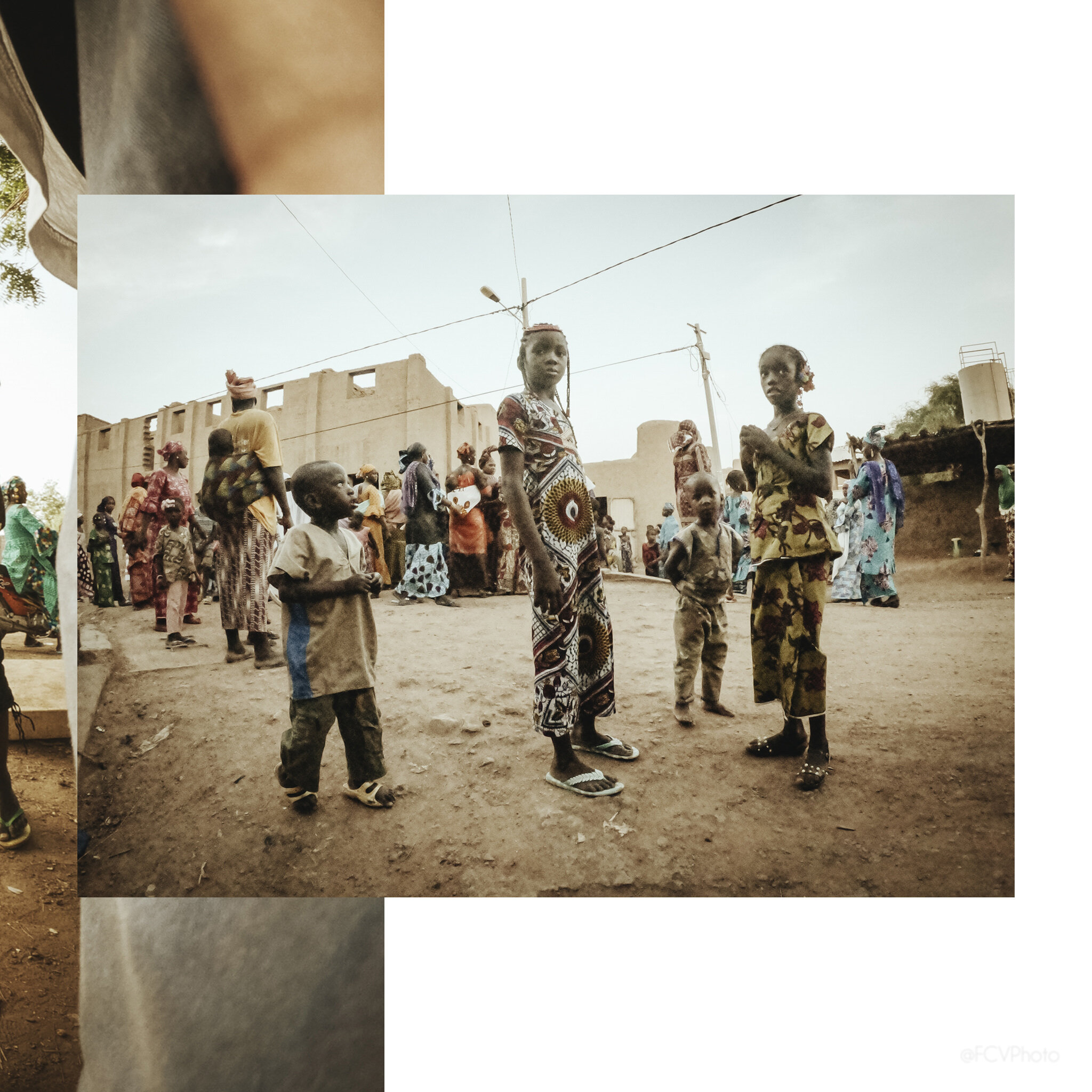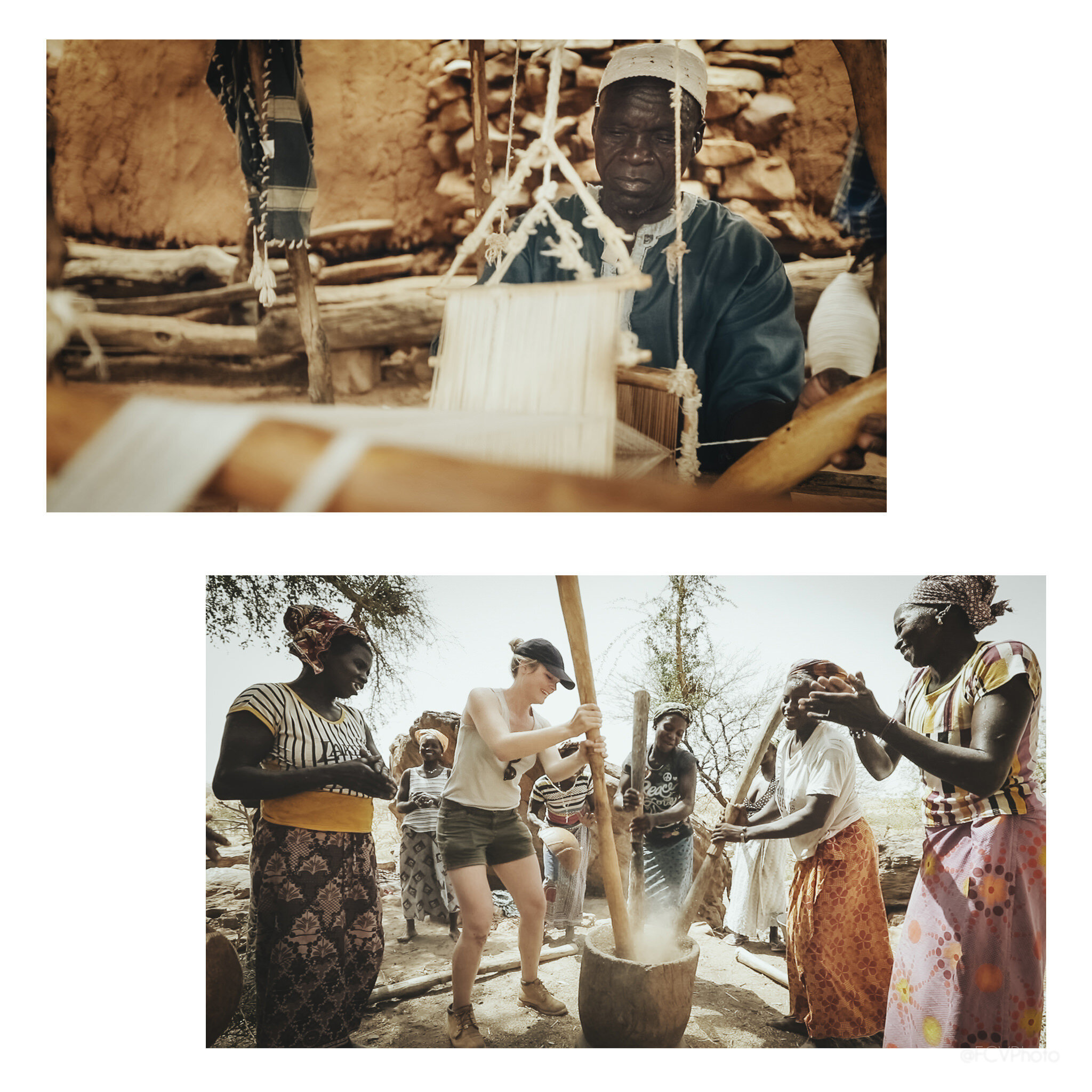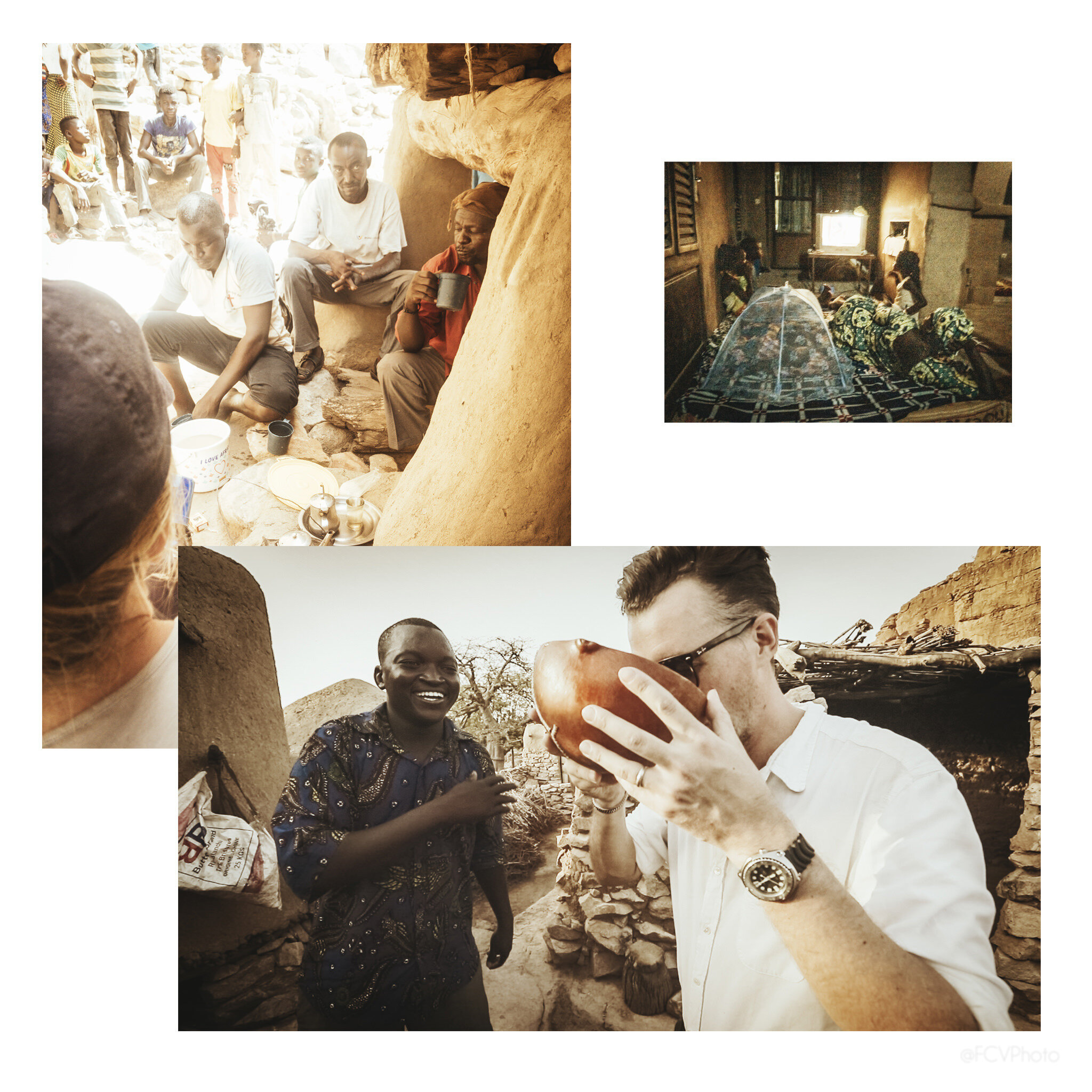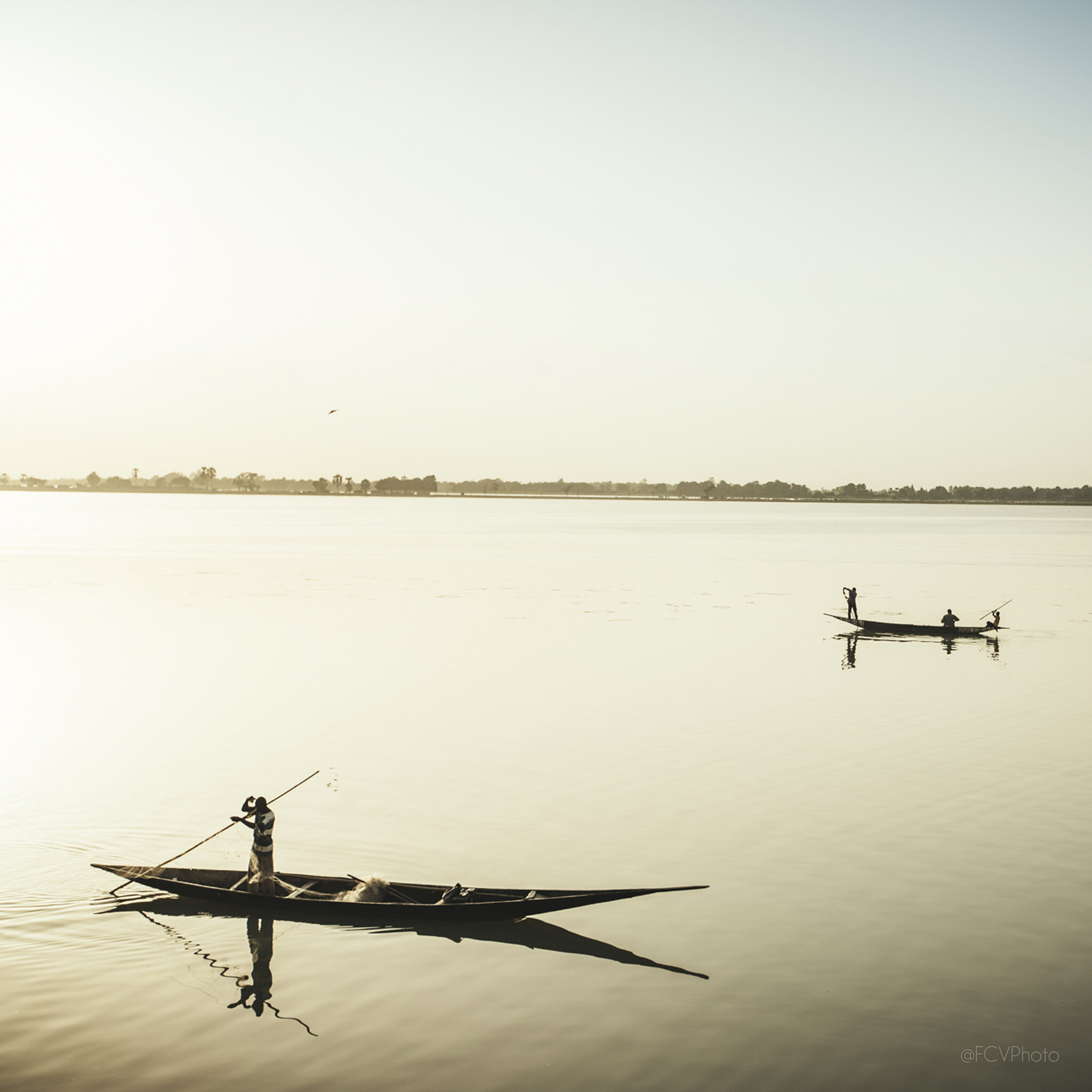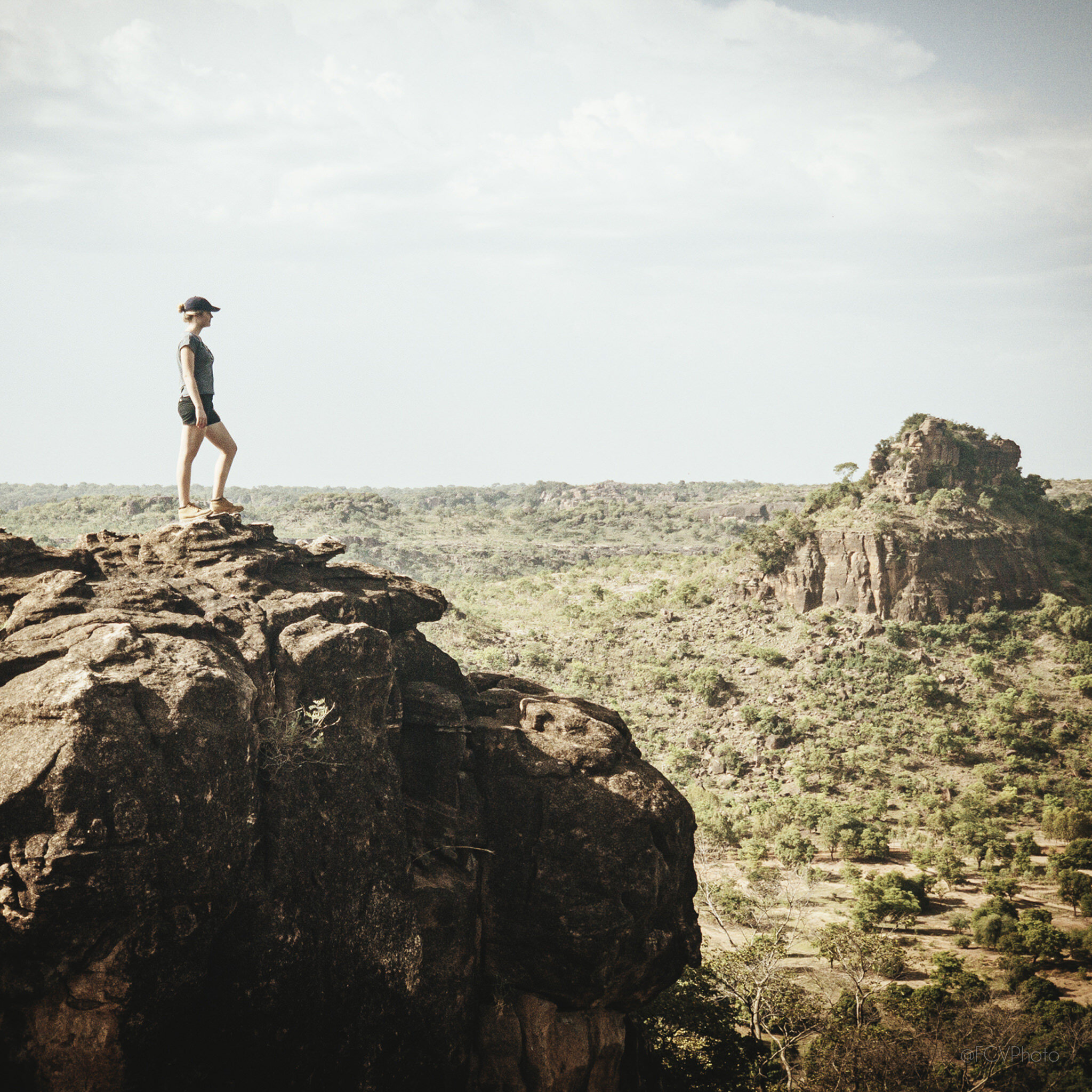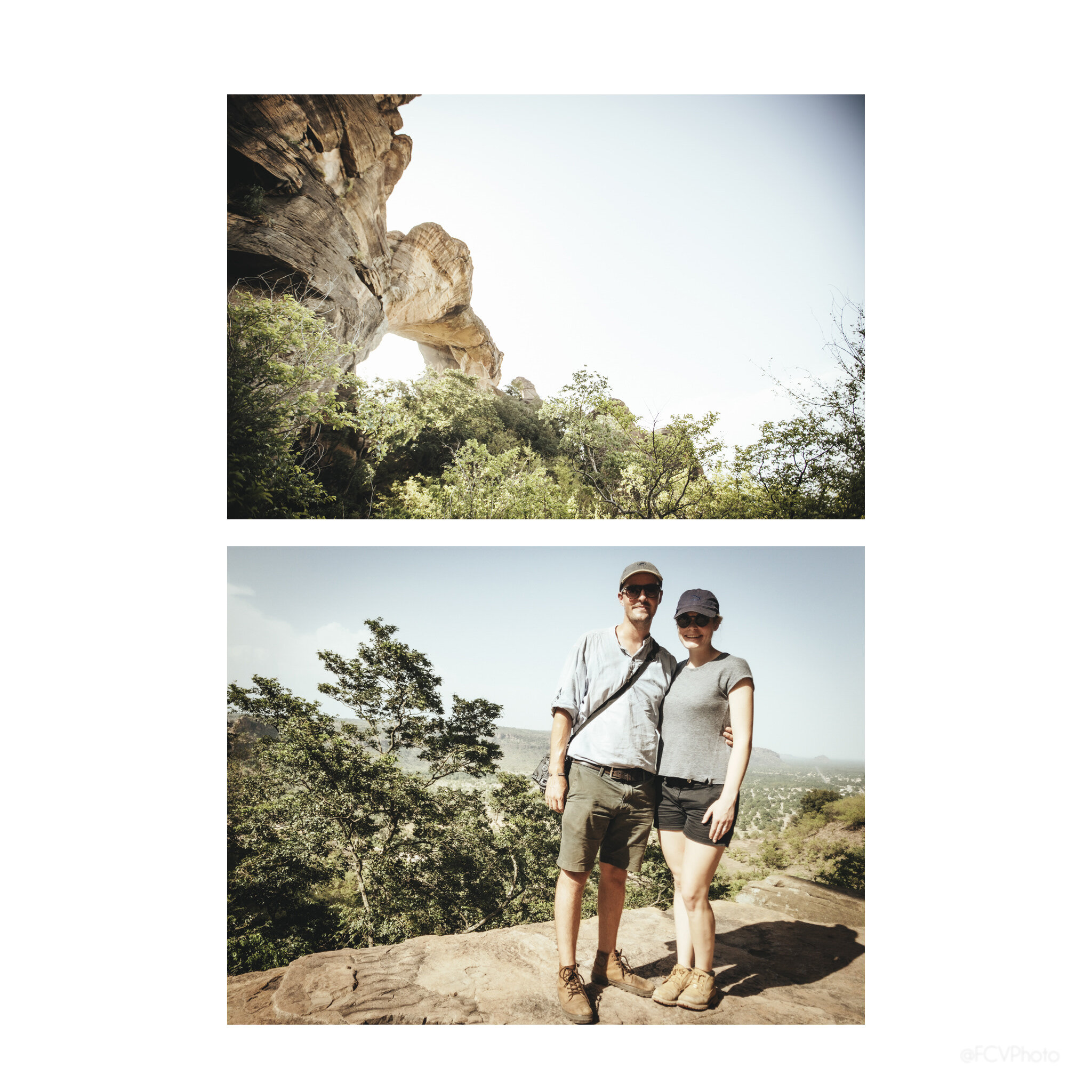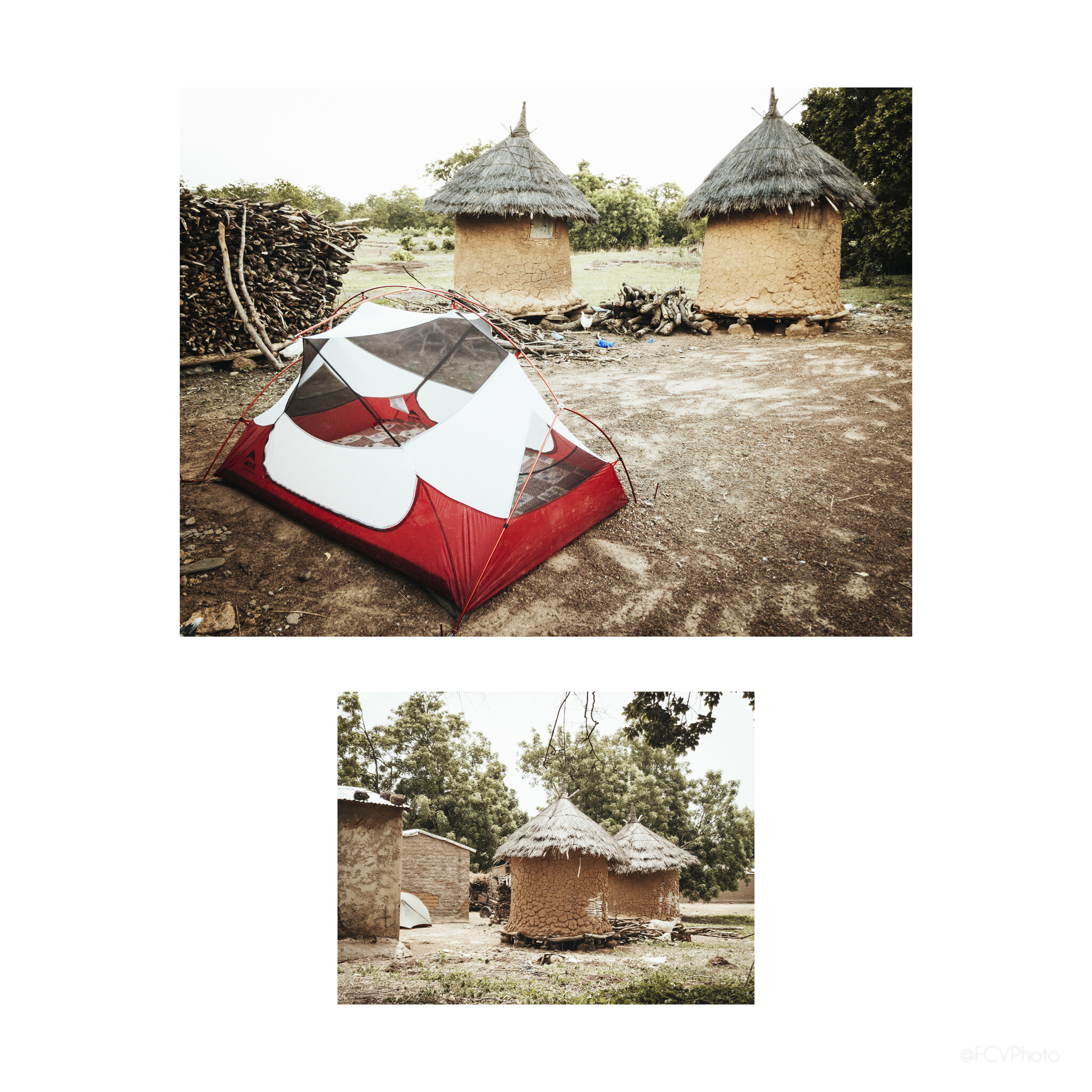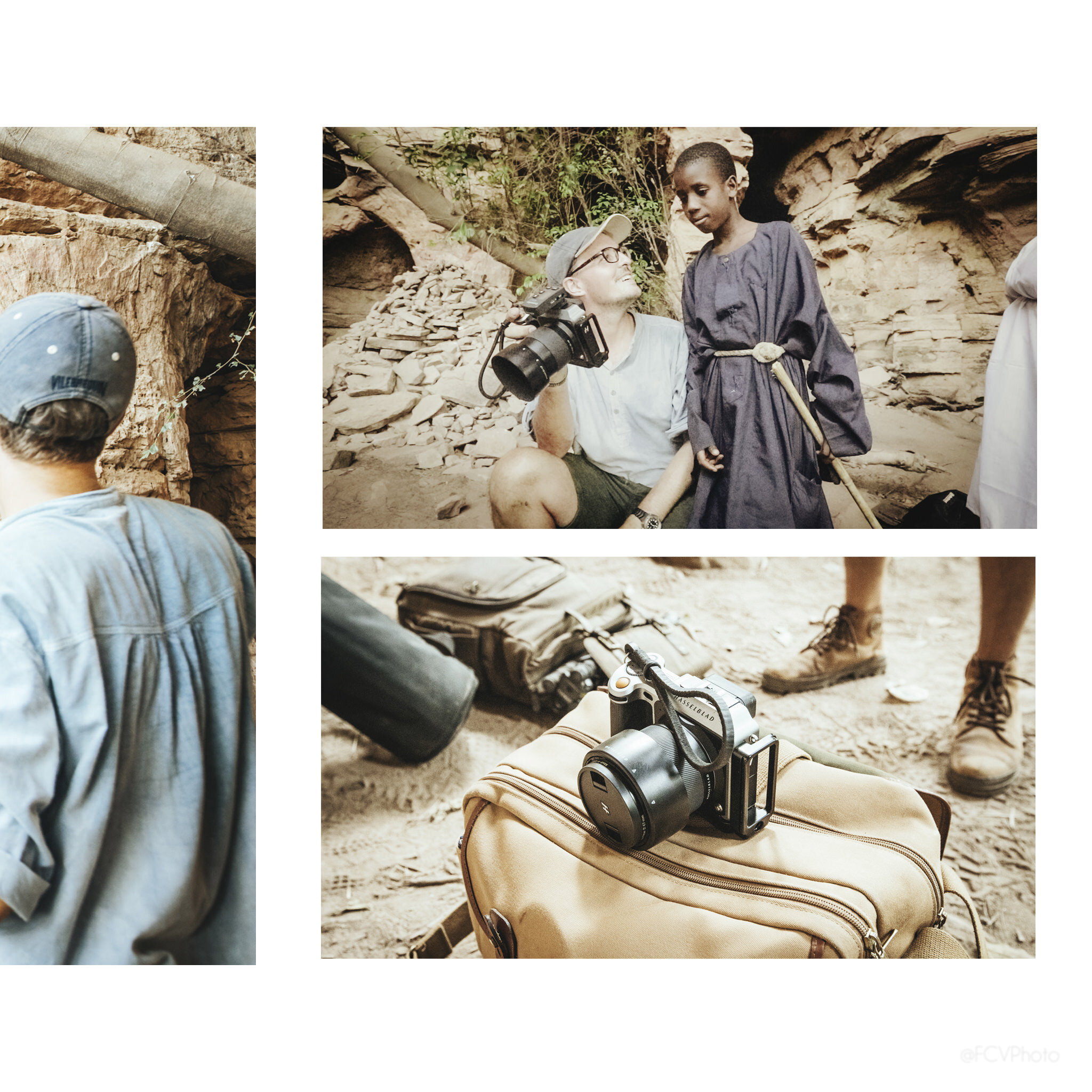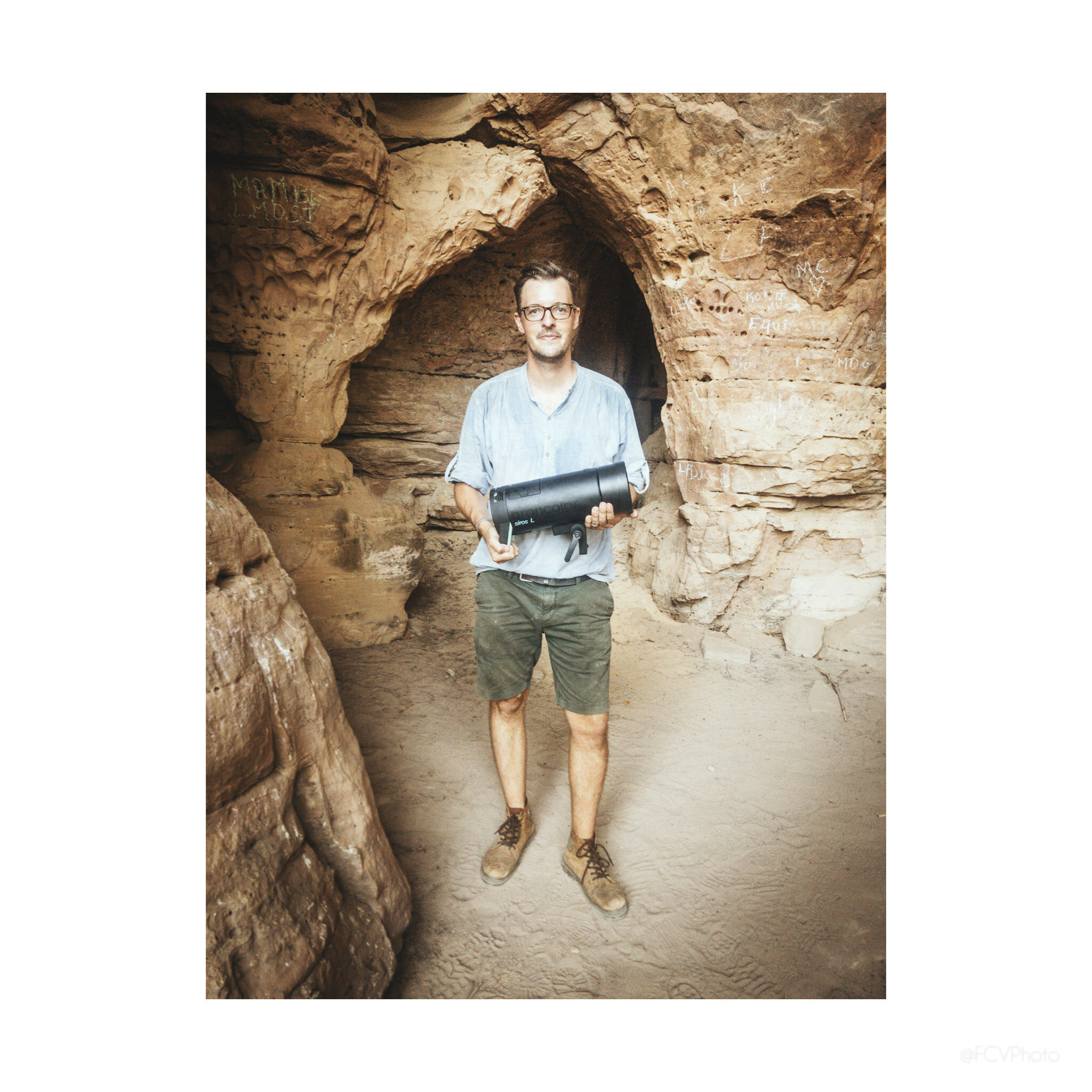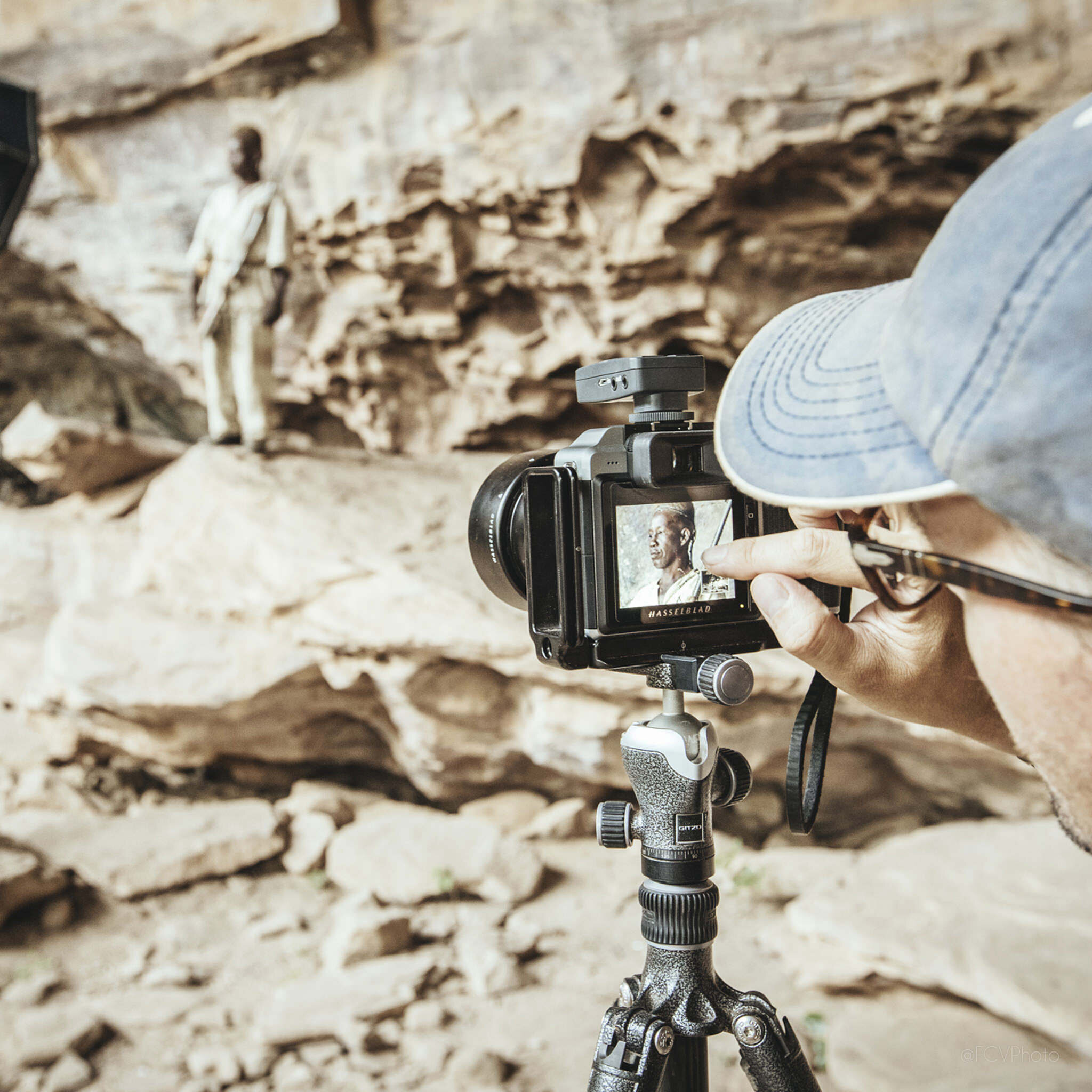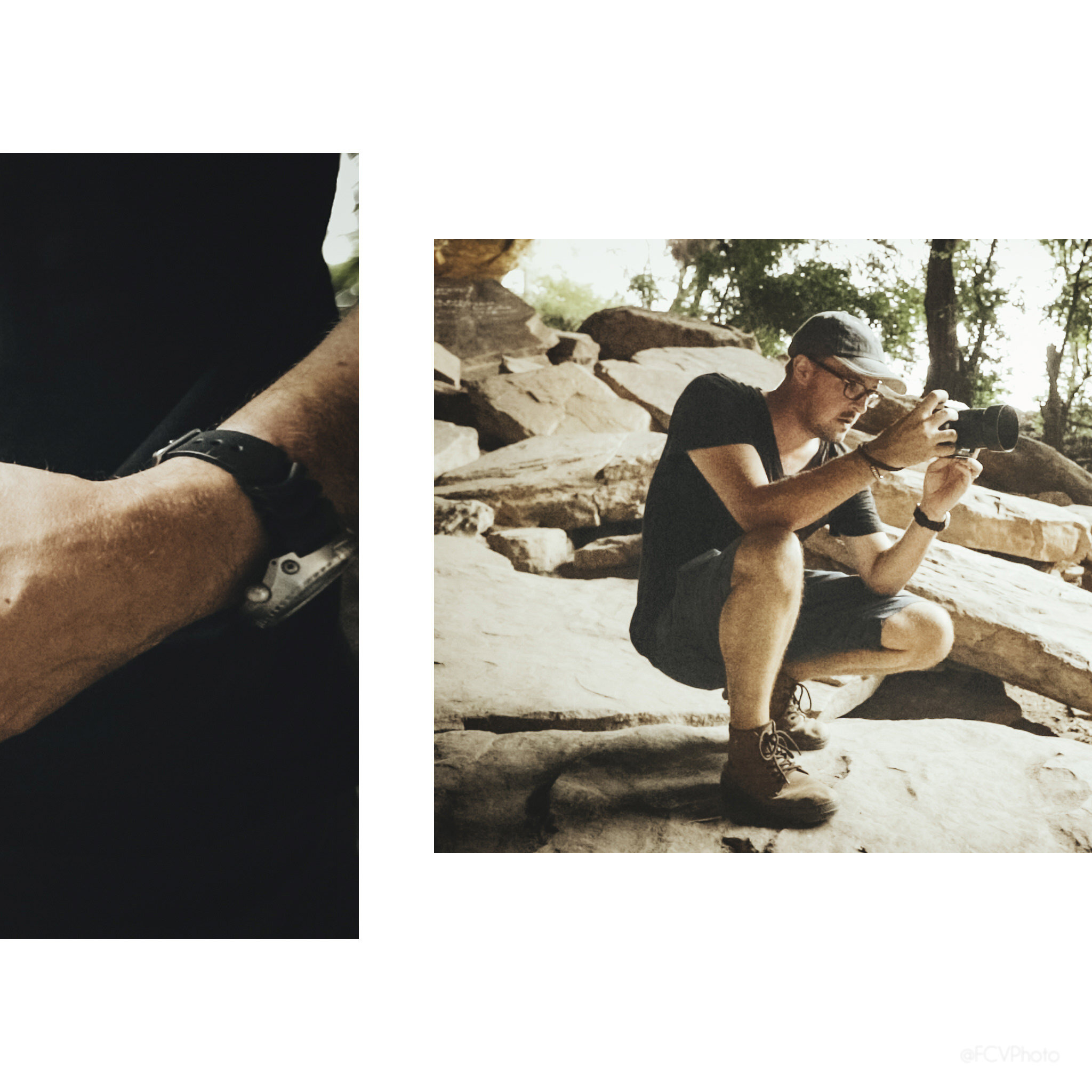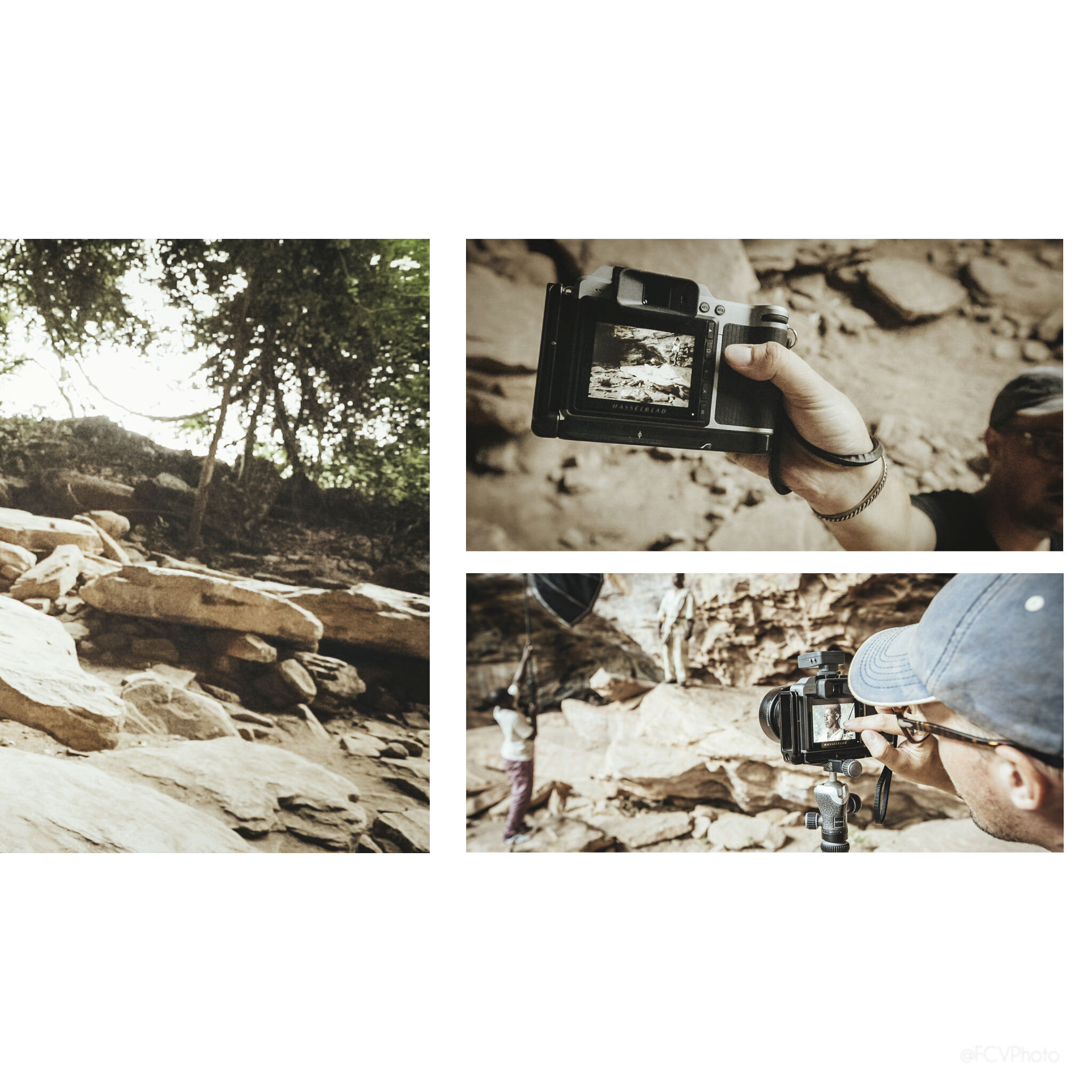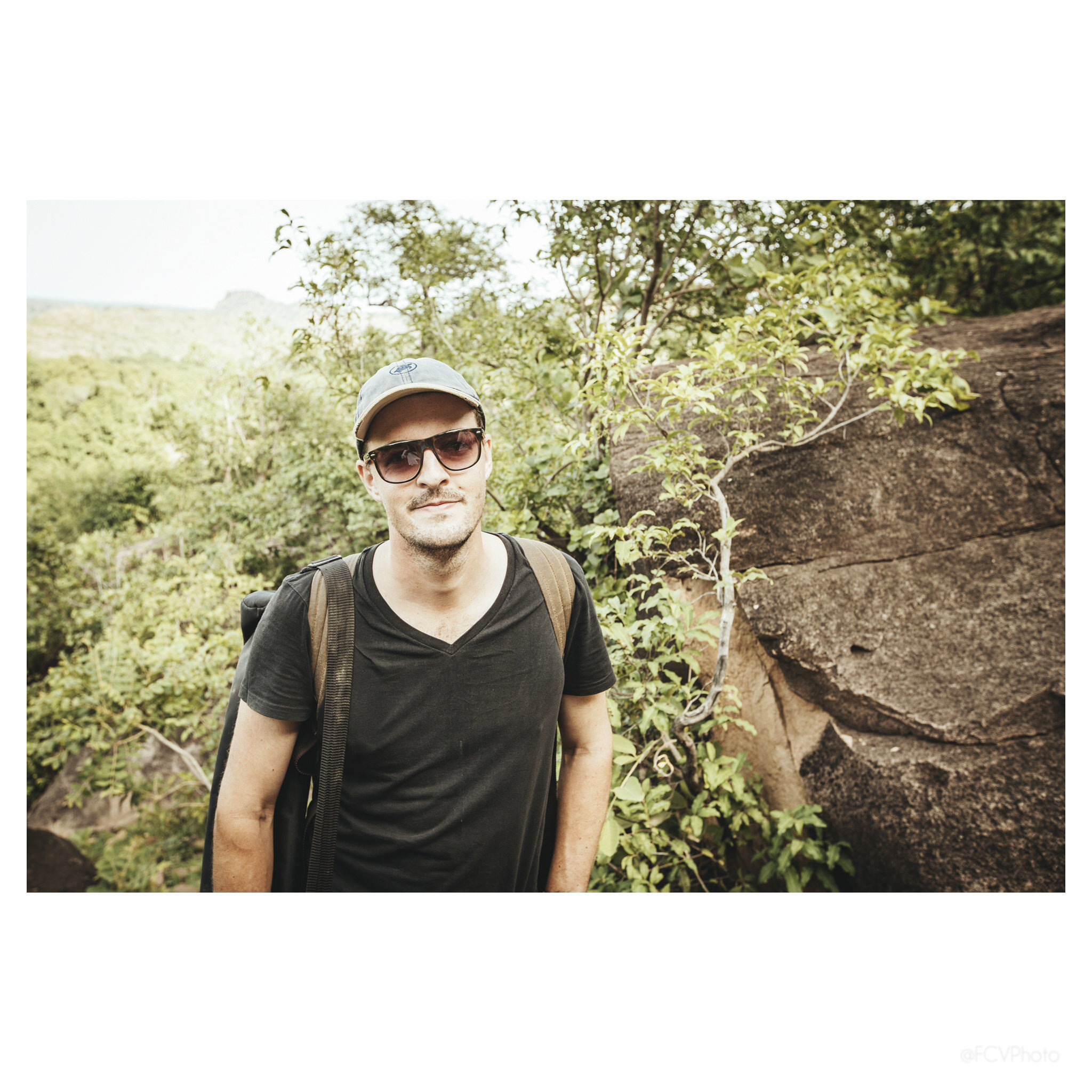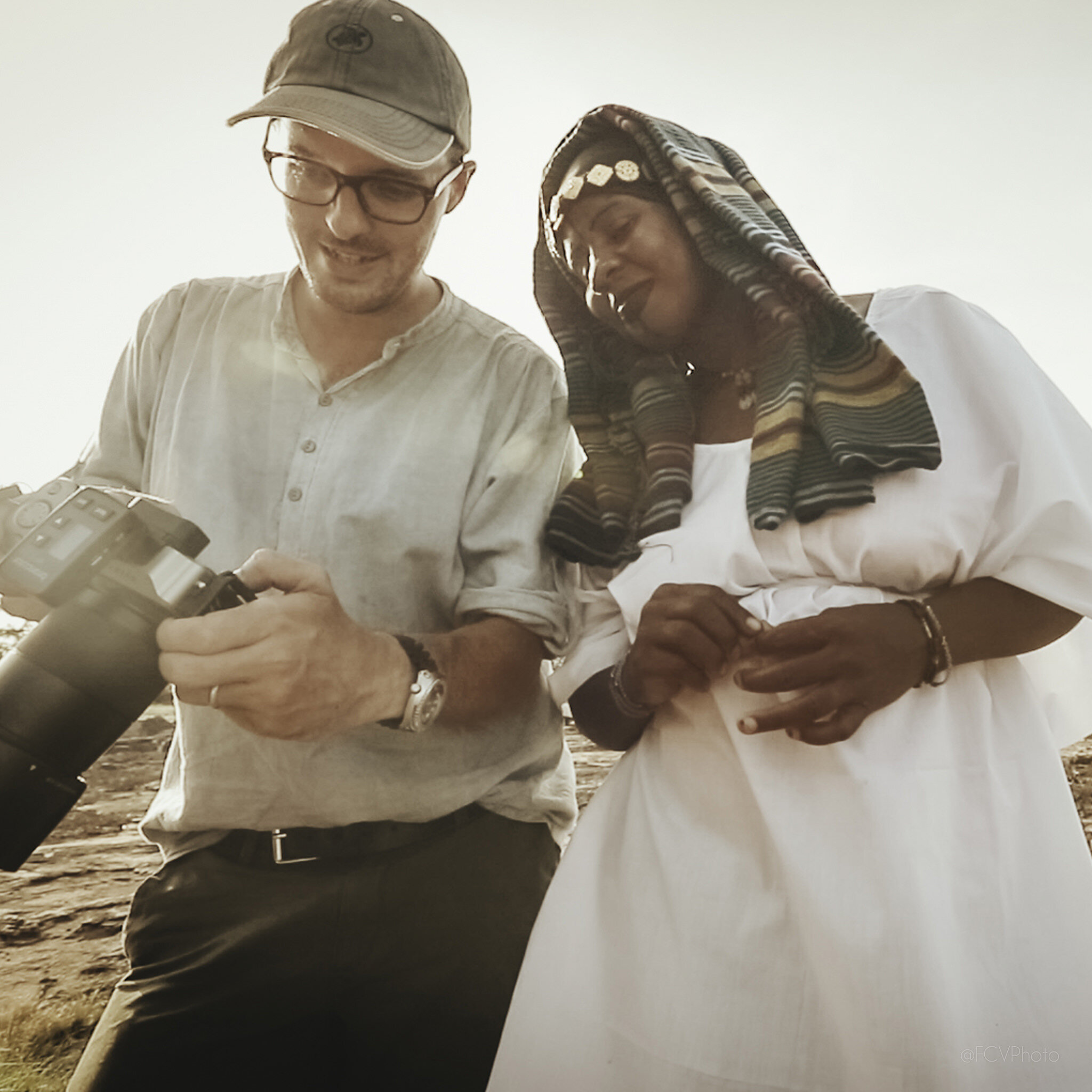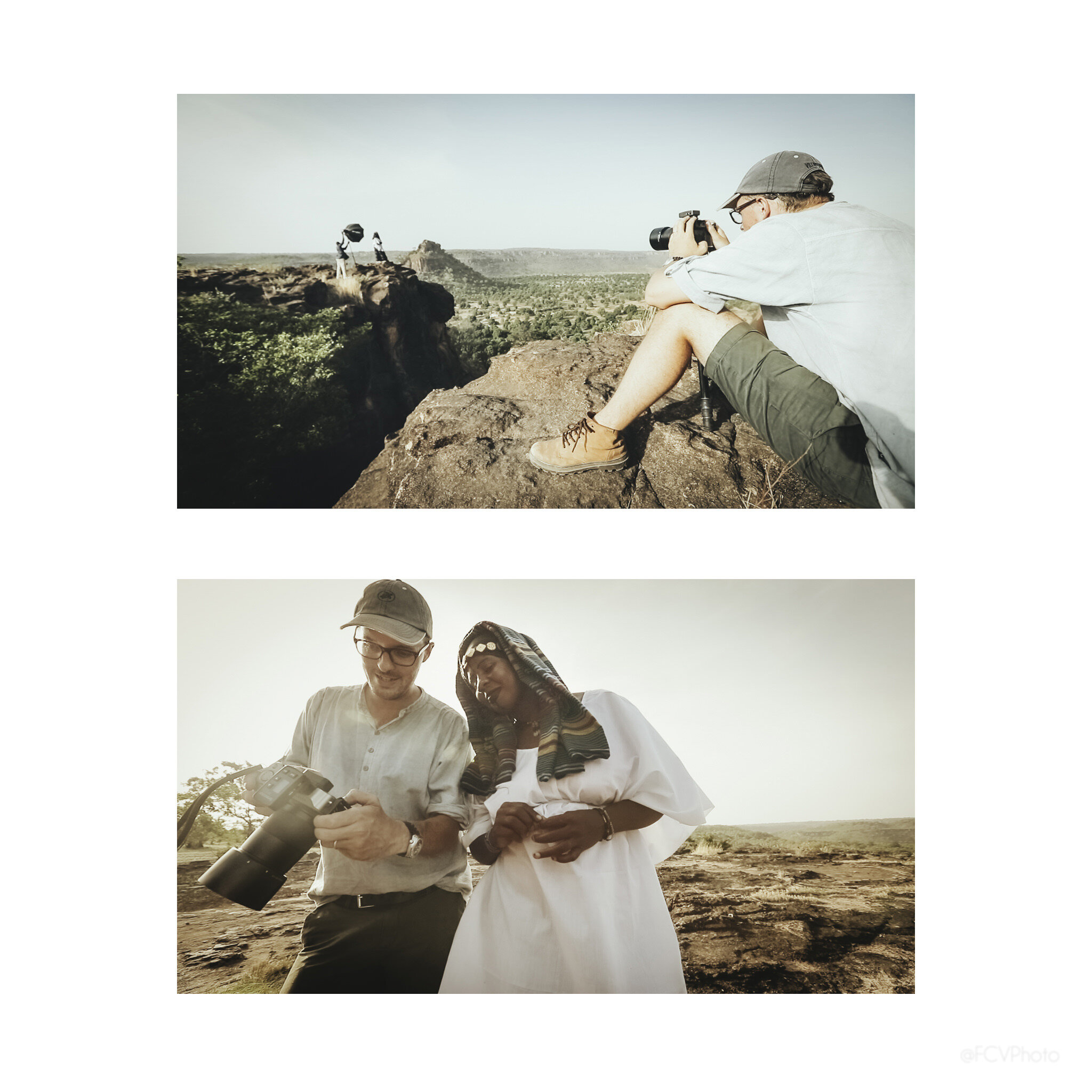Expedition Mali - BTS
I put sharing the behind the scenes images to a vote on my instagram page. The majority voted to see the behind the scenes images as well as the portraits, so here we go 🙂
Building on my photographs of traditionally practising African cultures, this year, my wife and I travelled to Mali, West Africa. Currently, a 'no travel zone' for tourists, we had to apply for special permission before travelling. This proved to be only the beginning of what was undoubtedly our most challenging expedition yet. However, it also proved to be the most rewarding.
With our passports only being returned to us 30 minutes before we flew and a 25-hour flight later, we made it to Bamako.
Mandatory photograph of our chariot for this expedition.. Sadly no Land Rover (or air-con) but that wasn’t going to stop us!
Hauling gear around is always a little stressful, but crossing the River Niger on this pirogue was a pretty awesome experience!
This tent seems to be cursed (or blessed, depending on how you look at it)... Every time we’ve used it - it’s rained... Although this night, it rained so hard we ended up relocating mid-storm at midnight to a nearby bozo village, out of fear of a flood. Amazingly morning came and all our gear survived and so did we!
It is market day on the opposite side of the river, so the locals are loading up the ferry with wares and livestock. This was quite something to witness as no one wanted to be left behind - even if it meant their cattle had to swim alongside.
Drastic times call for drastic measures.
It seems that wherever I take my drone, it decides to pack up. Sitting in Ségou, Mali, I decided that I’m either fixing it or binning it. Thankfully it turned out that the GPS module wasn’t properly connected... An easy fix and it’s been working perfectly ever since 😅
Travel days through Africa are always pretty exciting. Mali’s roads are an astonishing mix of ingenuity and endangerment.
The rule: every inch of space must be utilised.
From motorbikes to people and goats on the roofs of busses.. to cows in their hold. Even our two duffle bags strapped to the back of a bike seemed rather perilous, though not to the rider.
Where there’s a will, there’s a way.
This is where we leave the car behind and go on foot. With average temperatures of 37’c, hiking through these regions proves challenging, particularly with +/- 25kg of photographic equipment on our backs. However, as we approach the rim of the escarpment, it all becomes worth it. Gorgeous villages, people and landscapes - I couldn’t ask for more!
.
We had spent the night on the roof of a local family’s home. The sun rose to reveal the landscape around us - towering rock spires. Today would prove to be a busy day, meeting the spiritual leaders and hunters of the area to ask for permission to explore and explain our project.
We’d soon learn that the Dogon have specific areas of great significance. Some we could go to, some were reserved only for men, some only for women. Others were off limits to all but the elders. However, most of these sites couldn’t be in a photograph, even if it was in the background. This was an added layer of complexity but forced us to seek out areas that we might have perhaps otherwise overlooked..
The first few photographs of the incredible Dogon masked dancers.
The masks are sacred to the Dogon. They are worn at significant events, such as a ‘dama’ (funeral) and ‘sigui’ (a feast which takes place every 60 years, when the star of sigui reveals itself, and the Dogon ask the ancestors for forgiveness). It was therefore a great privilege that the spiritual leaders allowed us to witness and document the dancers outside of these events, and not being Dogon ourselves.
In order to wear a mask, a Dogon boy must first go through a process of circumcision, learning the sacred mask language of Siguiso and the steps to the dance associated with the mask.
The dances are witnessed only by men who have undergone this process. Women and children are not allowed to attend, or see the masks, unless they are born in the year of Sigui.
When the masks are worn, the wearer takes on the spirit the mask portrays. They are no longer viewed as ‘human’ but a spiritual being and are connected to the ancestors. When not in use, the
masks are stored in caves or cracks in the rocks, these areas are sacred.
The Dogon region is fascinating. We’ve been granted the most incredible access, by not only the spiritual leaders and masks but also the hunters. Truly a photographic paradise!
However, it is not without its challenges! The days are extremely hot (+/-45’c), with little shade outside of the villages. Sweating through my shirts and drinking at least 5 liters before 11 am seems to be the norm... Despite everything, our gear’s performing flawlessly and Jibby’s legendary ‘Jiggy Jiggy Tea’ is keeping the team in good spirits.
Word spreads fast in these parts. We get back to camp to find half a dozen hunters sitting there wanting their portraits taken.
At the end of the afternoon, we gather so that I can print the photographs.
Content, one of the hunters wanted to show me his gun, which quickly erupted into life with a blundering black powder misfire, instantly diffused by cheers within the group. It’s wild out here and I’m hooked!
In my element!
Today’s photographs show the intricacy of the masks. Their clothing made from baobab fibres, naturally dyed and woven together to create these incredible outfits. The masks themselves vary from being +/- 10ft tall and adorned with feathers, to utterly terrifying, featuring carved mouths complete with human teeth.
The contrast of the colours and textures against the rocky landscape has me unusually indecisive. Everywhere I turn I’m seeing a potential photograph.
Today we move to the Dogon villages at the base of the escarpment. The morning graces us with an incredible sunrise. We leave with warm goodbyes and a hike back to the truck before beginning our descent into the Sahara.
And just when I thought it couldn’t get any more exquisite, we find ourselves in ancient Tellem turned Dogon villages built into the cliff face. I’ll be posting clearer photographs in the next few days, but the Tellem are recorded to have inhabited these parts around the 11th Century. Many of their buildings are still used by the Dogon today and some, according to an elder, date back to as early as 3000BC! We’re speechless!
Today we were fortunate enough to witness a Dogon masked dance.
Dances are performed at significant events, such as a ‘dama’ (funeral) and ‘sigui’ (a feast which takes place every 60 years, when the star of sigui reveals itself, and the Dogon ask the ancestors for forgiveness). They are witnessed by “insider men” (men who have undergone circumcision, who are learning the sacred mask language of Siguiso and the steps associated with the masks, and men who were once wearers of the masks themselves). Women and young children are dismissed and have to stay far away from the masks unless they are born in the year of Sigui.
Not being Dogon ourselves, it was, therefore, a great privilege that the spiritual leaders allowed us to witness and document the event.
It is believed that the Dogon are descendants of eight ancestors who fled Manding Country around the 12th Century. These ancestors followed the 'Sigui star' north until, unexpectedly, the star disappeared. Seeing this as a sign, the ancestors settled, taking shelter inside a vast baobab tree. To this day, baobabs trees are regarded as sacred to the Dogon people.
At the base of the escarpment is a baobab forest, which made for a perfect backdrop to photograph Tegué and Eli, the two Dogon elders in this post.
For the first time, we’ve been able to photograph the masks amid the ancient Tellem structures. Many of these buildings are still used by the Dogon today and some, according to an elder, date back to as early as 3000BC!
Understandably, many of these areas are regarded as sacred, and off-limits to all bar the spiritual leaders. Respecting this we didn’t visit or photograph these parts. However, we were granted permission to photograph an area which, to me, appeared equally magnificent.
I’ve been in awe of these villages. They all have inexplicable energy. At the base of the escarpment, the cliff face towers above you while sound bounces back from all angles. There’s no doubt that this place is ancient, posing the question - how did the Tellem build the network of houses into the cliffs, and what must it have been like to live here back then.
And so we head south, braving our equipment in a sinking canoe and putting the truck on a 'ferrari' (our translator's interpretation of 'ferry')... We're hoping to spend time with the Fulani people, starting with a couple of days in the mud city of Djenné. Exciting times ahead!
We regularly attract a bit of attention when trying to take photographs in town, but this day was on another level 😂
Djenné is breathtaking - a city made entirely from mud!
Probably best known for its Great Mosque, the largest mud structure in the world and somewhere we were fortunate enough to be invited into by the Imam.
On entry, its thick and towering walls block out all of the bustling city noise, replacing it with a calm that can only be described as spiritual. The view from its roof was also second to none — an incredible experience.
One of the greatest things about travelling in Africa is the people one meets. From the welcoming handshake of a stranger to those who invited us into their homes, offered us tea, beer and even a little encouragement when trying to pound millet...
There's nowhere on earth quite like it...
Heading south in search of the Fulani has us stopping over in Ségou. Cold beer, tablecloths and cell reception all feel a bit alien, but the view of the Bozo fisherman as the sun sets is truly magical.
With the arch of Kamandjan at our back and the Koulikoro Region before us, there's no wonder these lands are filled with mystery and legend. We had a blast exploring these parts and the stars from our tent were second to none!
The walls of this cave were covered in writing, but it’s not graffiti. People from all over the region come to this cave and write wishes onto the rock. It is believed that they will be answered by the ancestors, and when they do, one must return to perform a sacrifice and place a stone on the pile that has accumulated near the opening.
Though we didn’t make a wish, we were blessed with having met Modibo and his father. I also find myself grateful for my team and equipment. Thousands of kilometres through the toughest of conditions and it hasn’t skipped a beat!
This cave is well known in the area for having extremely pure water which gets filtered through the rock, year-round. We were also told that the view from the cave was spectacular, so we decided to make the hike.
En route, we met two hunters, Bomary and Bandjougou. They agreed to let me photograph them, so we hauled our gear up the mountain.
It can be quite challenging meeting new people and then only having a few minutes to set up, find a composition, dial in the lighting and create a decent image. Thankfully these new digital mirrorless cameras make the process a little easier. Being able to get real-time feedback on things like exposure and focus has sped up my process significantly.
And that's a wrap! I couldn't have asked for a better end to what has to be one of my favorite countries to date. Photographing Fante looking over the Koulikoro Region from the arch of Kamandjan was truely spectacular!
Mali, I hope to visit you again some day! Thank you for having us..




